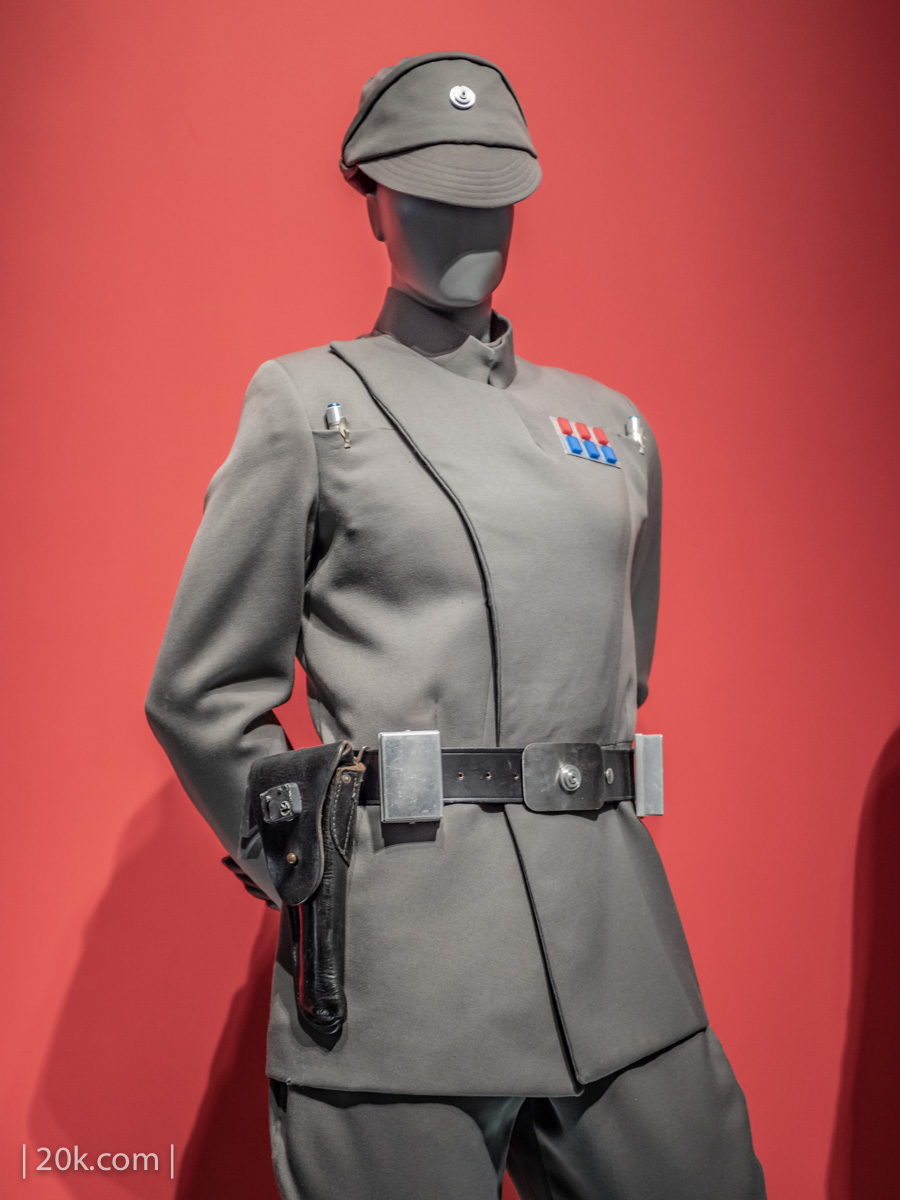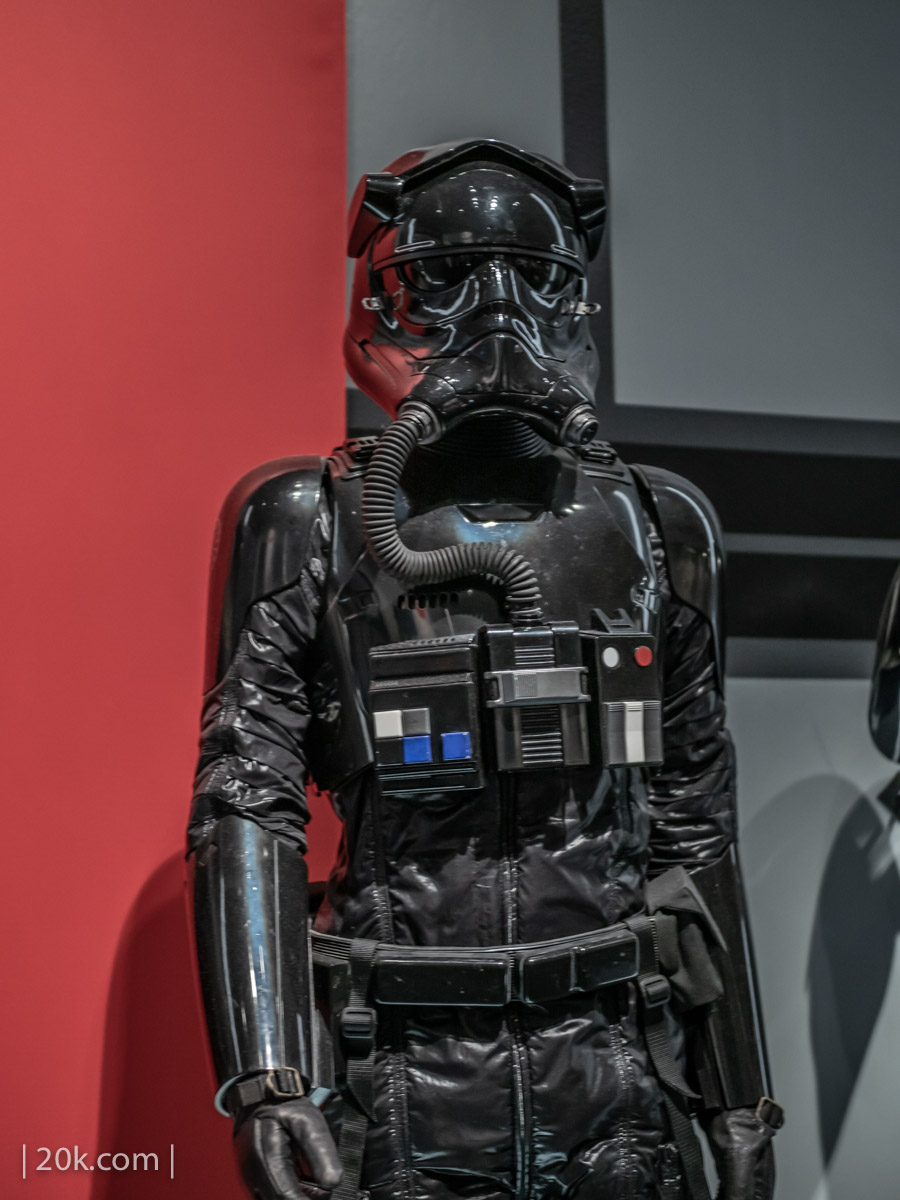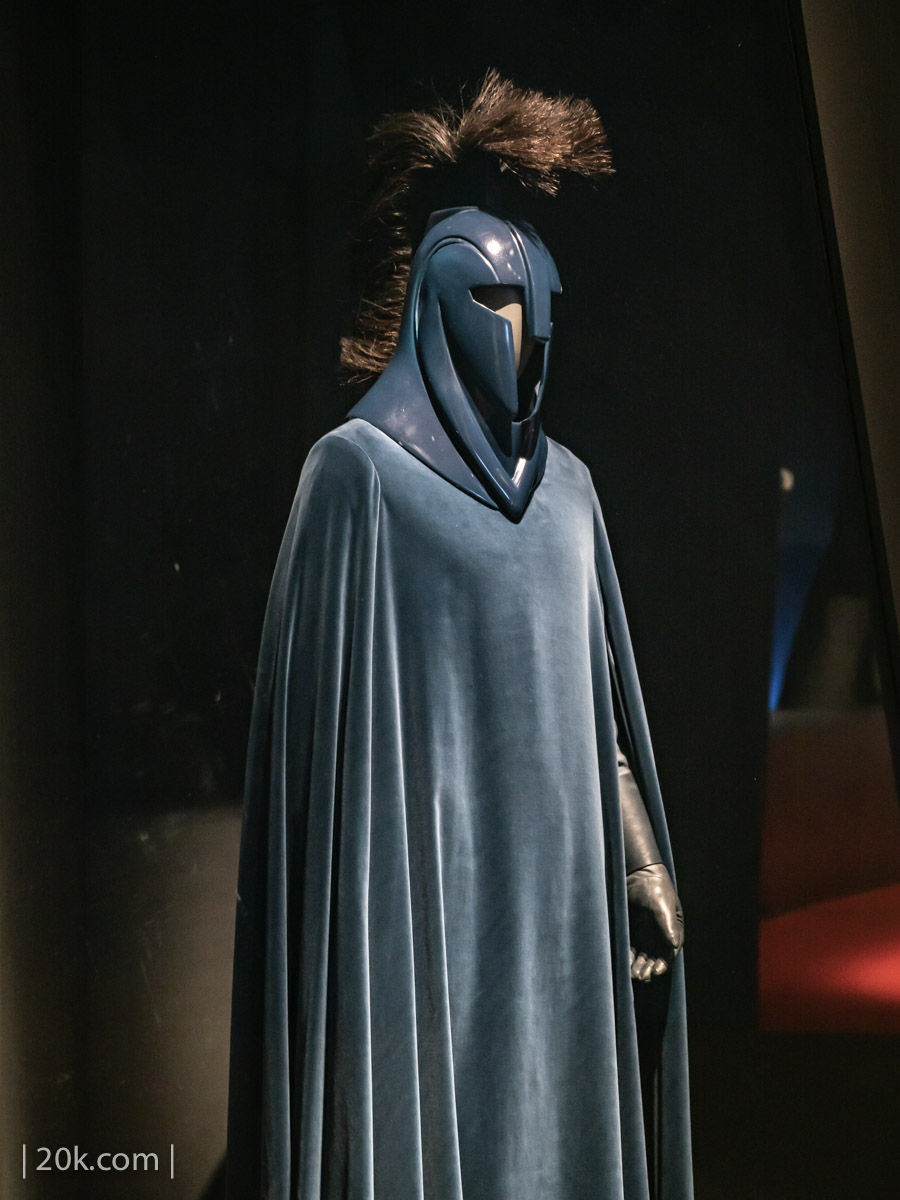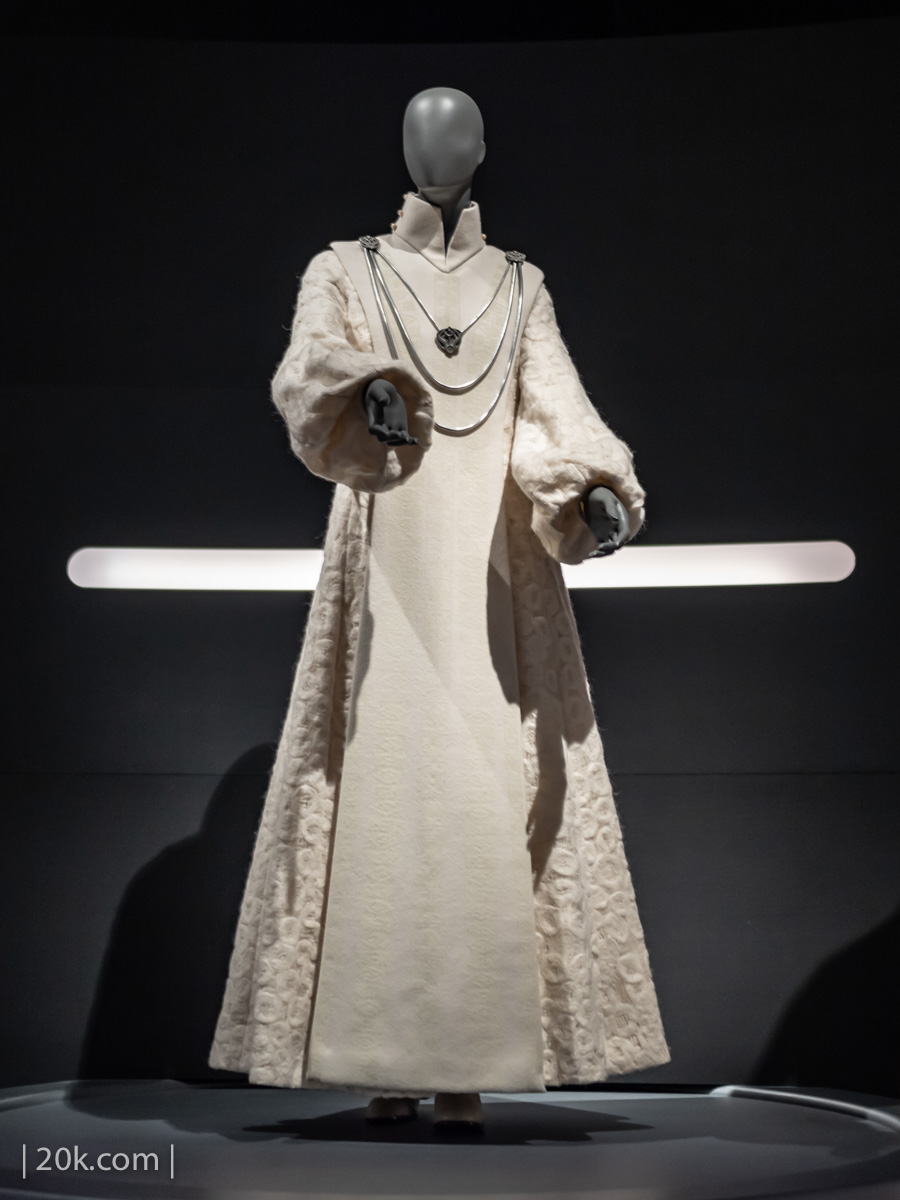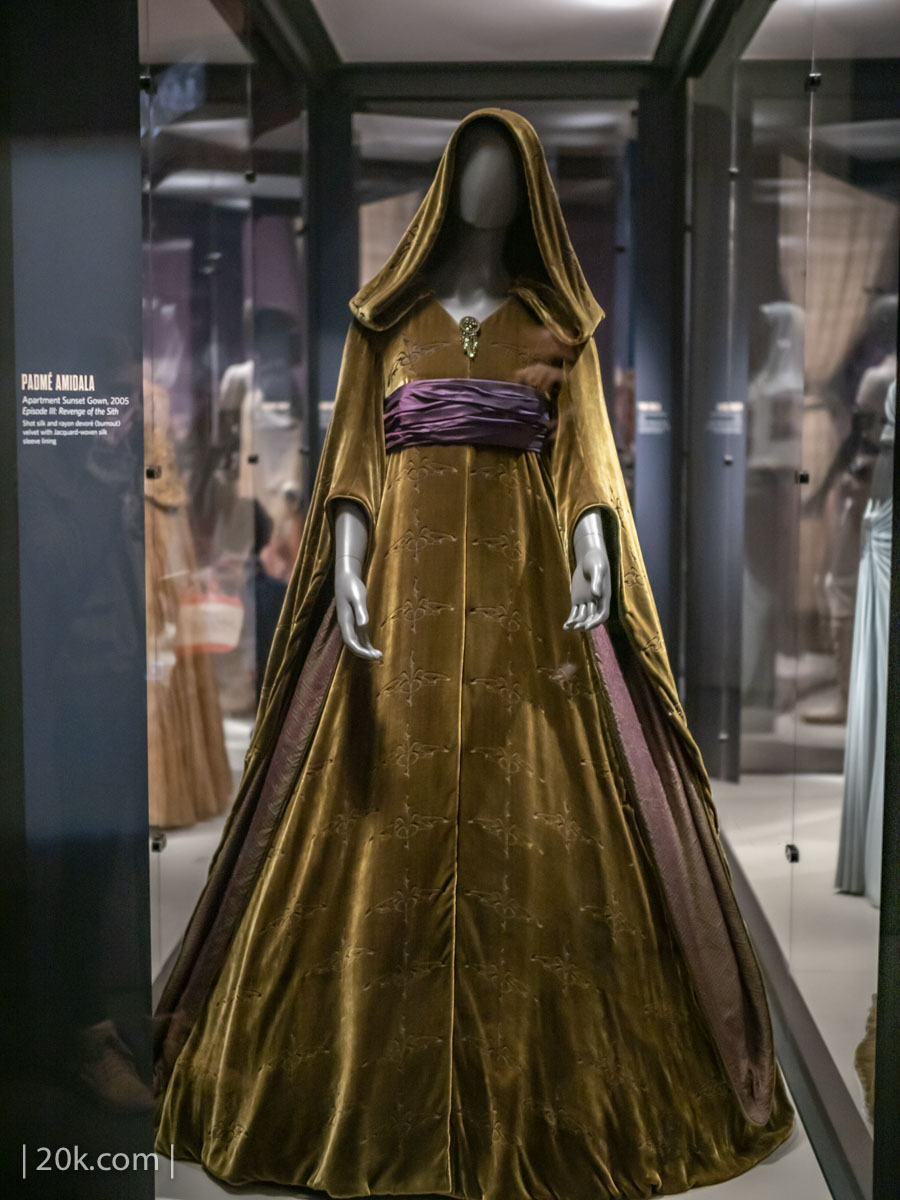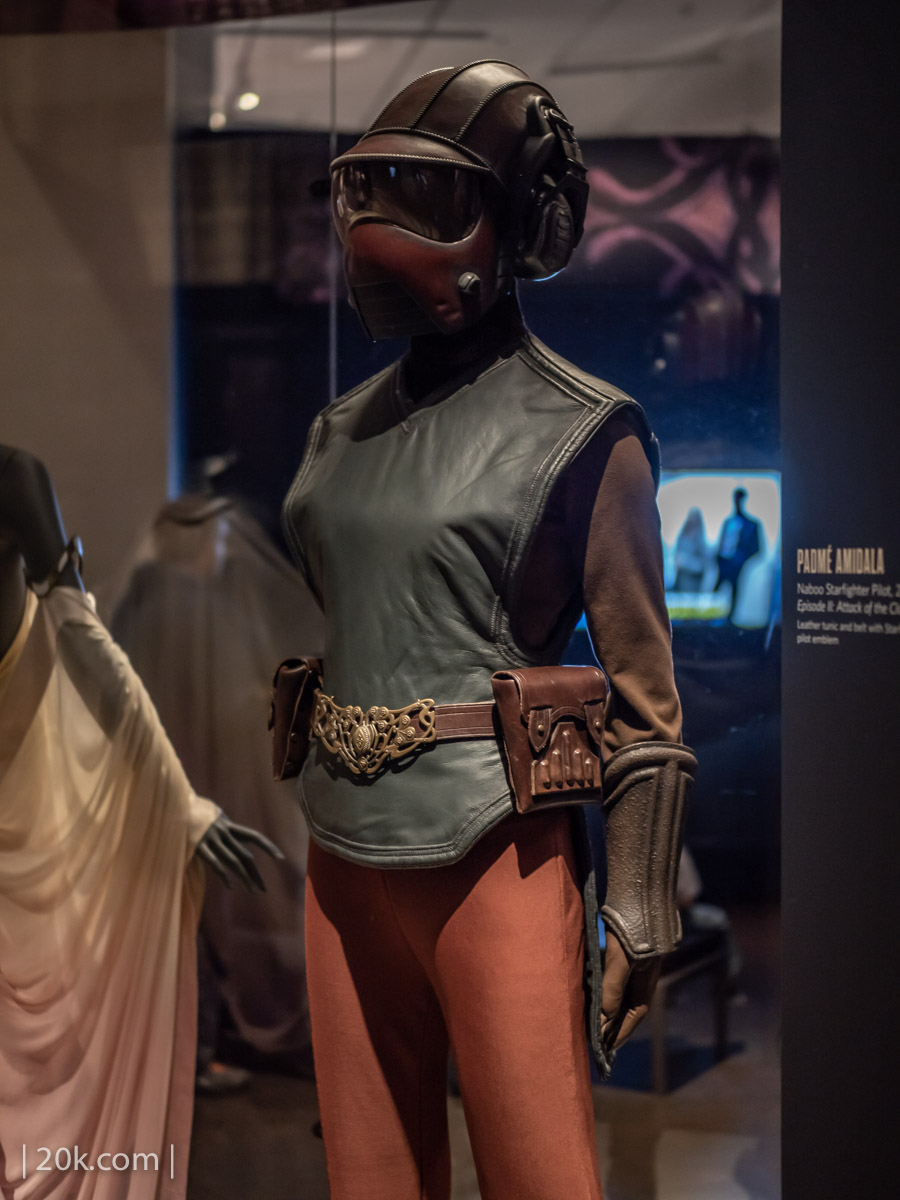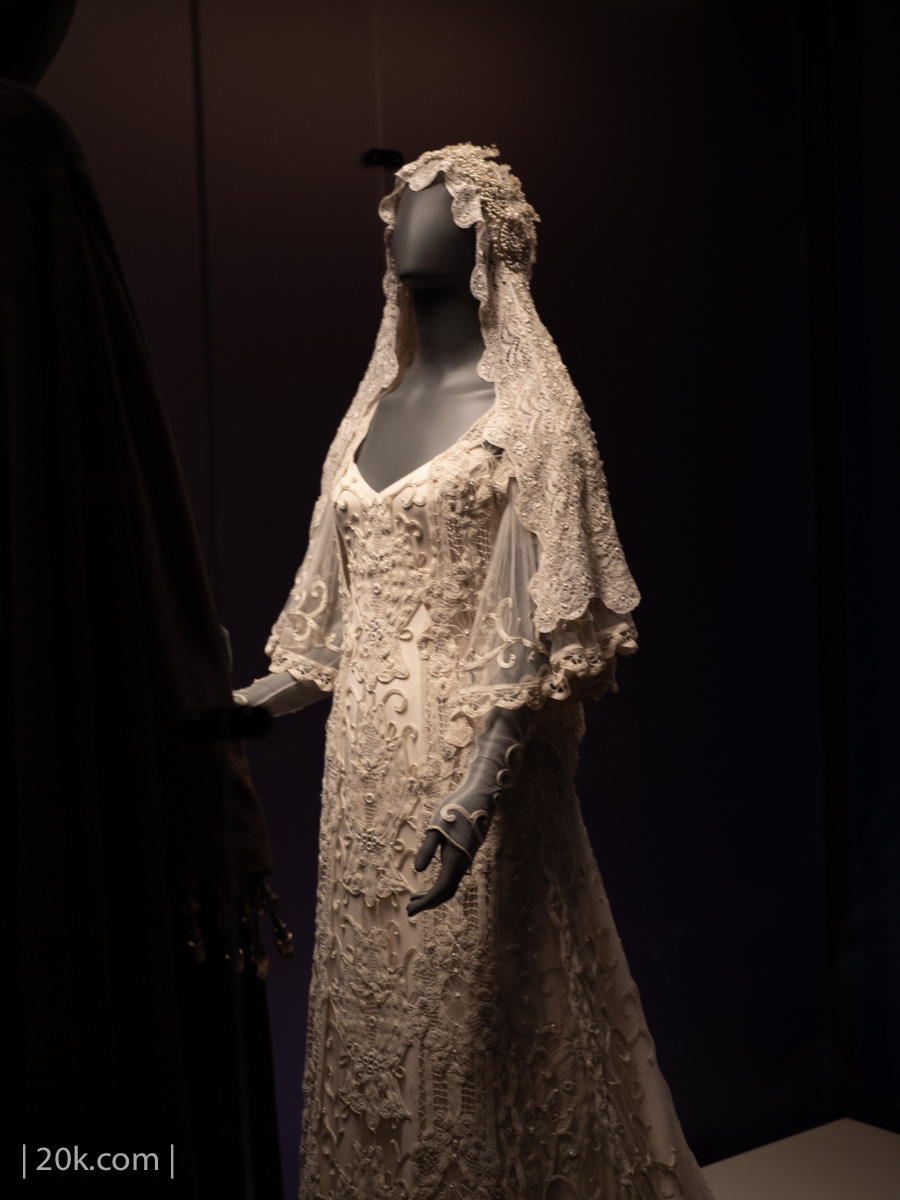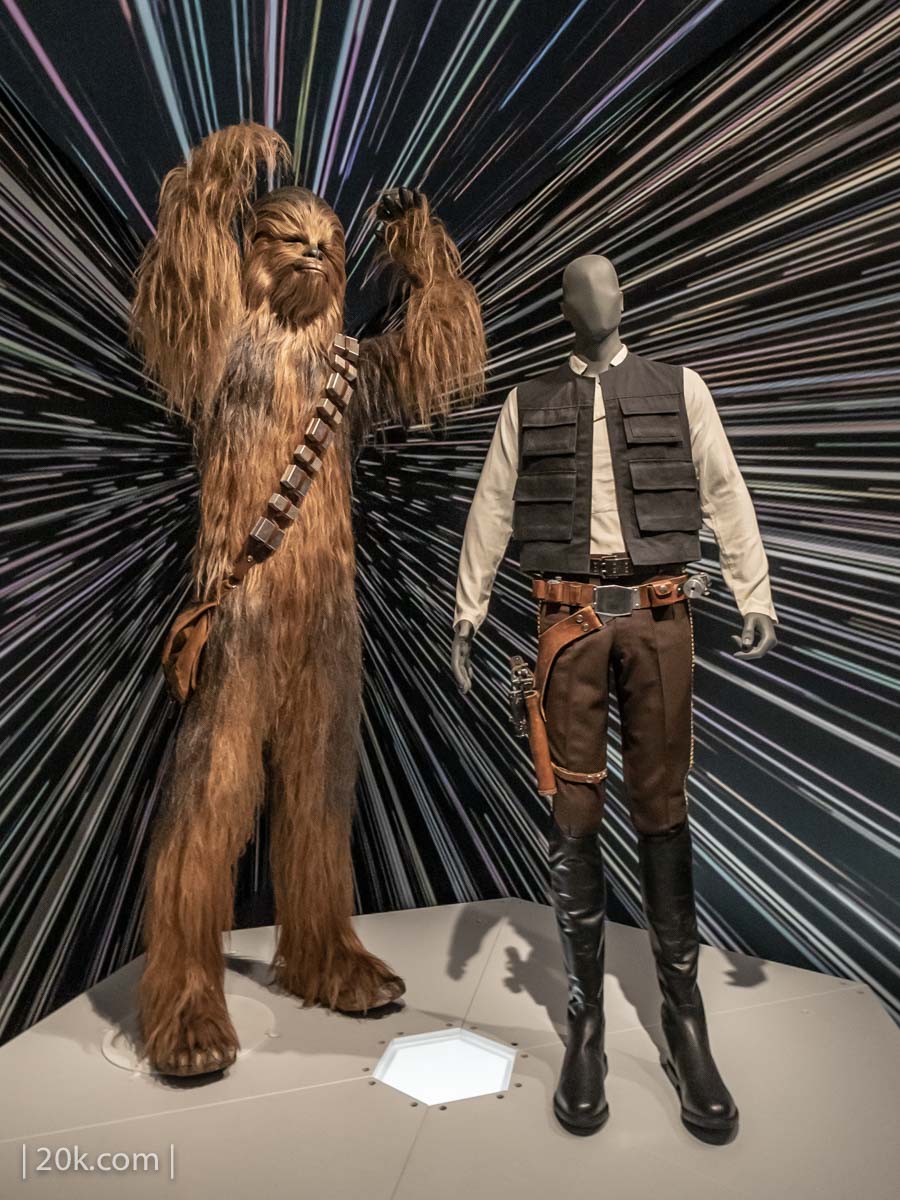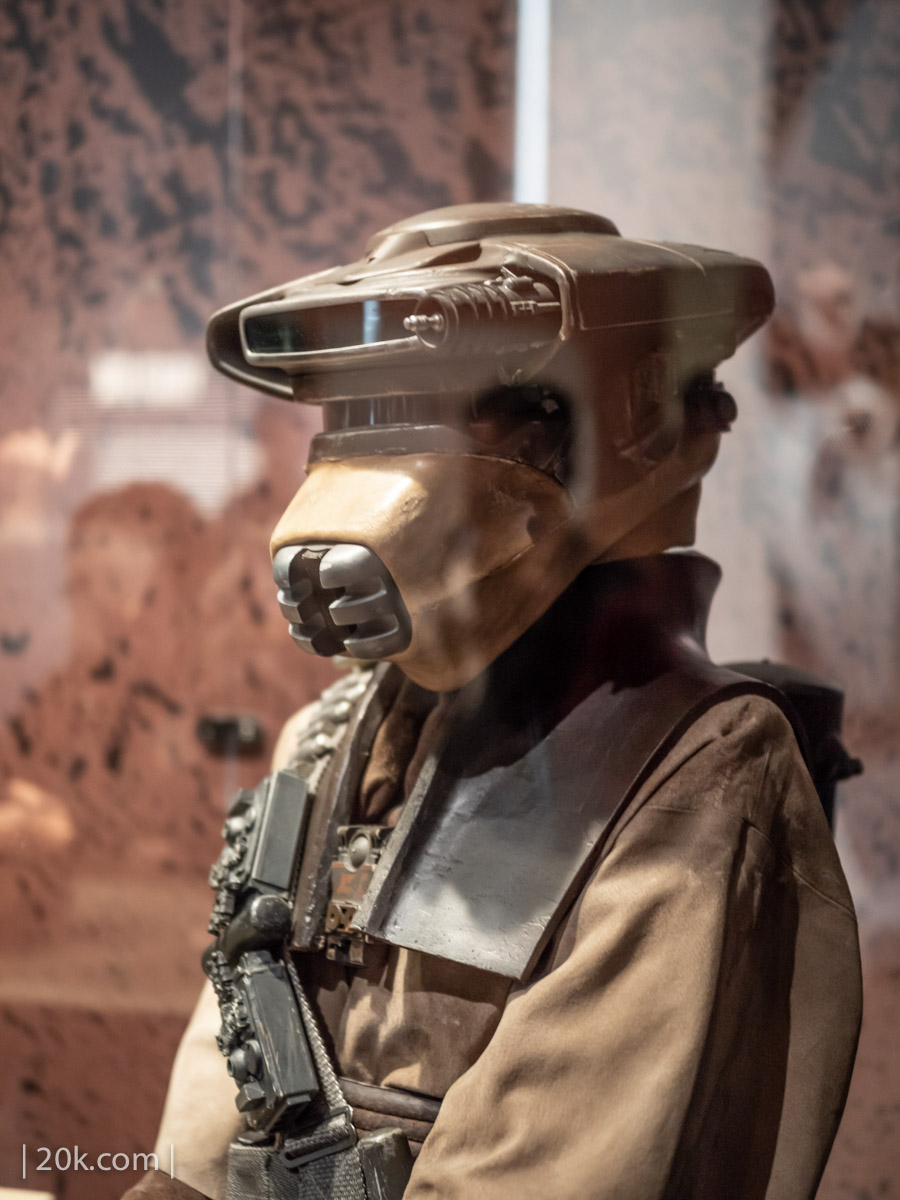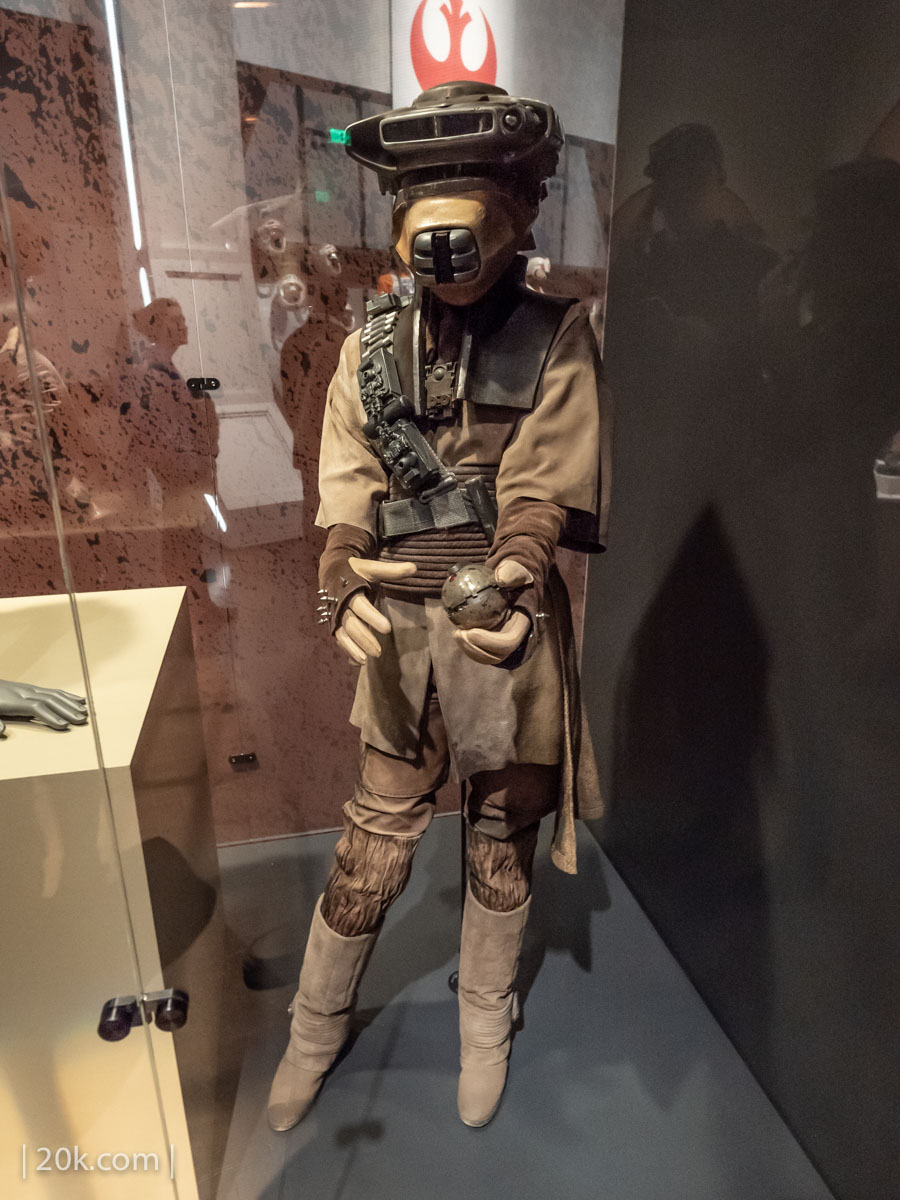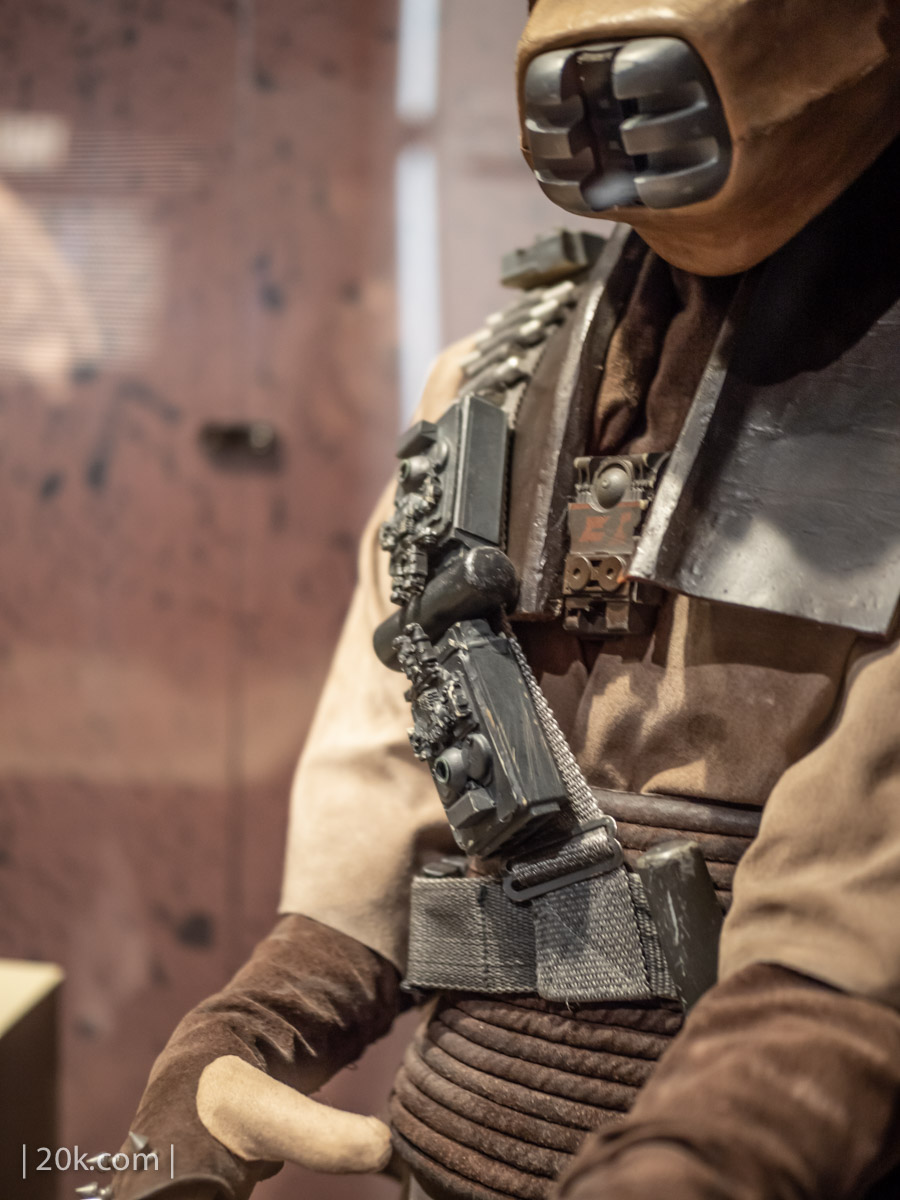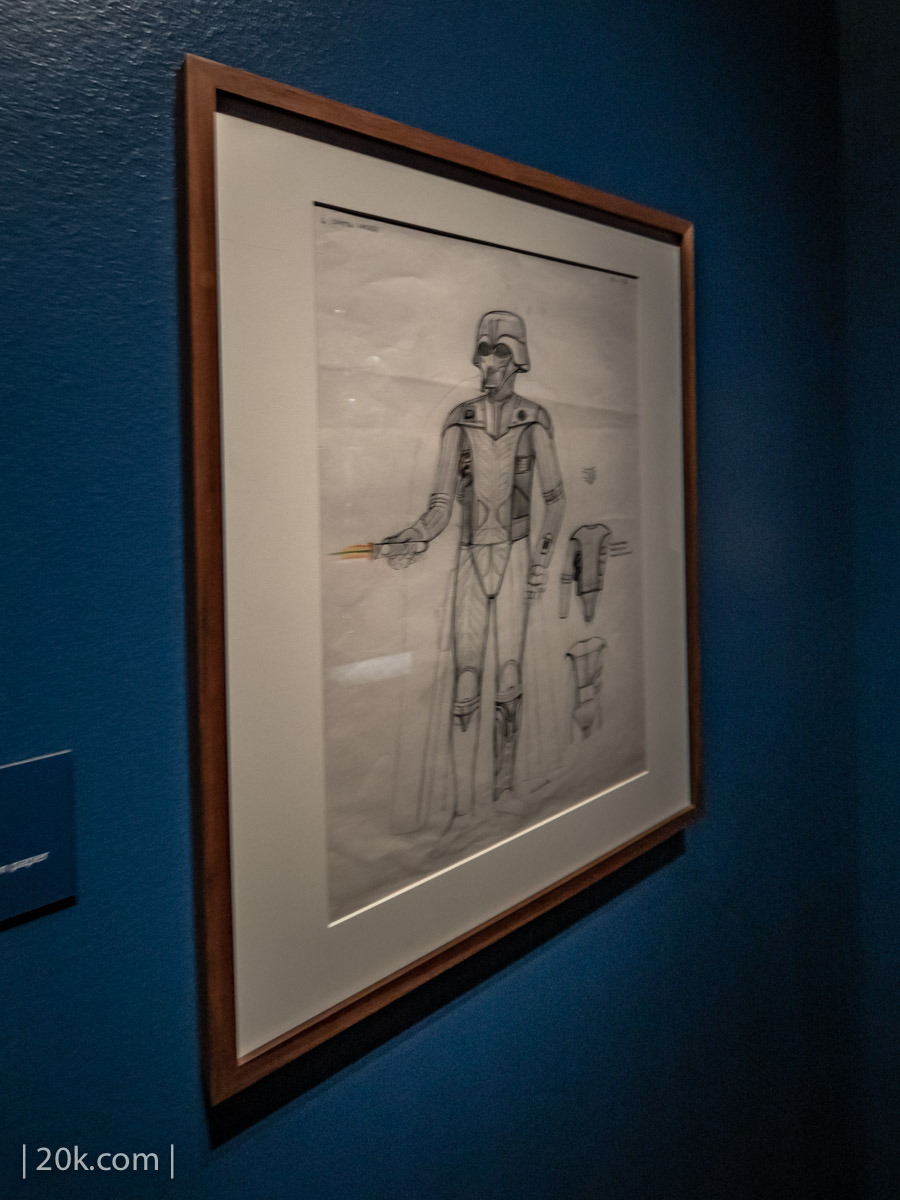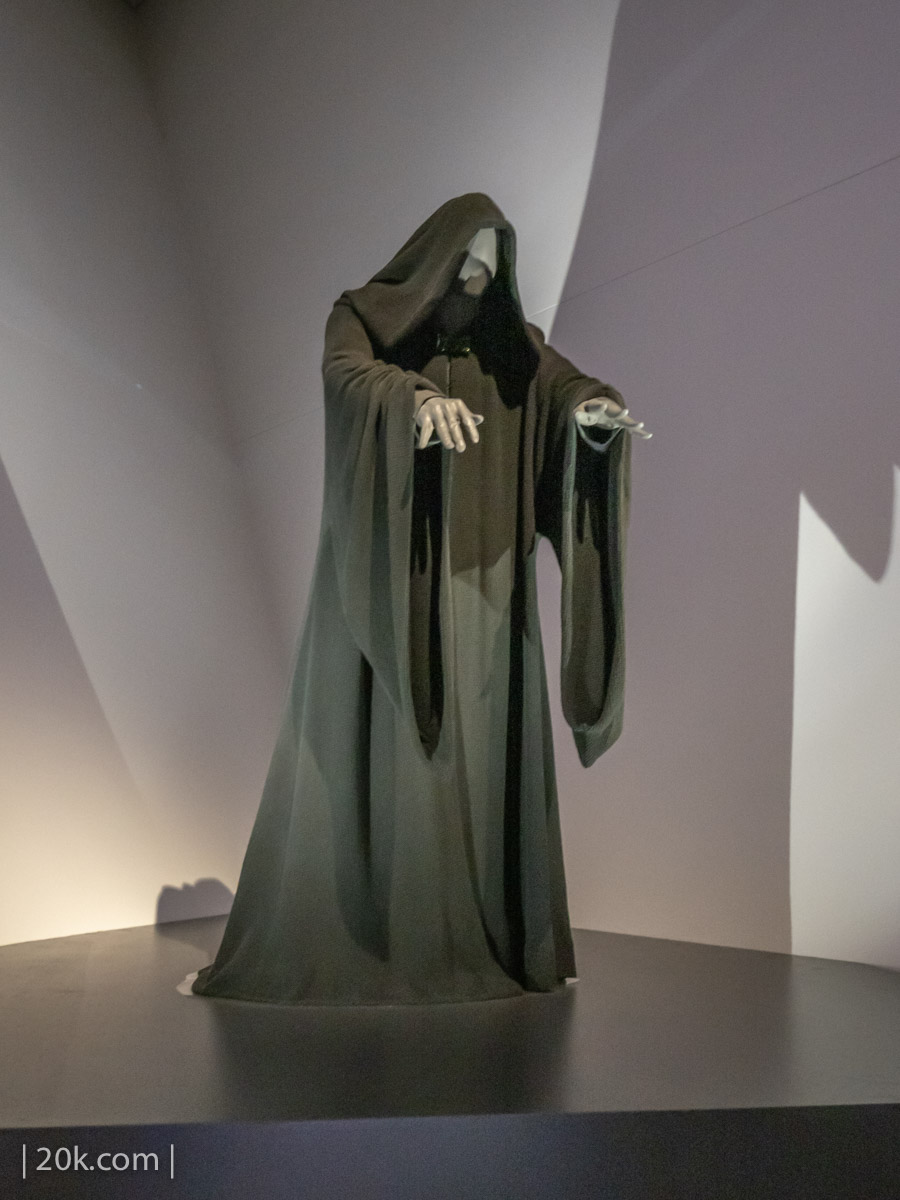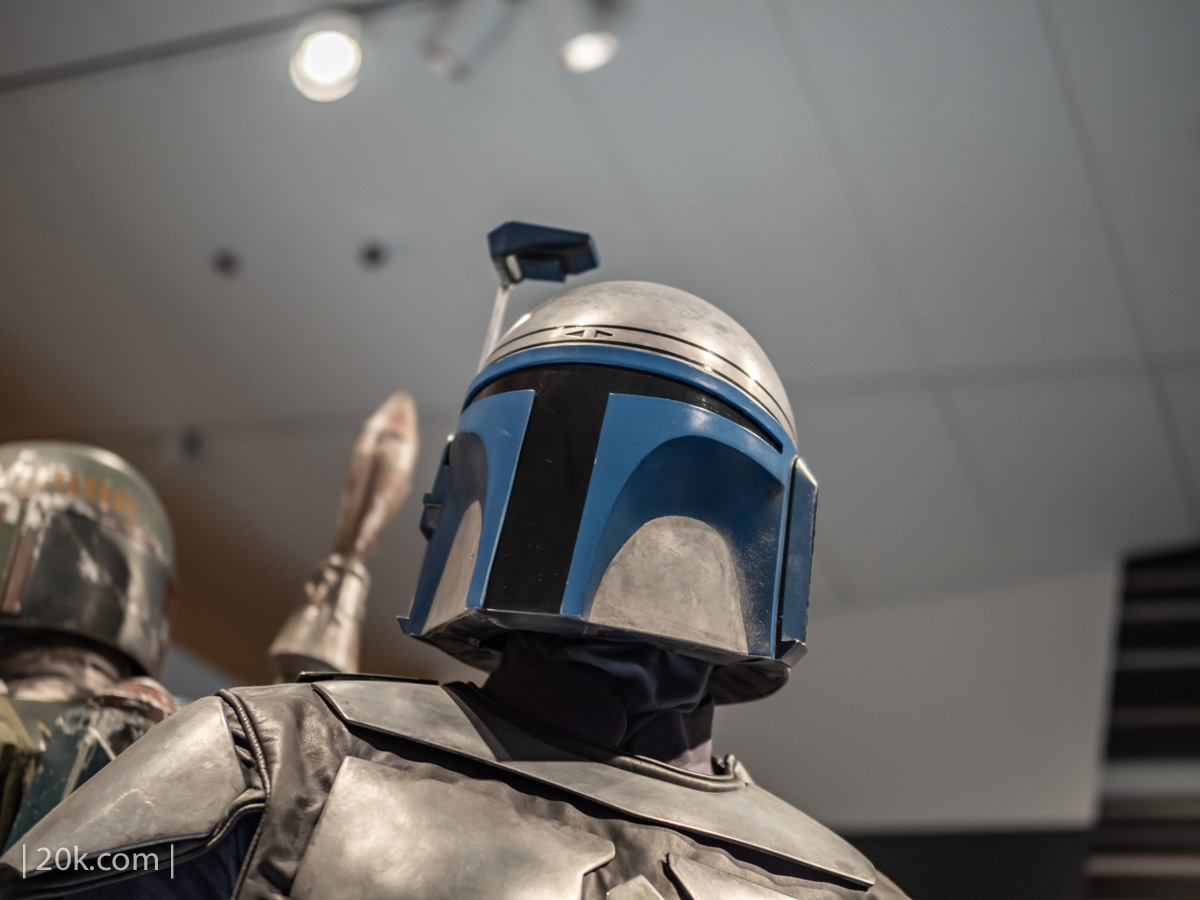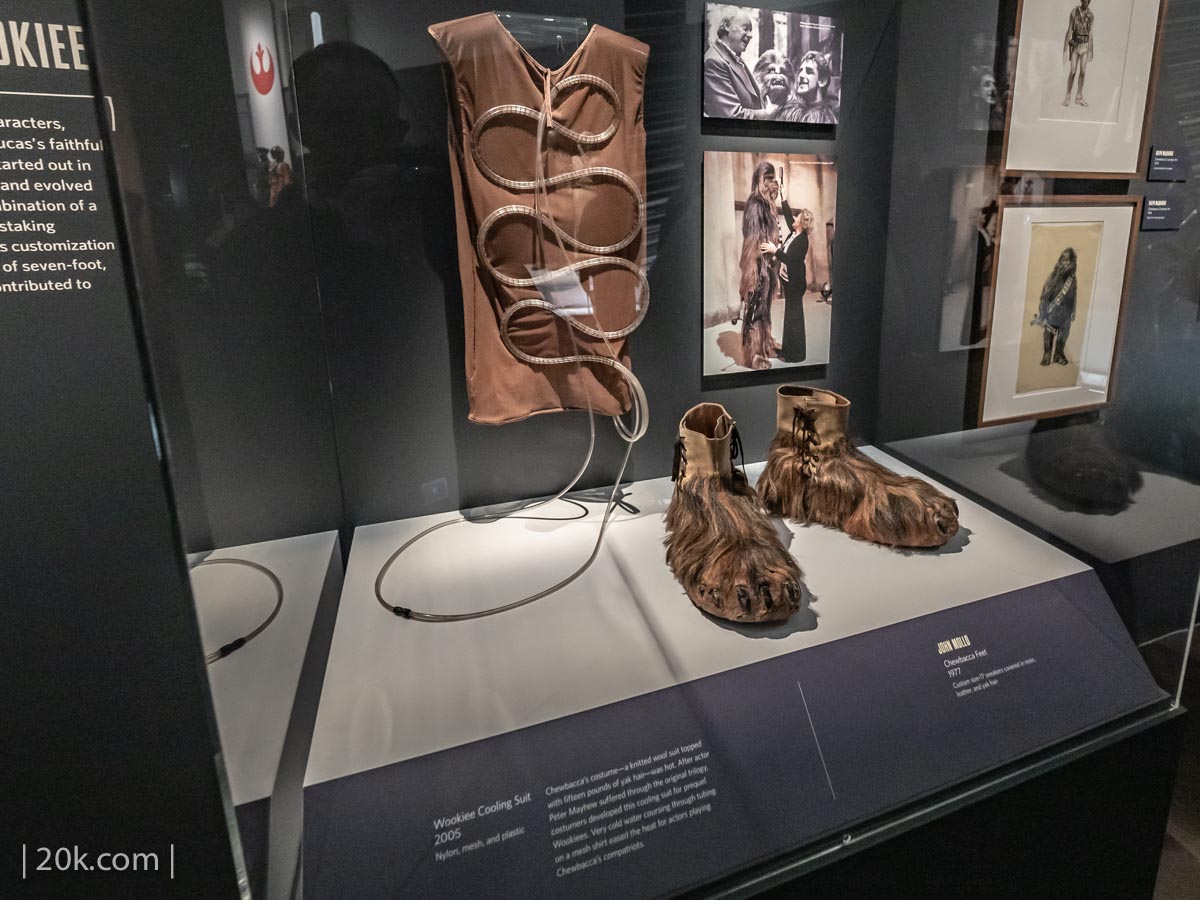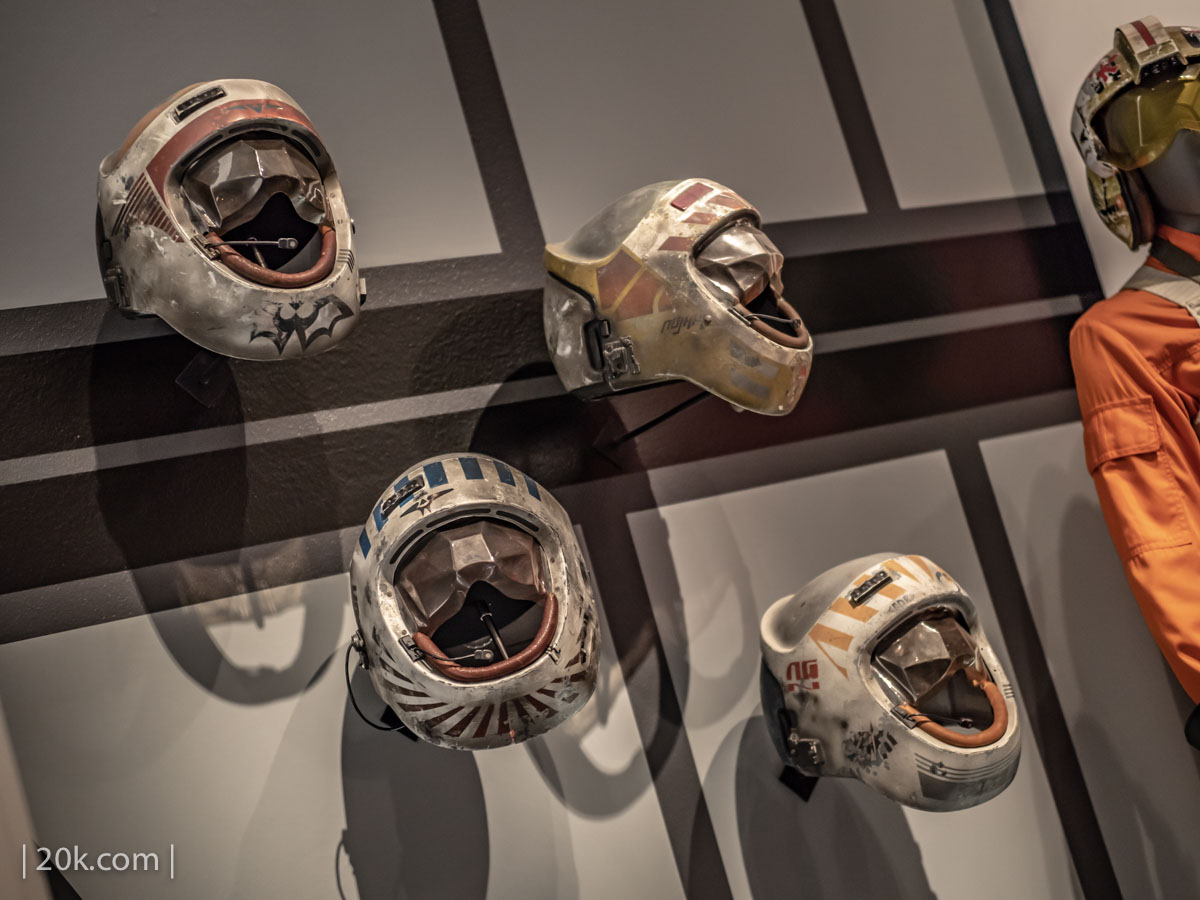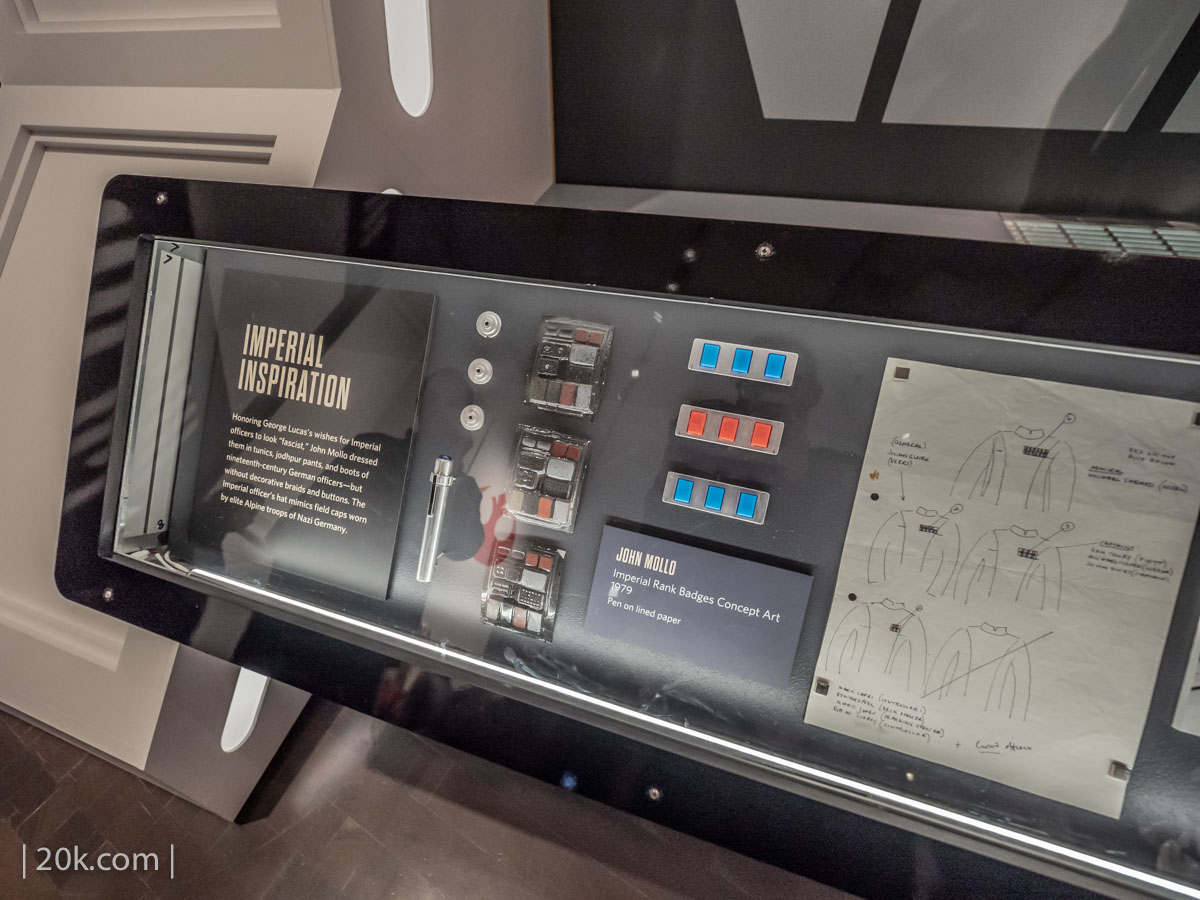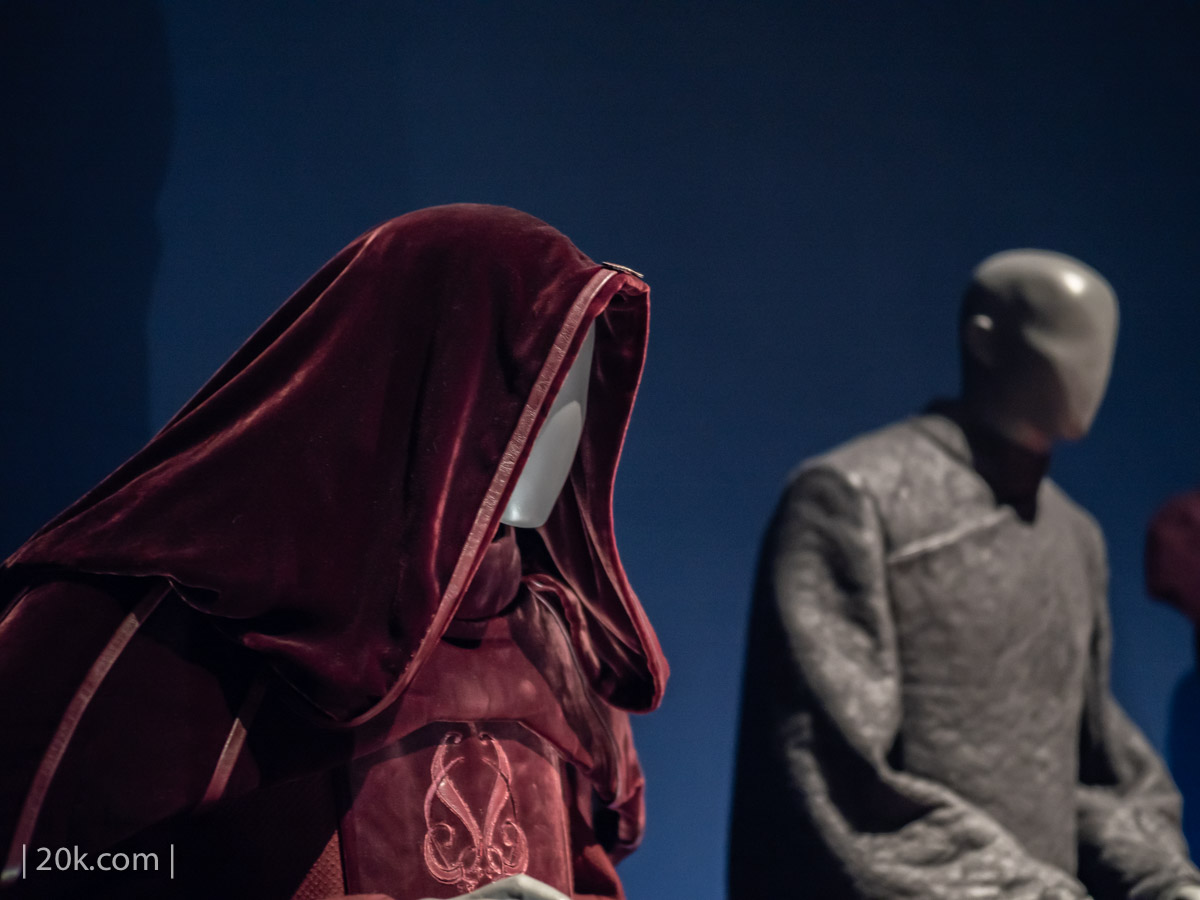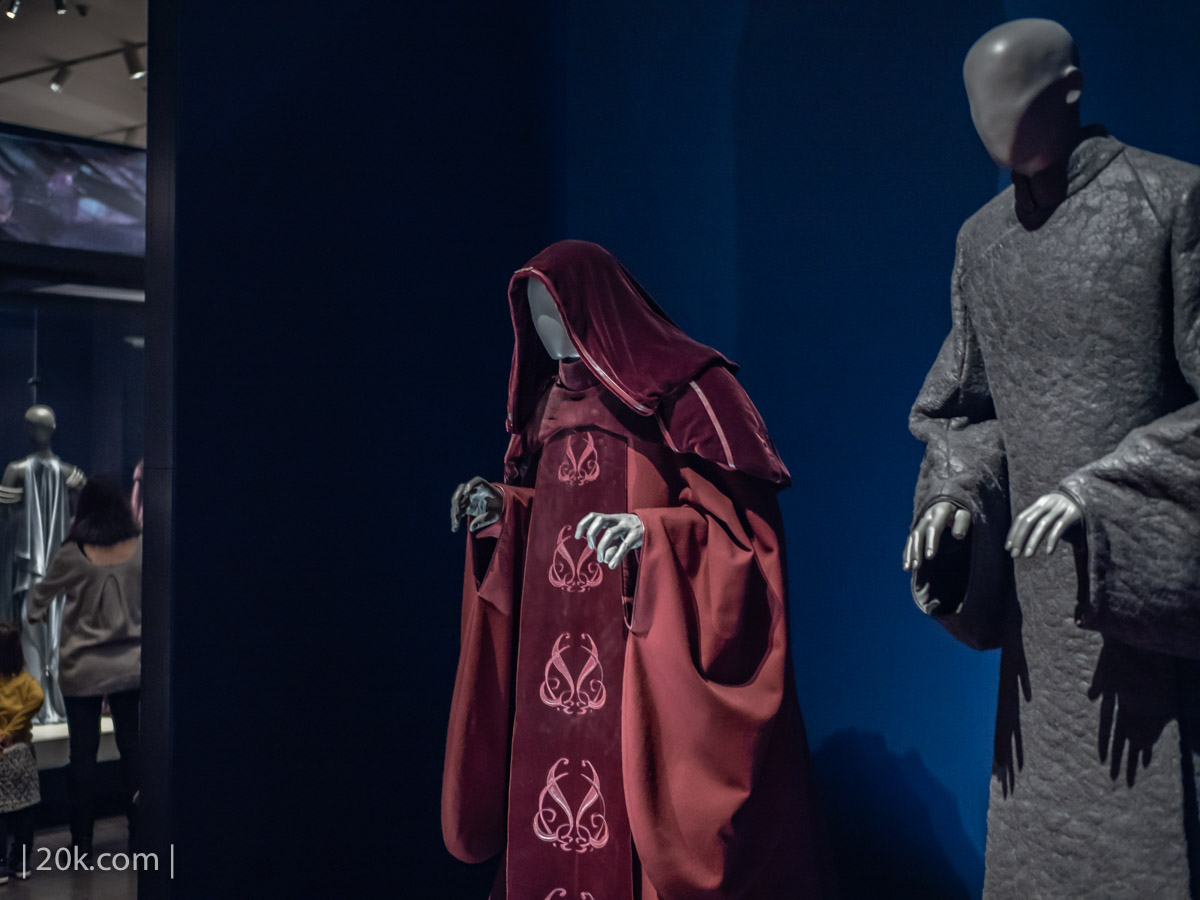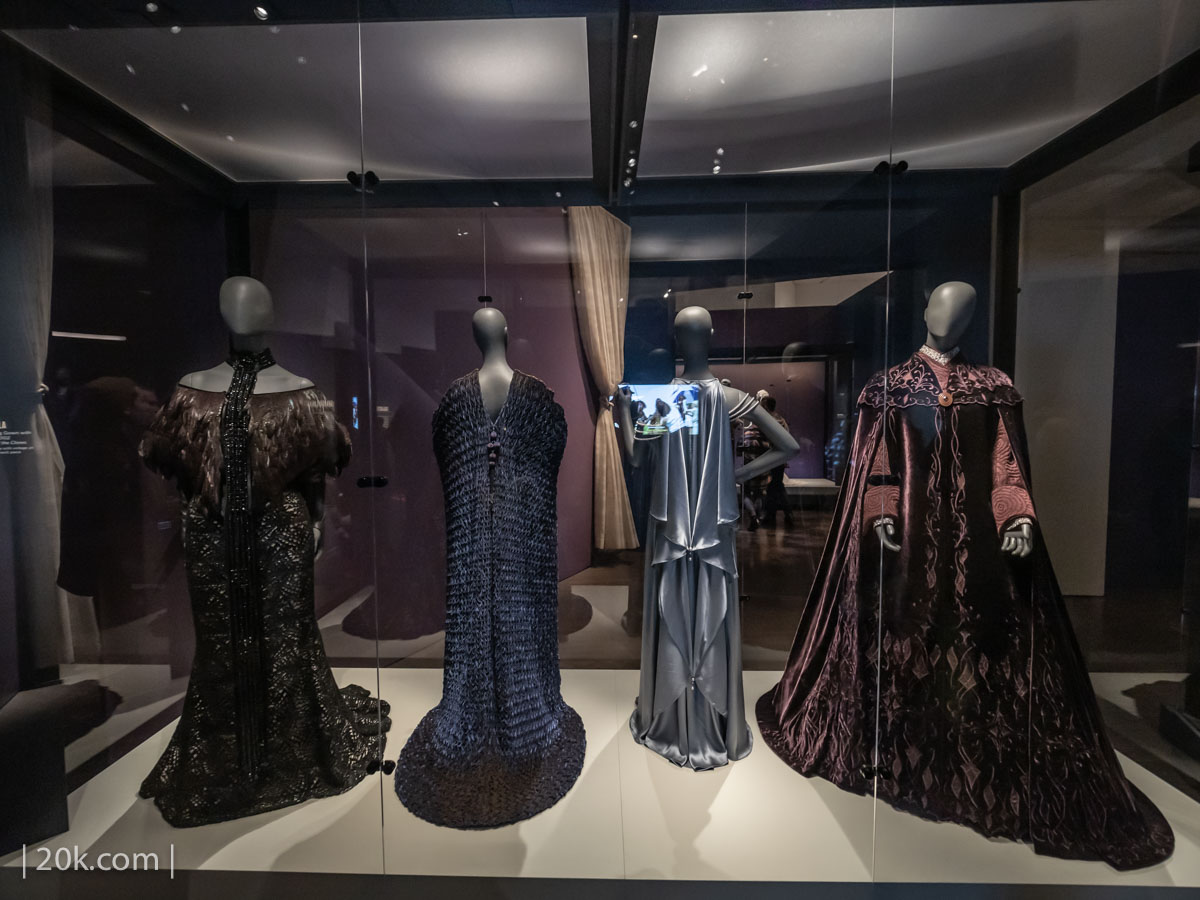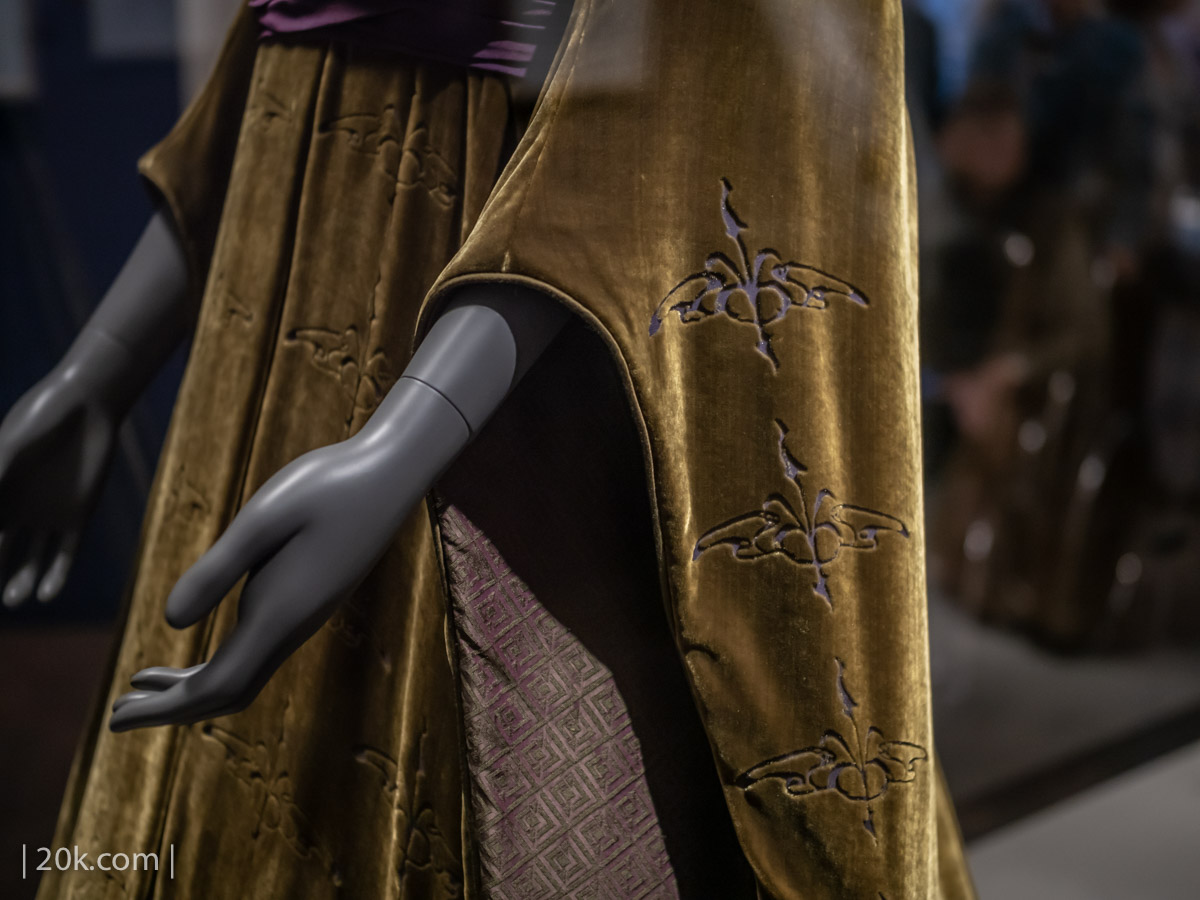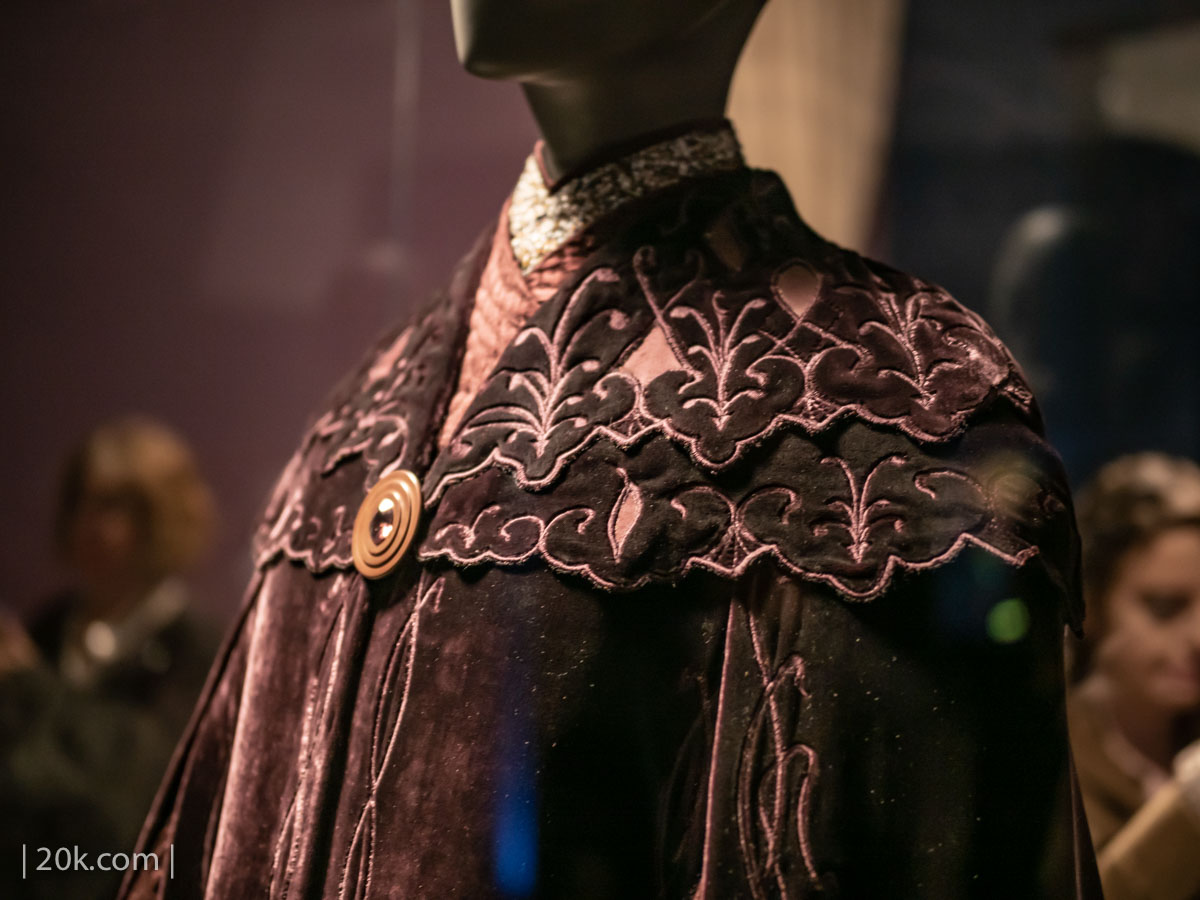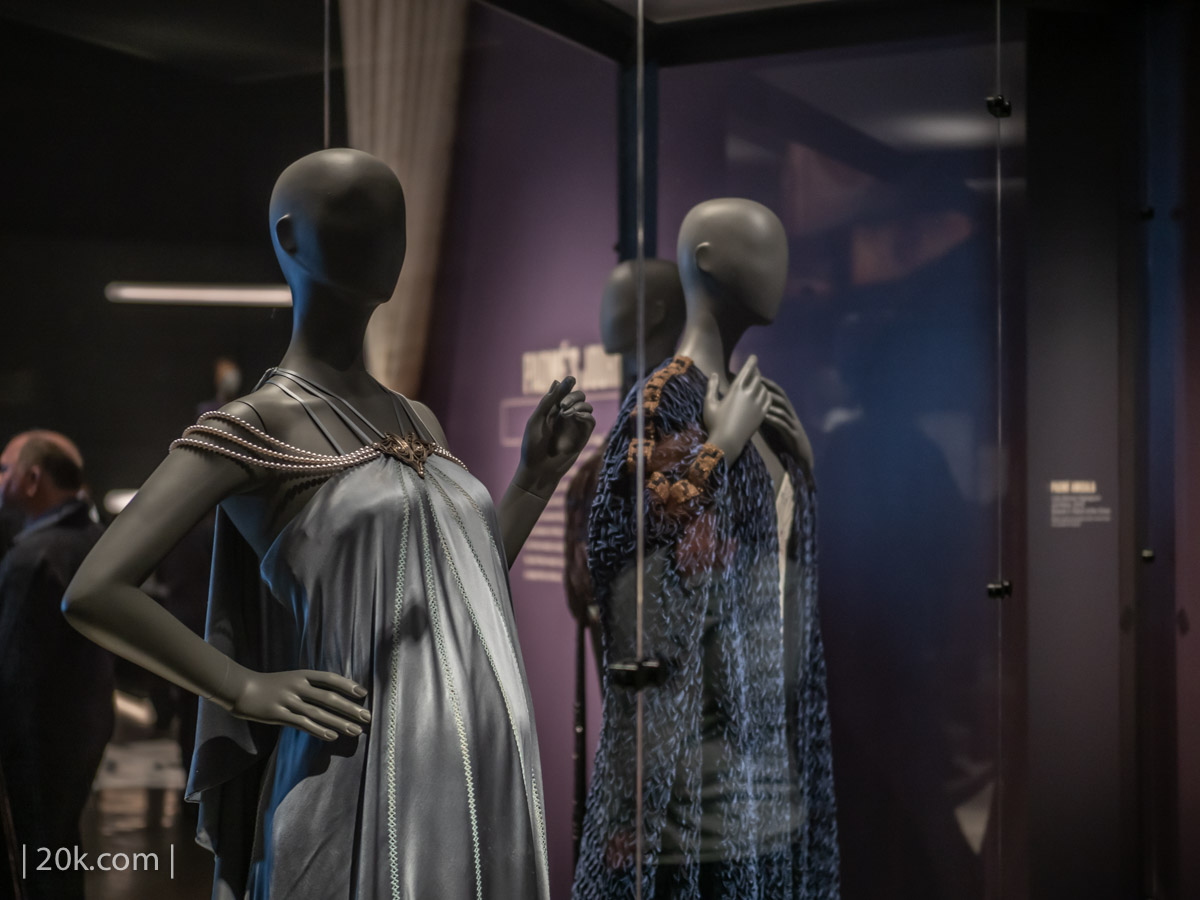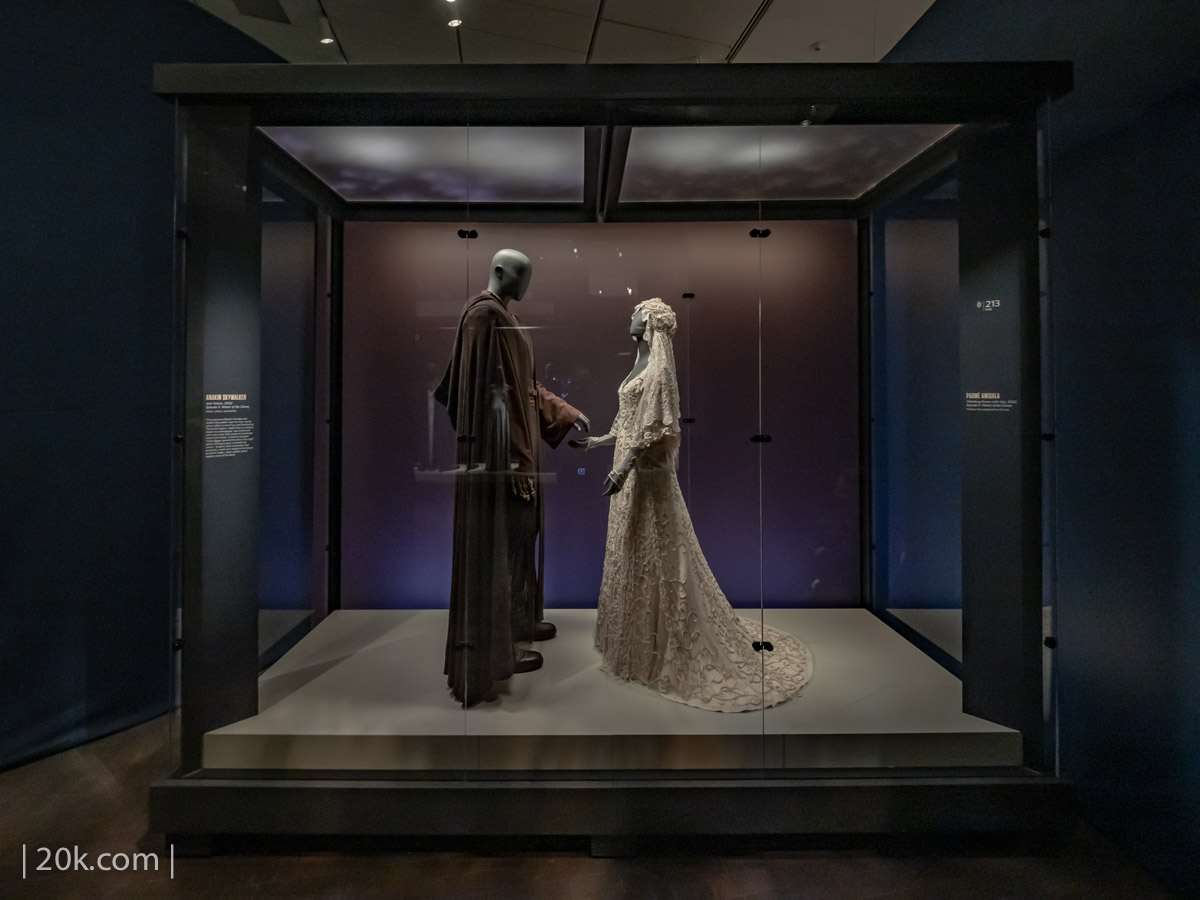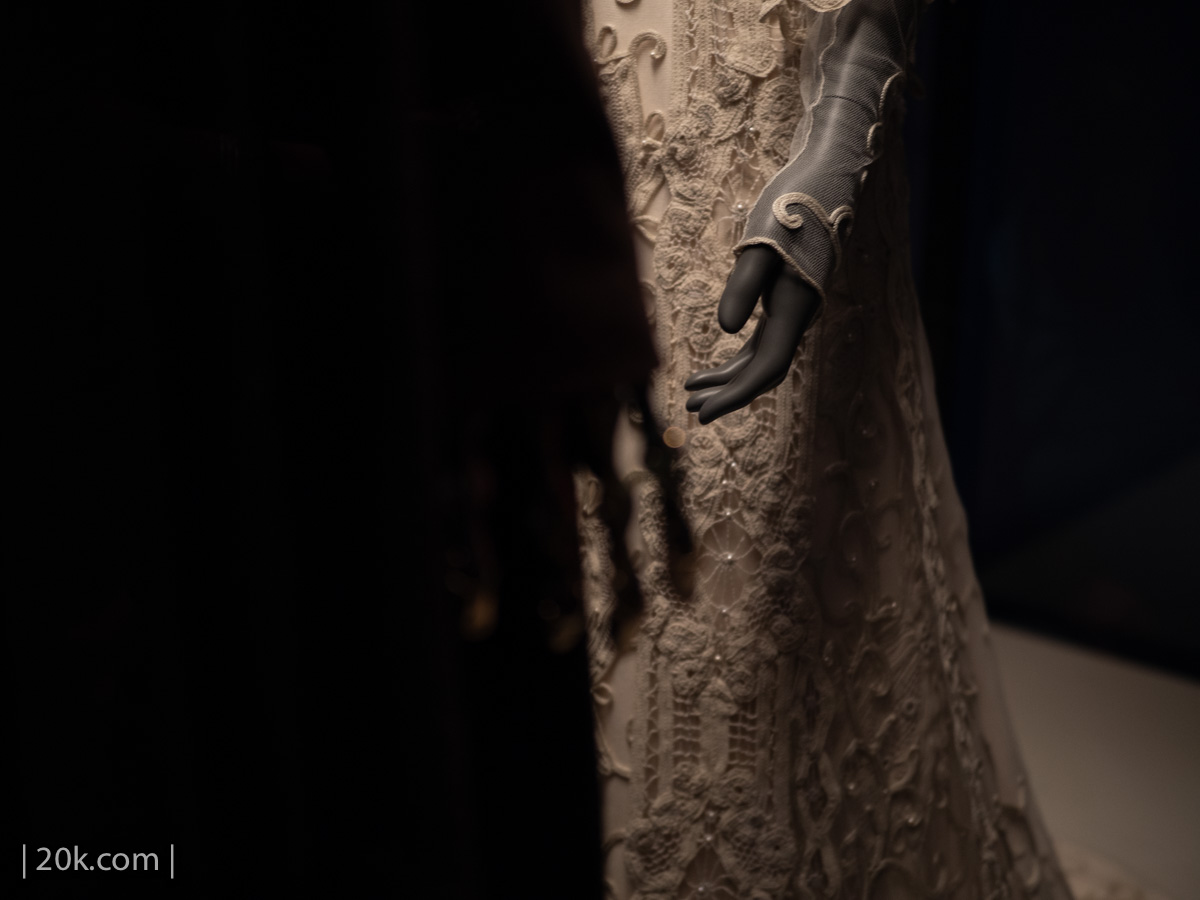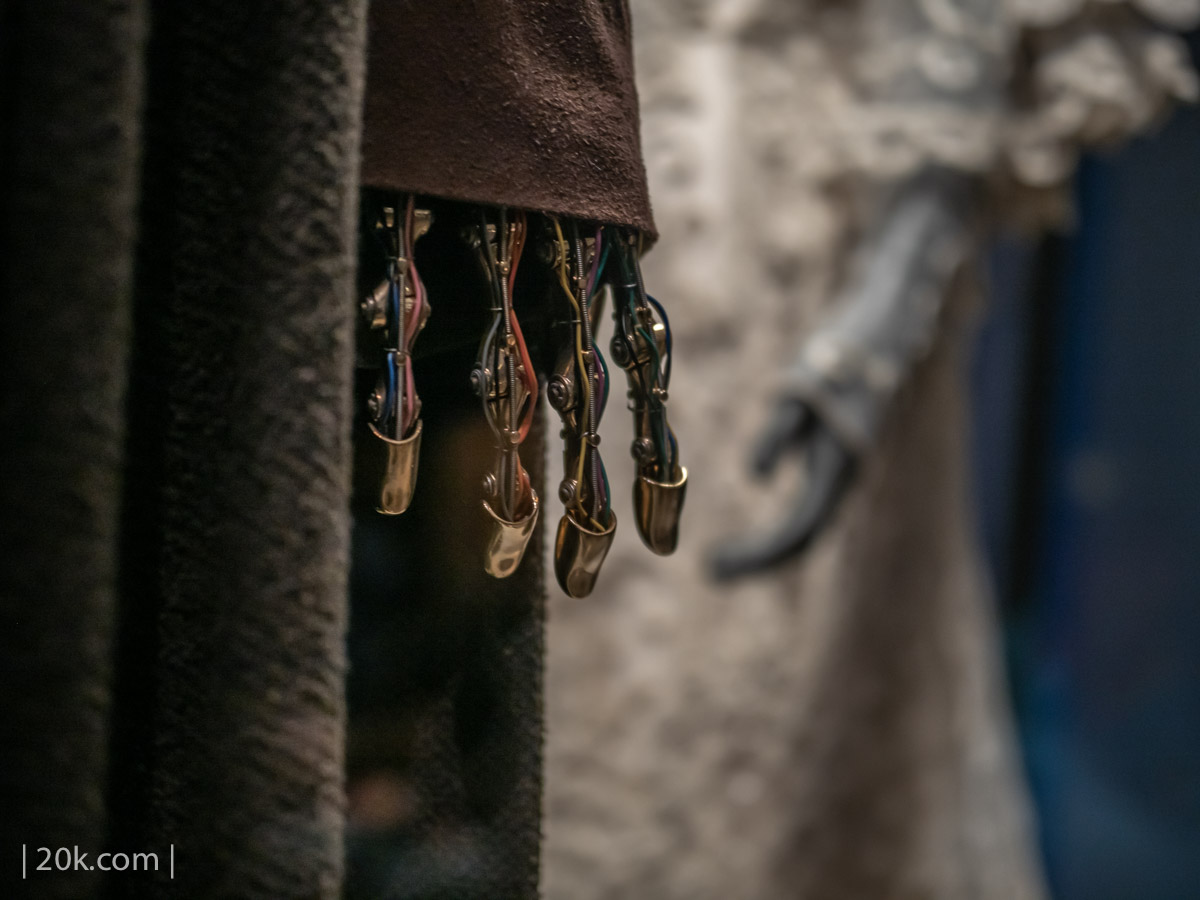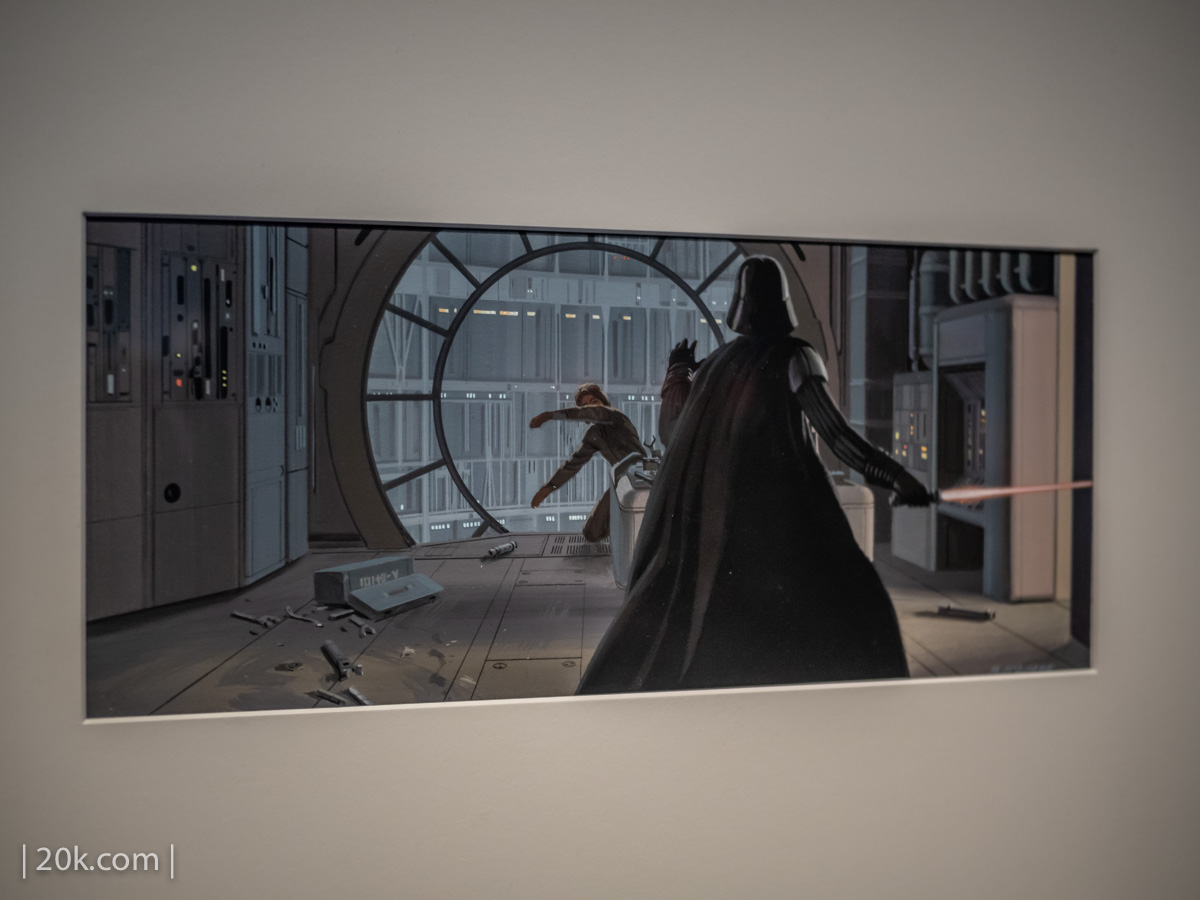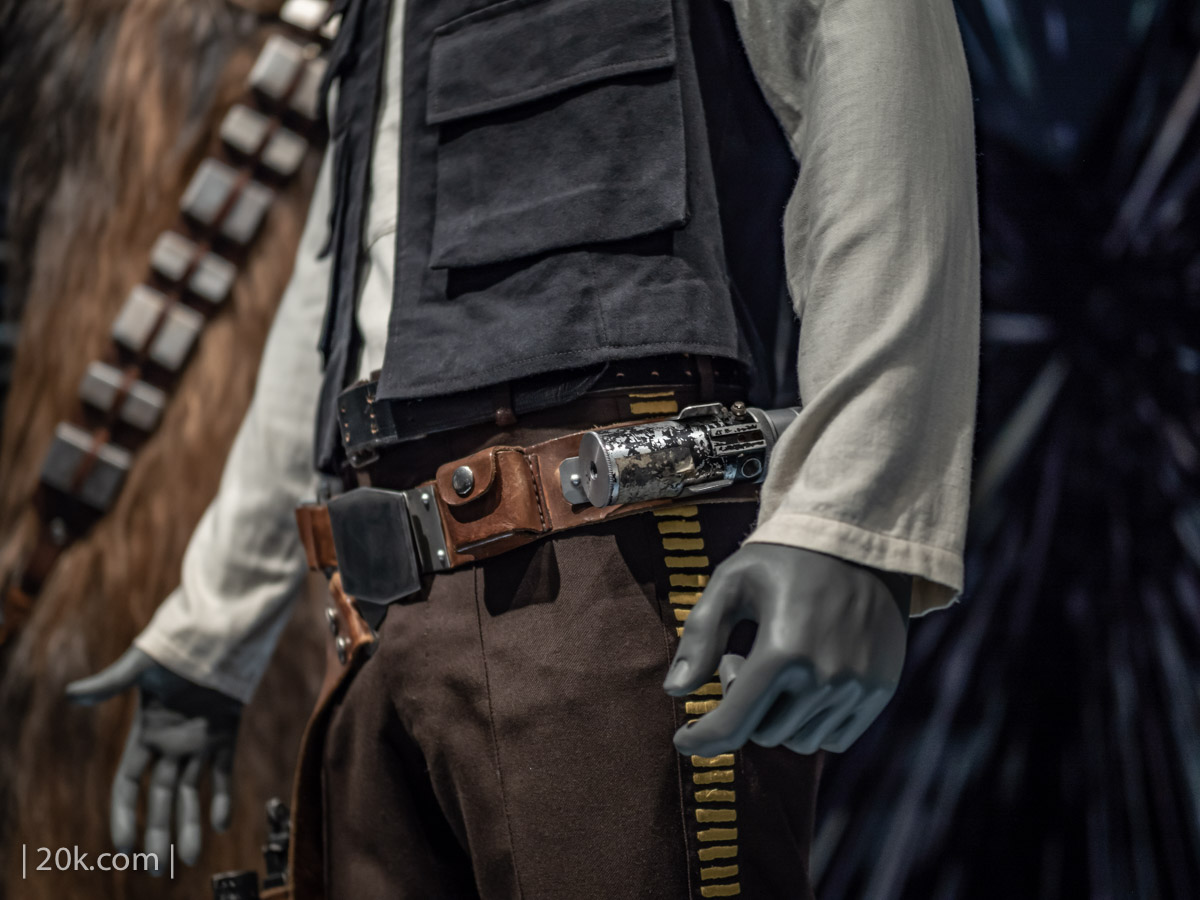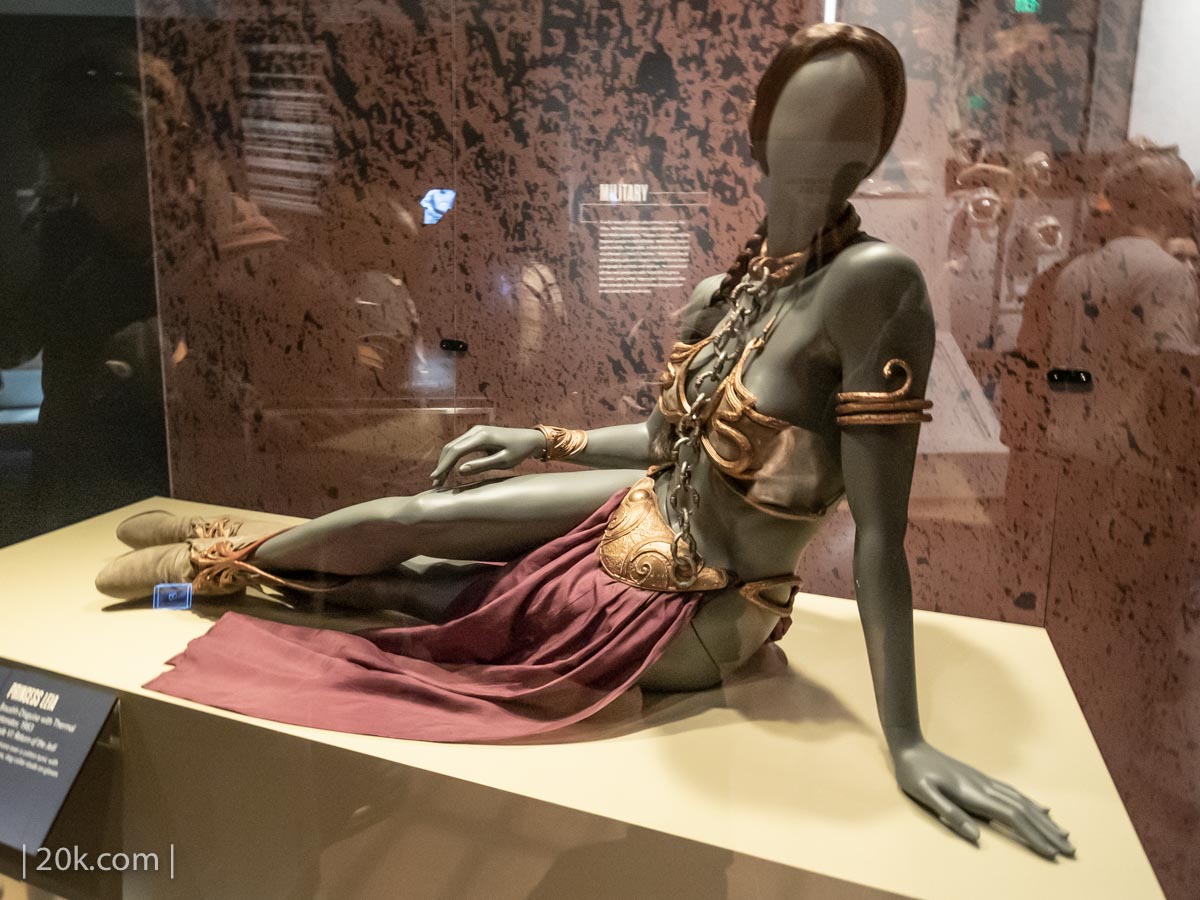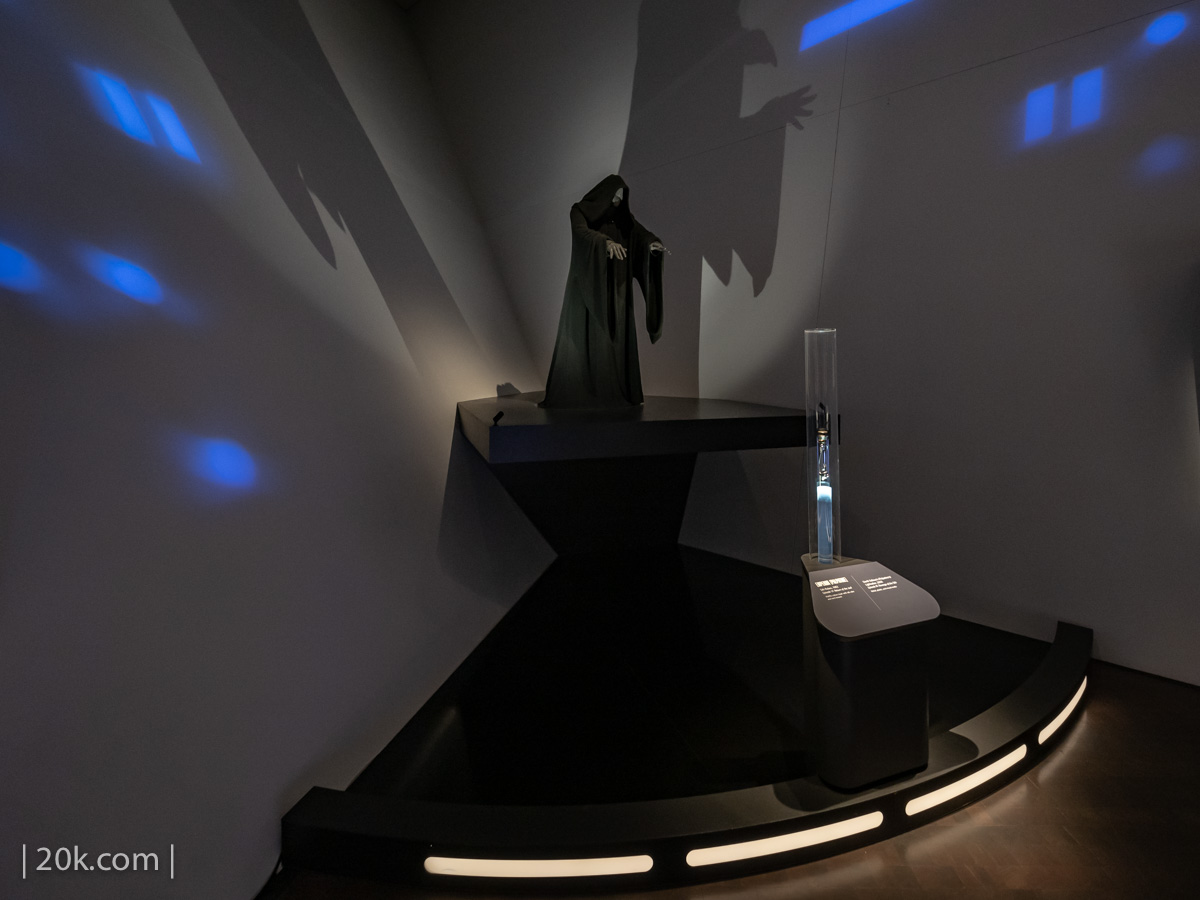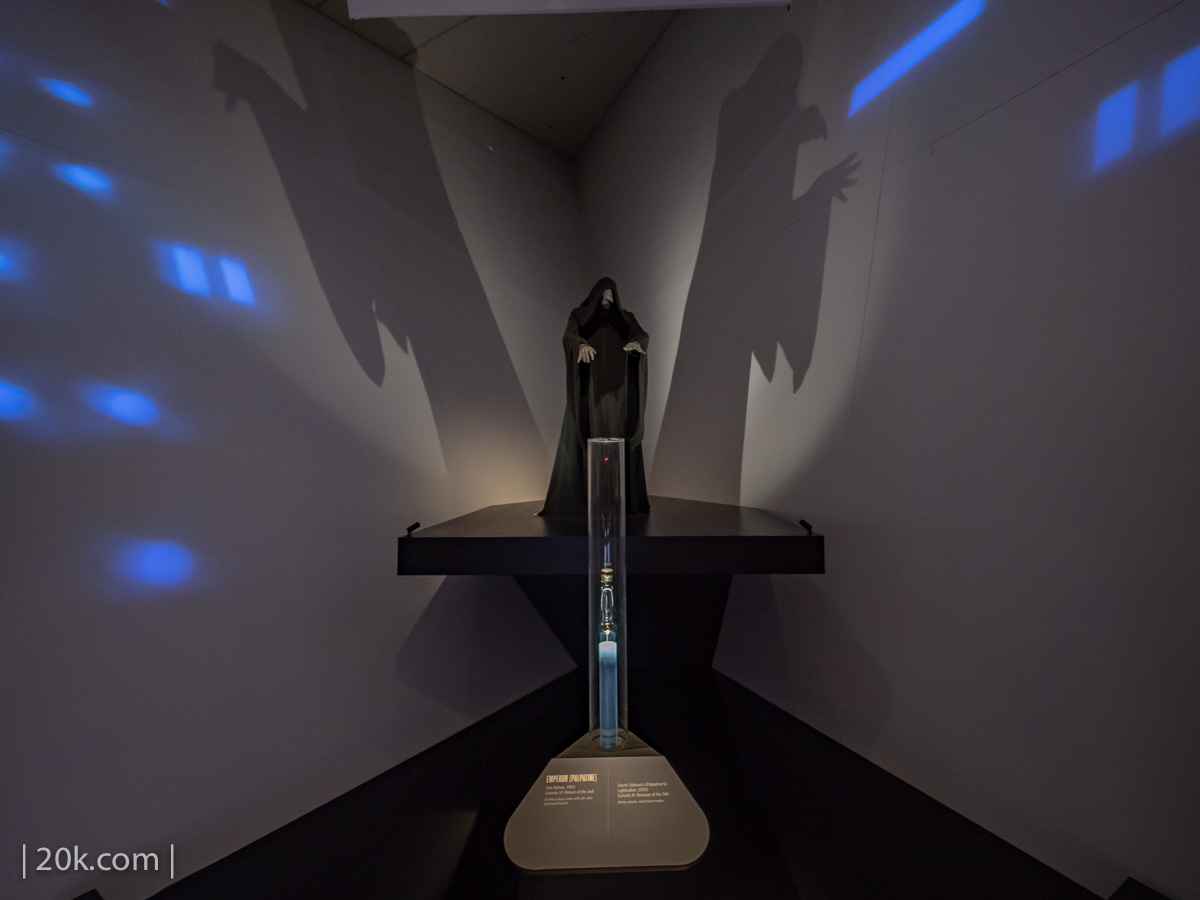Star Wars and the Power of Costume
The Denver Art Museum
If it isn’t already clear, I love movies, I love television, I love the process that goes into creating them, and I hold in reverence the artifacts that are used in the production of great movies, and TV shows.
So when I heard that Star Wars and the Power of Costume was going to be coming to the Denver Art Museum, I immediately set about planning a trip there.
Unlike Dismaland, however, I decided to road trip from Los Angeles to Denver instead of flying, a road trip that would end up being beset with problems.
The I-10 West out of Los Angeles would end up being shut down for six hours while law enforcement searched for erstwhile bank robbers fleeing Las Vegas, putting me woefully behind schedule and forcing me to book additional hotel stops due to lost time and safe driving (don’t want to be drowsy).
On the drive back, my brakes would lock up and I would lose traction on a snowy road, getting in an accident.
Alert: Brief two-sentence short tangent below

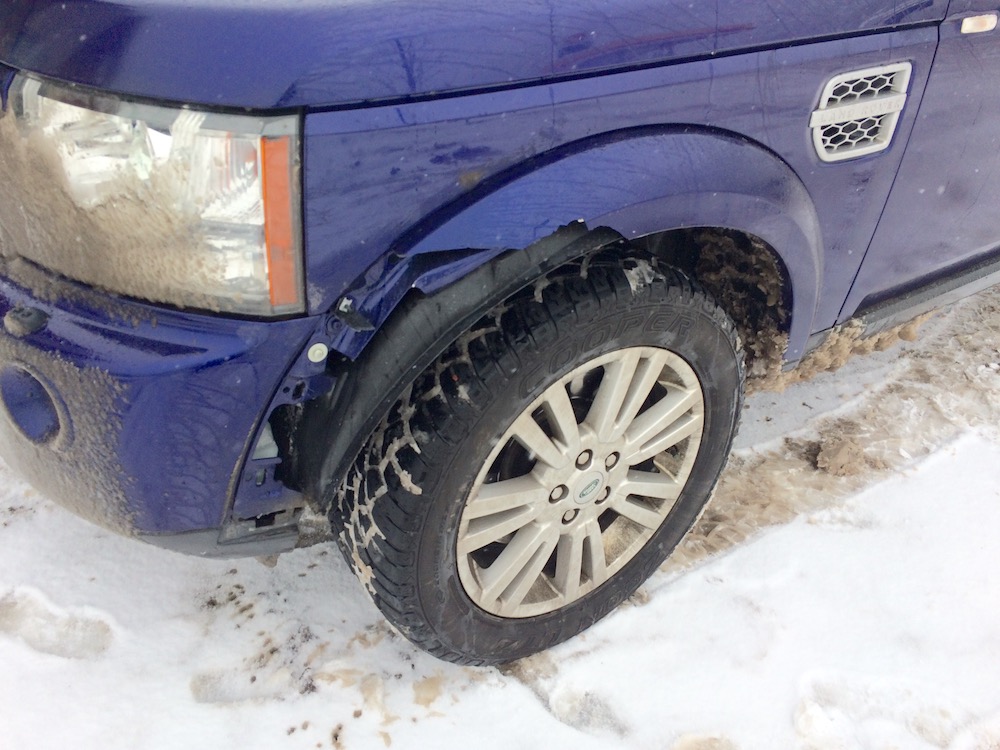
The only nice thing about the accident was the fact that the repair was cheap. Land Rover LR3s/LR4s had plastic fender flares which were probably installed to provide cheap and somewhat disposable protection. The repair was only $475.
That was three sentences. Okay, back to the trip:
First of all, I want to reiterate that there was snow. Lots of snow. I live in Los Angeles. We don’t have weather. It’s both very convenient, and it kind of sucks because there’s little in the way of variable weather to define the seasons unless your car’s air conditioning breaks and then it’s hell on earth until that’s fixed. So, I relish in trips to other climates and this one did not disappoint. It was everywhere. Also, there was a Michael Graves building: The Denver Central Library. Michael Graves is everywhere.
And then there was Star Wars. I’m talking about the original Star Wars. The kind of stuff that is priceless and irreplaceable.
Actually, neither one of those statements is true. None of that stuff is priceless as screen-used Star Wars items are routinely sold at auction by outfits such as Profiles in History and Propstore UK/Los Angeles. This is because the kind of people who buy screen used props are impulsive and bad with money/broke (unless they’re Microsoft Co-Founder Paul Allen), or mired in divorce proceedings. And all of that stuff is replaceable since film productions never build just one of something, although in some cases, such as the red ground spinner from Blade Runner, all of the spares wind up meeting bad fates, ergo irreplaceable. In the case of Star Wars though, Lucas did a great job of holding on to things, and so there is still plenty to go around.
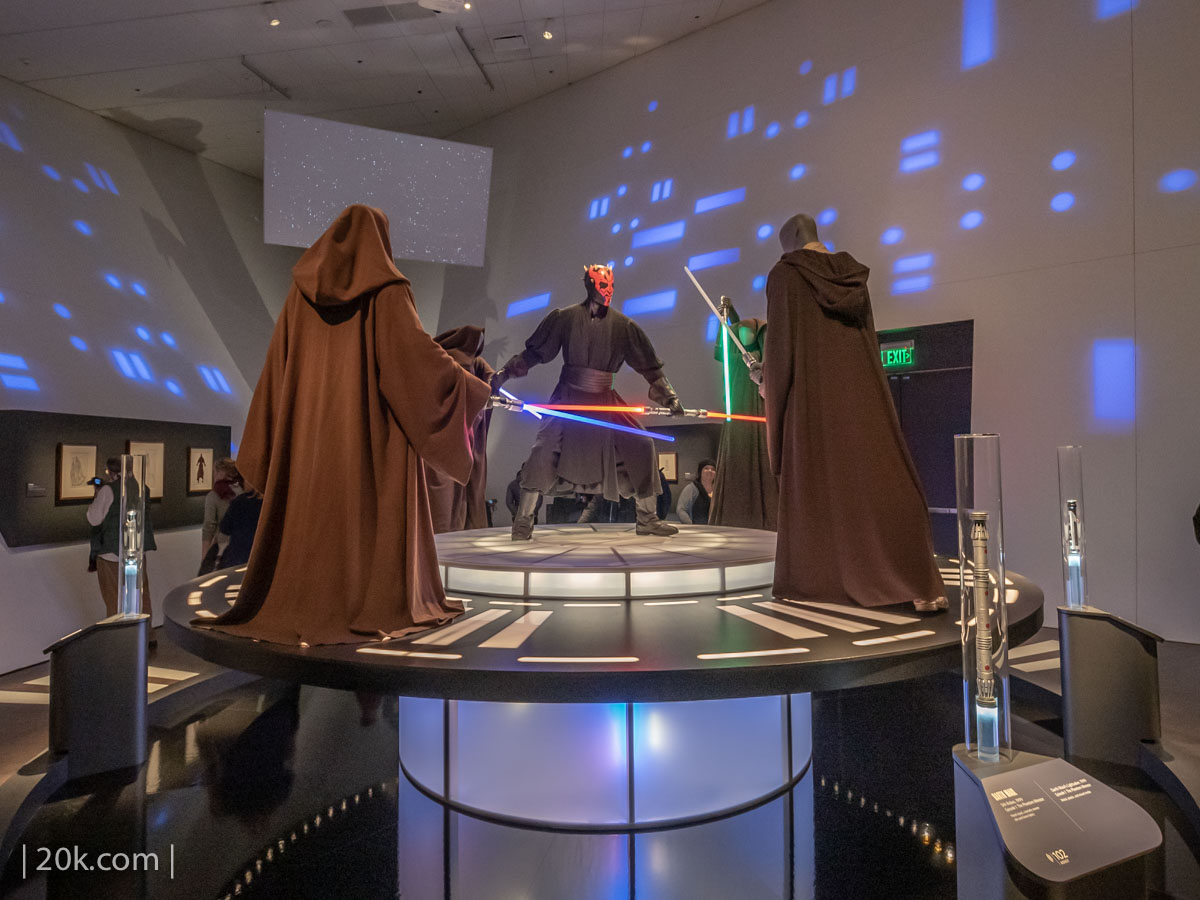
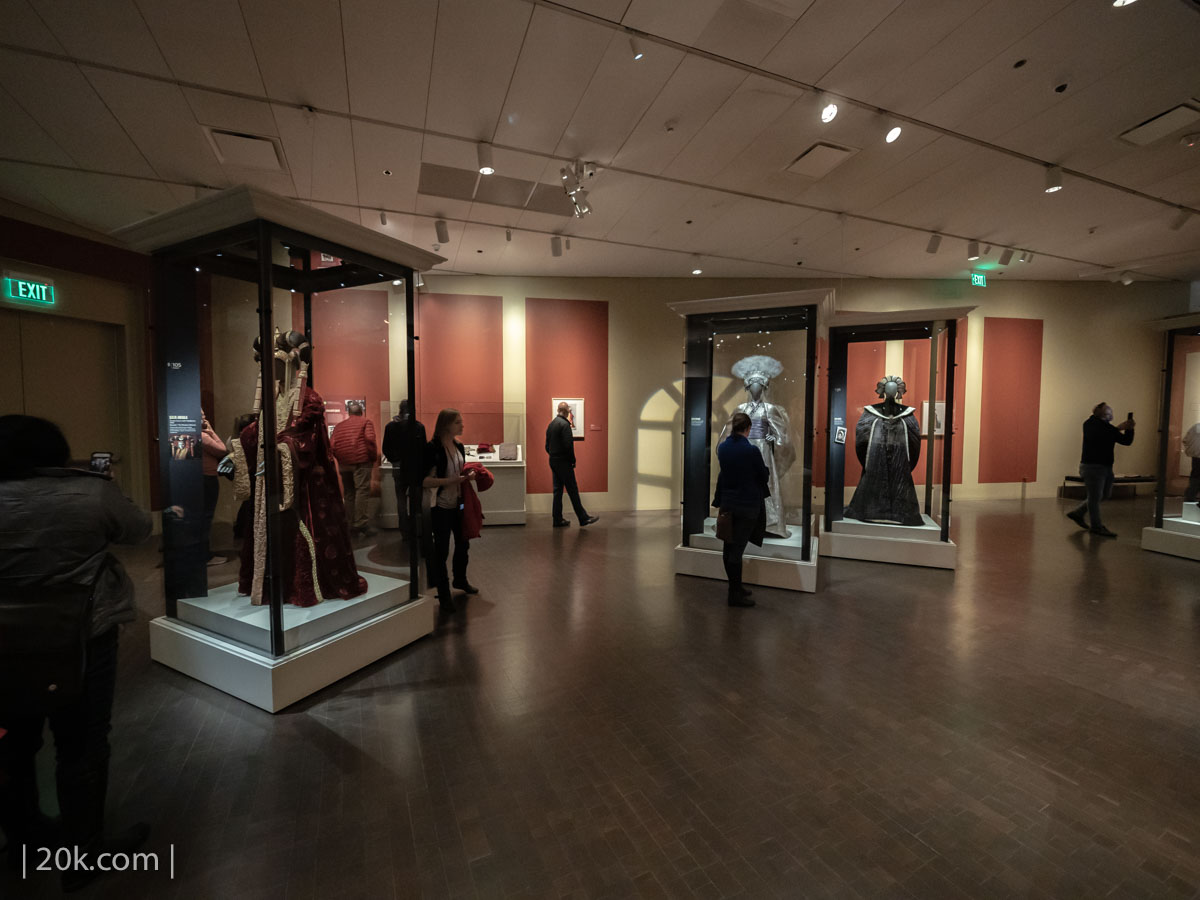
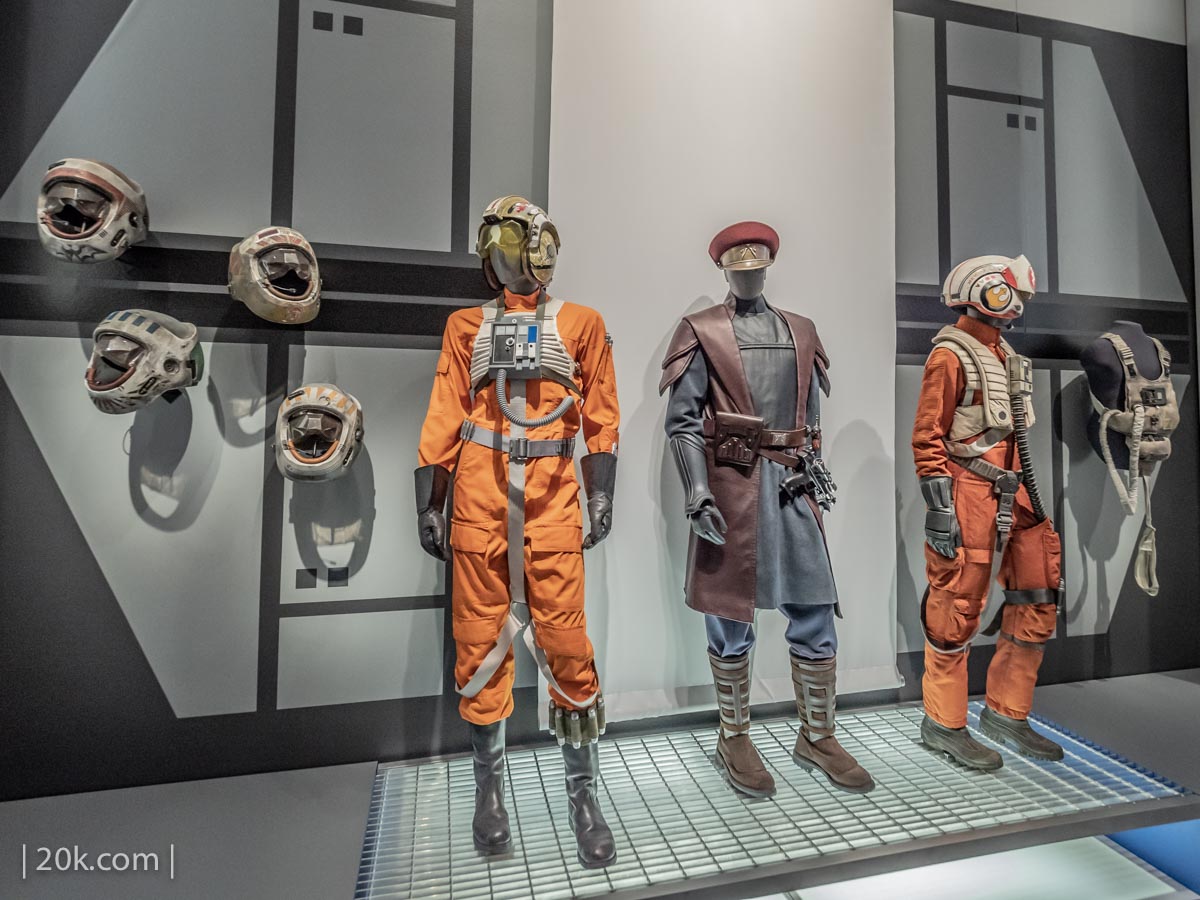
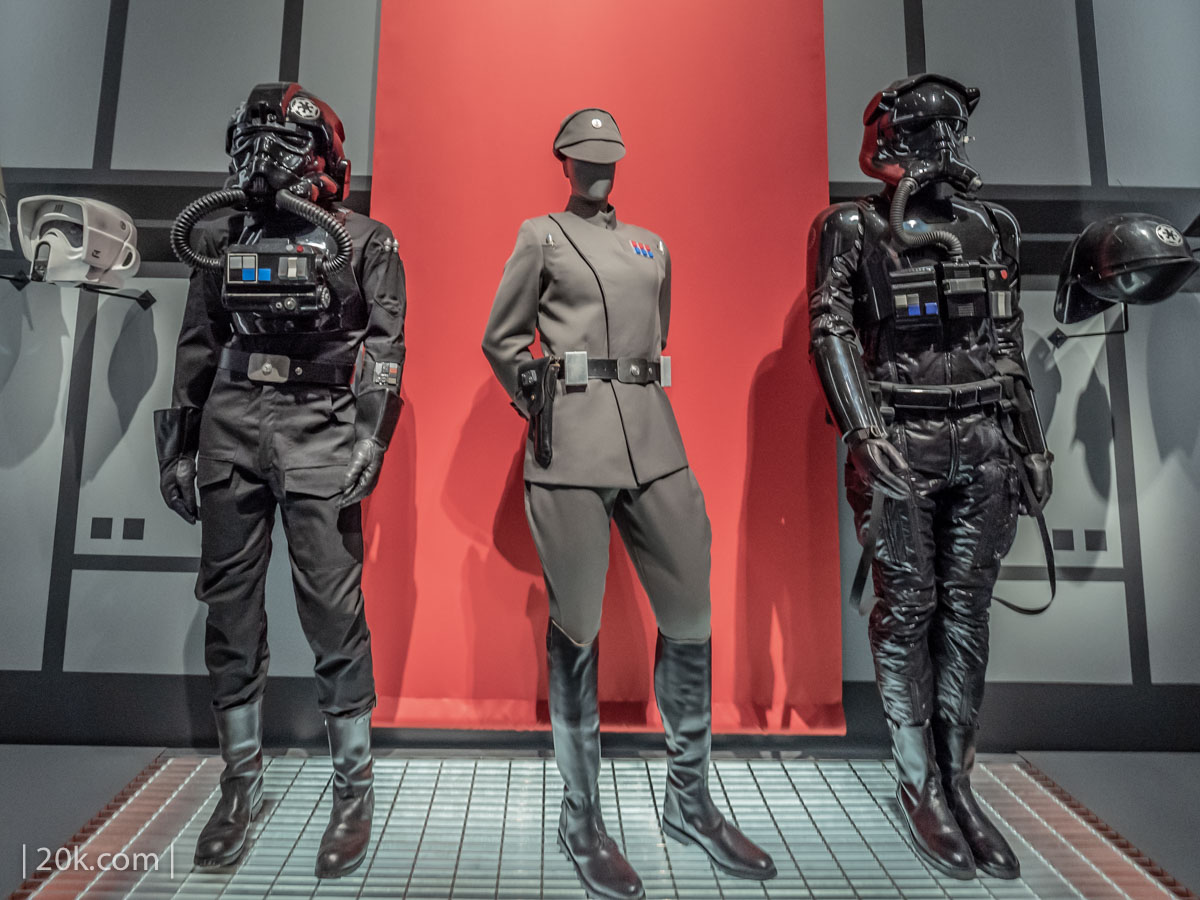
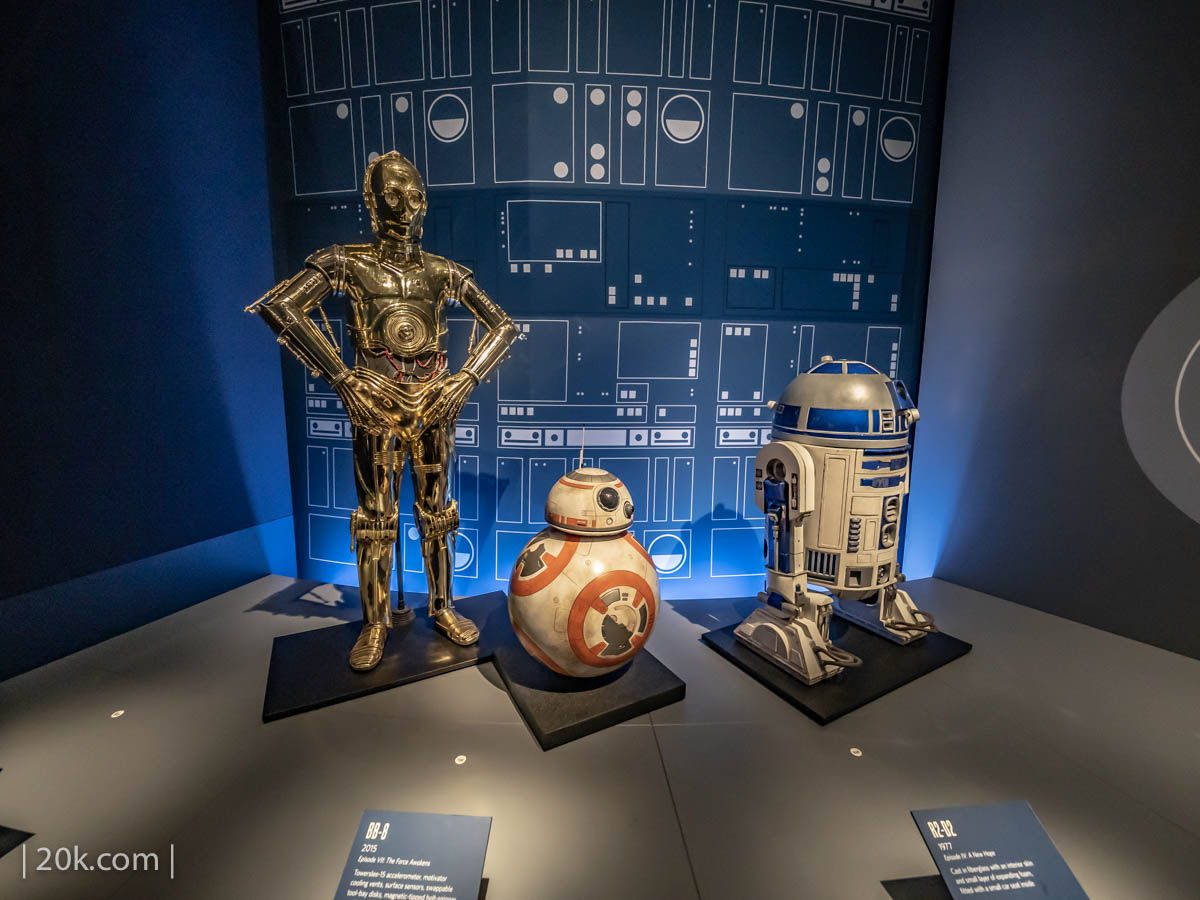
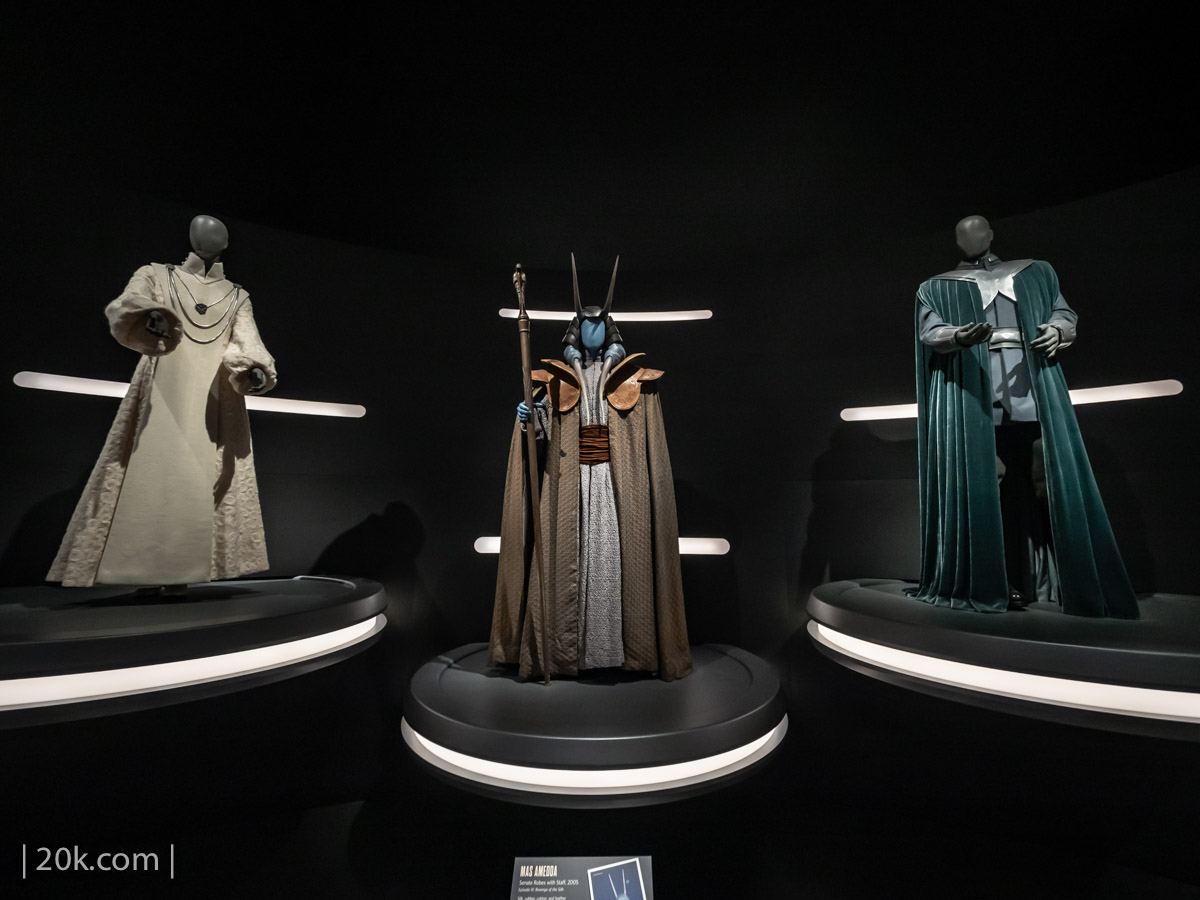
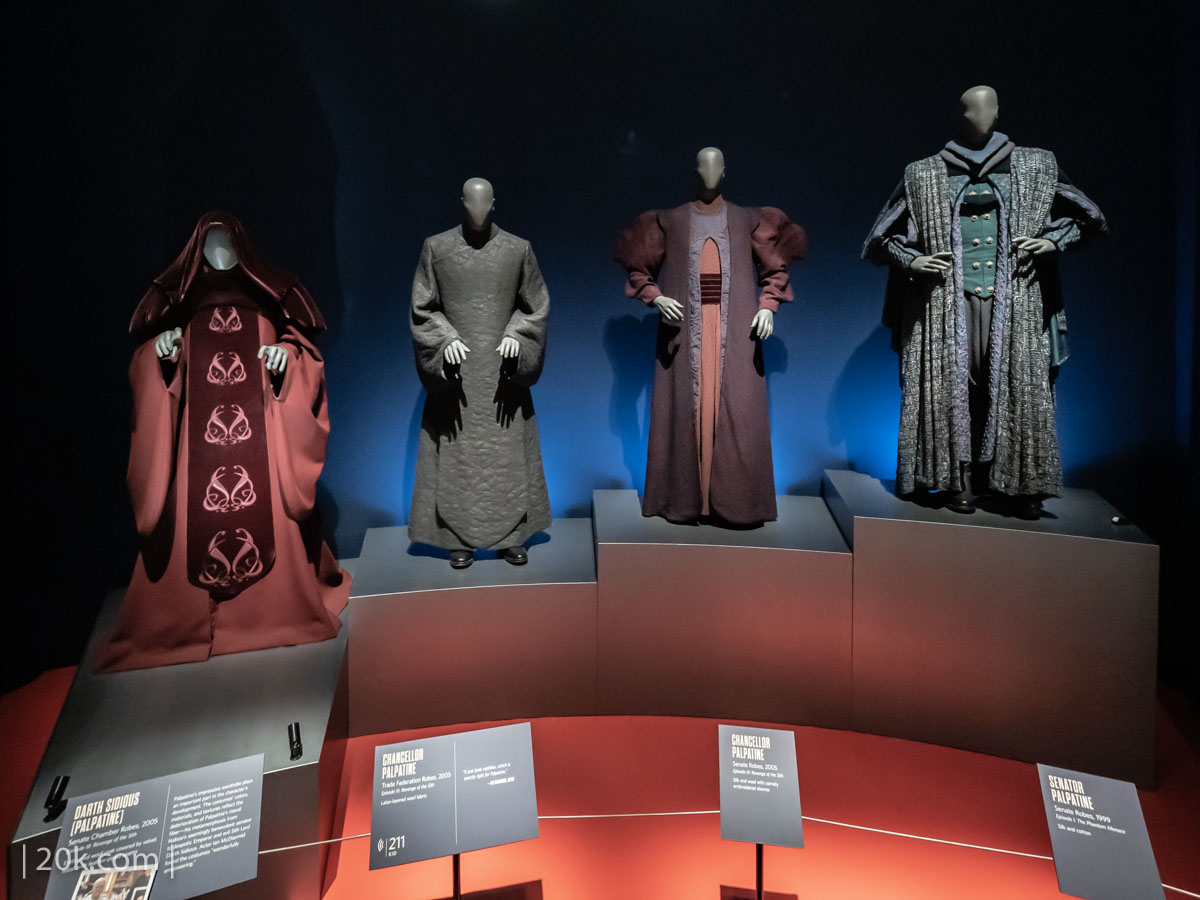
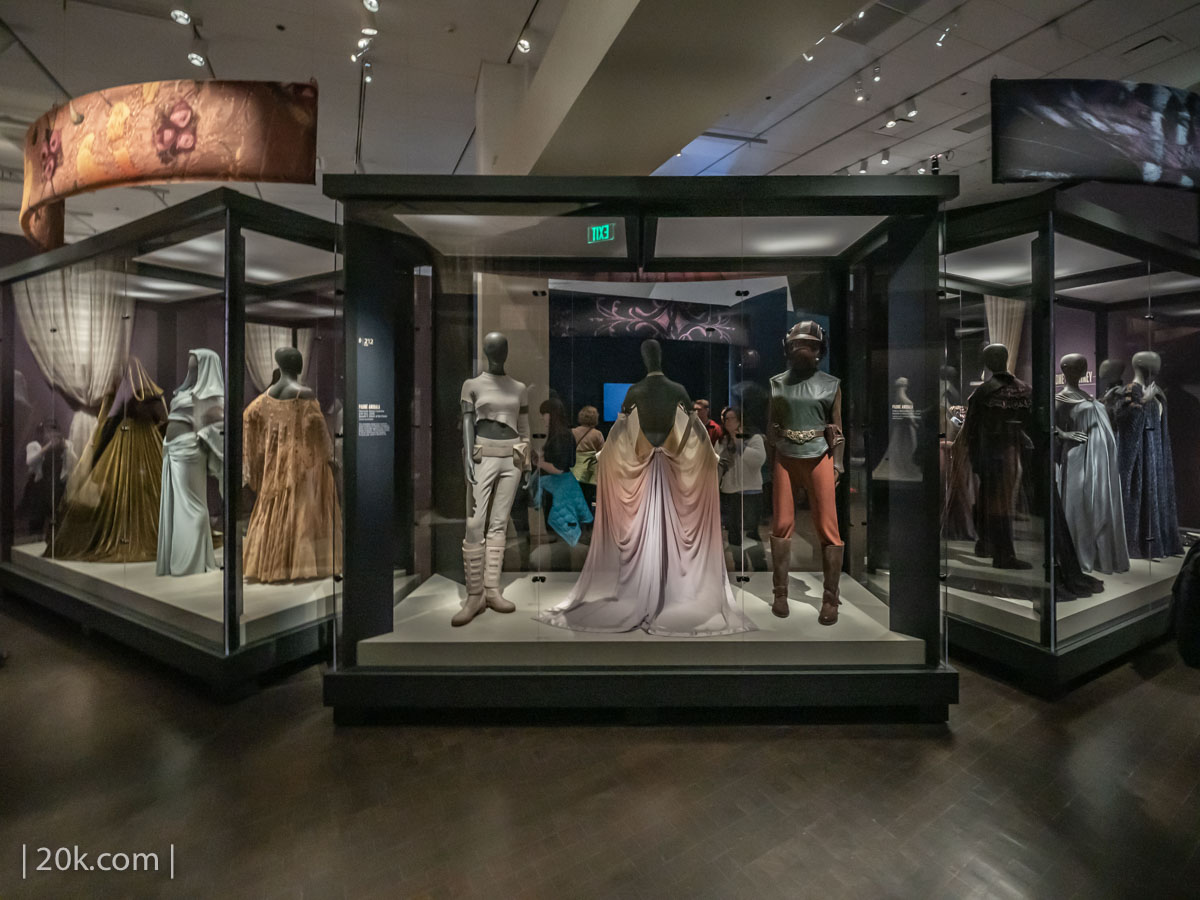
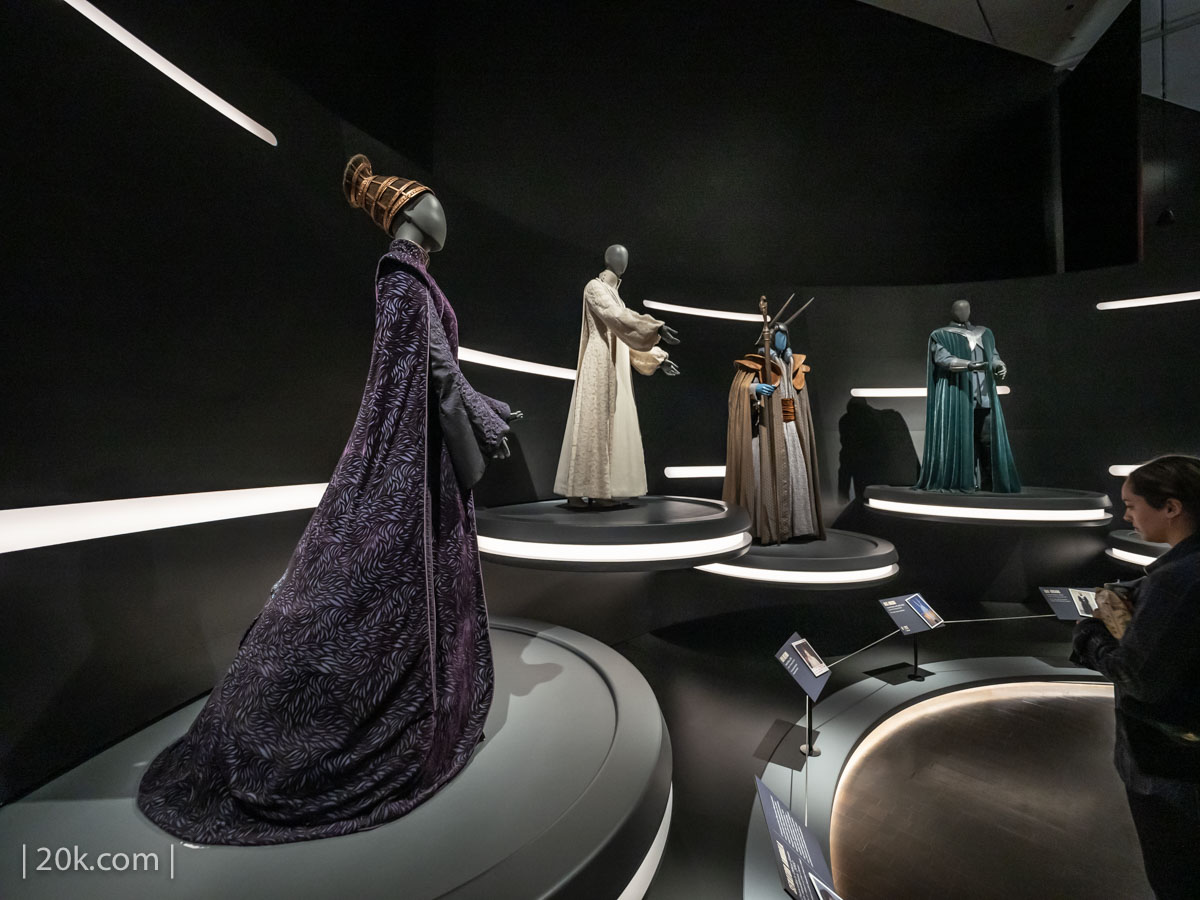
With that contradiction out of the way, let’s move on. The exhibition was phenomenal. By the looks of things, this exhibit may have been planned and scheduled prior to Disney’s acquisition of Lucasfilm in 2012, as there was not a shred of evidence that Disney had its hand in this in any way. This was pure Lucas through and through. It opened at the end of 2016 with no costumes from The Force Awakens on display, nor any tie-ins or marketing related to The Force Awakens or the soon to open The Last Jedi. Being a lover of museums with no insight as to how the sausage is made, I can only speculate as to why that is. Maybe museums do plan exhibitions like this that far in advance. Perhaps curation, copy writing, facility modifications, security and insurance, and other things take this long to sort out. Maybe Disney was involved but gave Lucas free rein over this. Perhaps The Force Awakens and The Last Jedi were omitted to prevent the backlash that could occur by making the exhibition look like a big commercial for the new movies. There’s any one of a number of possibilities that I think could have been the reason(s).
But that’s what this site is all about, my thoughts, and I think a lot. There are lots of thoughts here.
While writing this, I realized I hadn’t had enough thoughts, because I was a lying sack of beans. Costumes from the new movies were there. I had simply forgotten about them, because I thought they were forgettable. I fall into the rare camp of people who think that the prequels are better than they get credit for being. I will get into my reasons for this in a later post, but I am not the only person who feels this way. Earth has like ten billion people on it. There’s at least one other person besides me, right?
Right?
Back to the exhibit.
The exhibit consisted [almost] entirely costumes from the original films as well as the prequels, and something you noticed pretty quickly is how easy it was to get away with so little back in the 1970s and early 1980s with grainy film stocks, limited film processing techniques that relied a lot on crushed shadows, blown highlights, and soft lenses (which, don’t get me wrong, worked really well). Costumes from the original film were sloppy because they could be. Twelve years later, Michael Keaton’s Batman costume would be made as poorly or worse than any costume an empire character wore in 1976, but because of the aforementioned processing techniques and low-resolution film, it didn’t matter. The asymmetry displayed in person was laughable. Film processing also helped tremendously with making Stormtroopers look far sleeker and more refined than they were in reality, with all sorts of waviness in the armor, and visible straps holding it all together that would not be visible when under exposing shadows, especially with the Stormtrooper costumes. You might argue that this was due to a limited budget, but make no mistake about it, Star Wars: Episode IV was a major studio film with a successful and in-demand director (American Graffiti had been a big hit). The movie had a real budget. But hey, sloppy or not, it wound it up looking pretty darn good.
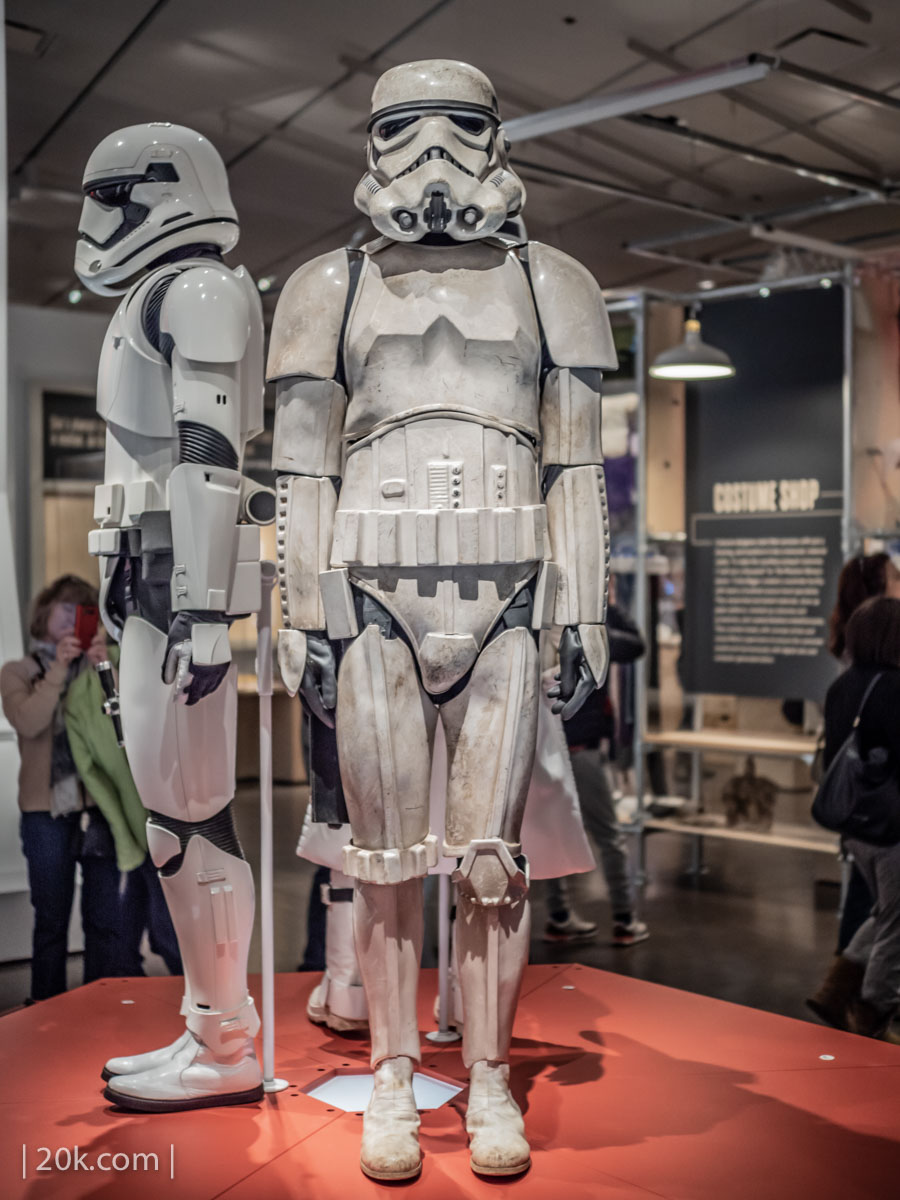
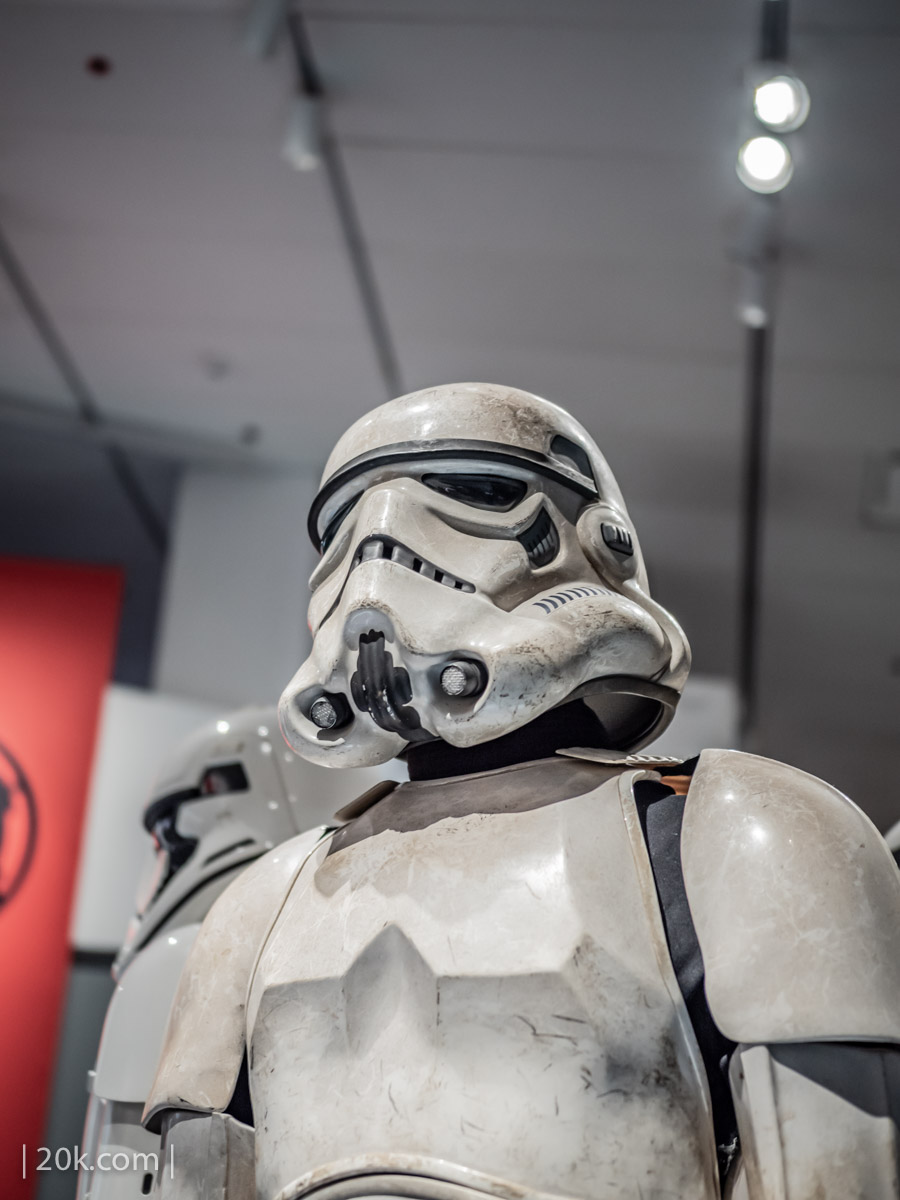
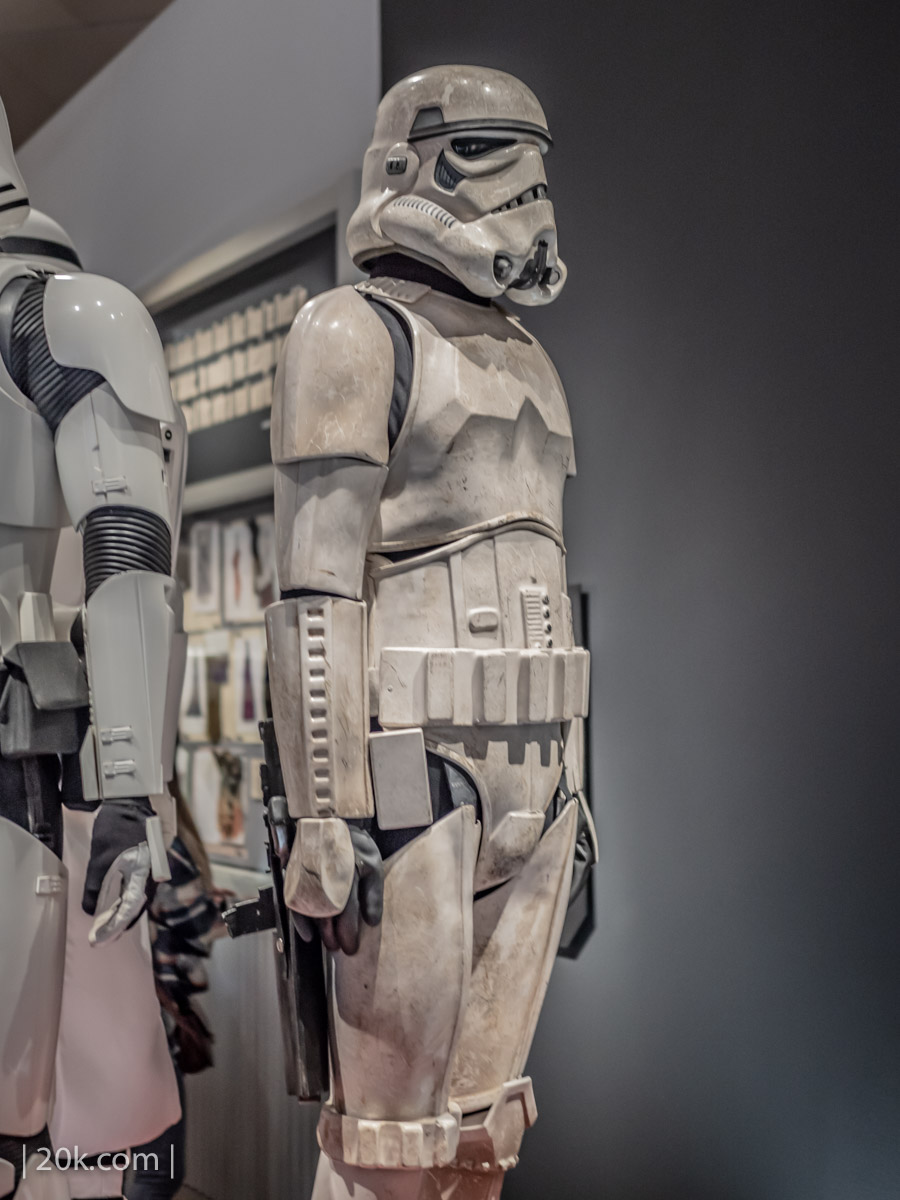
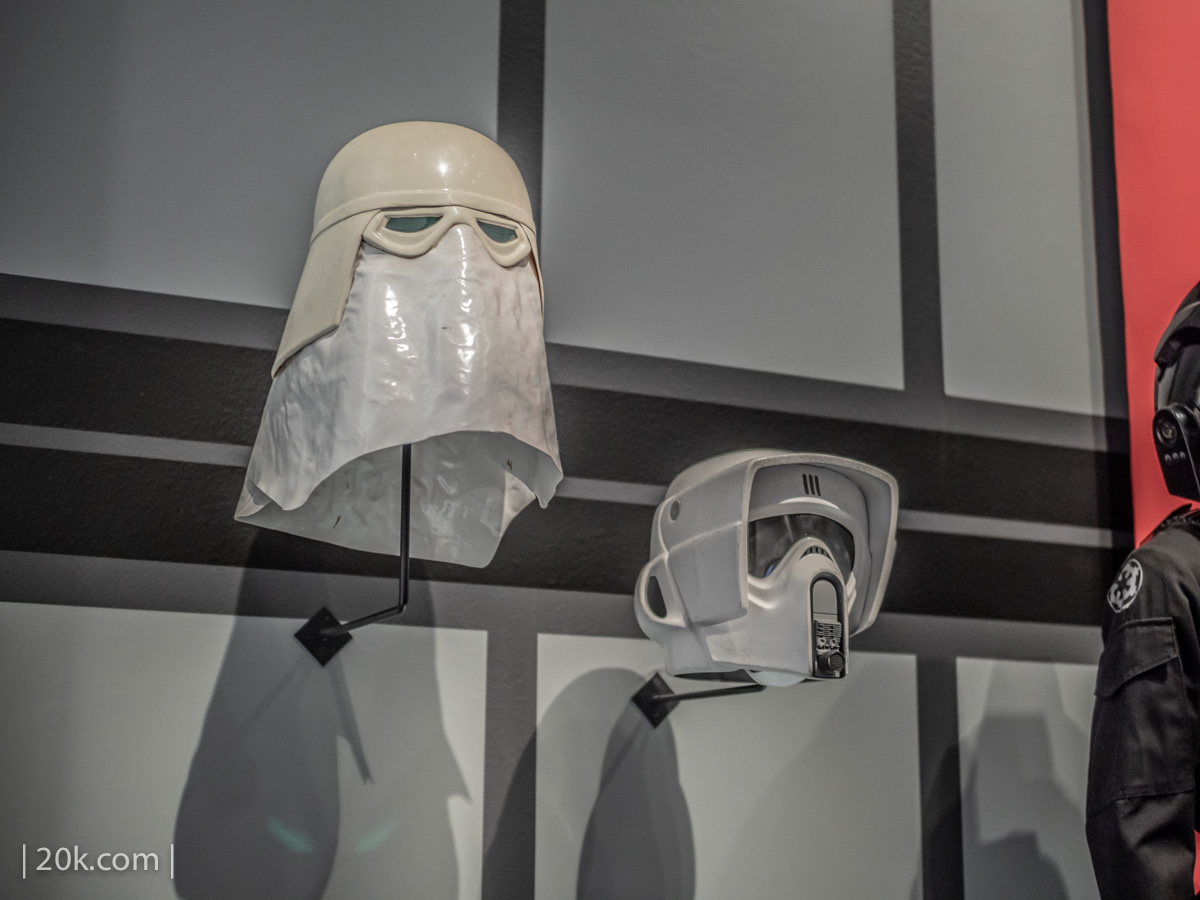
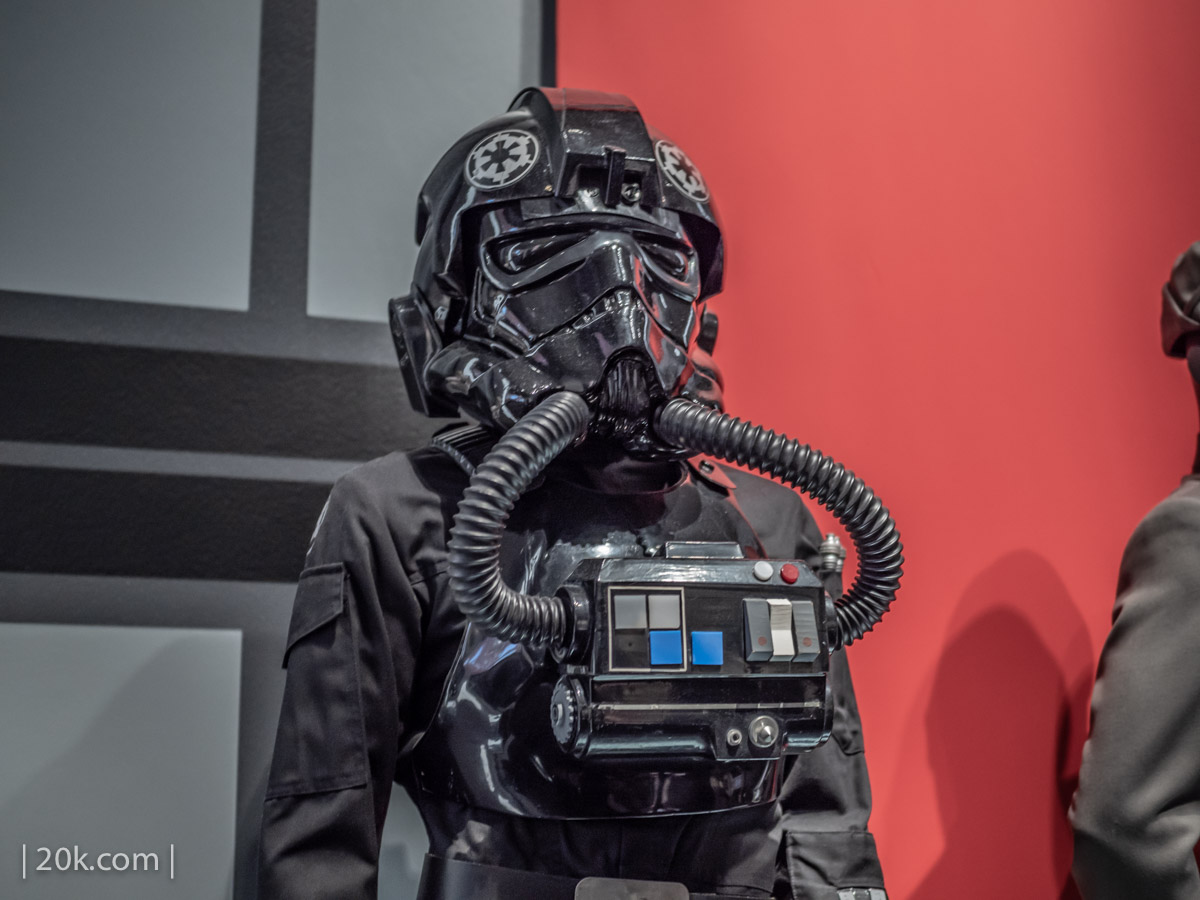
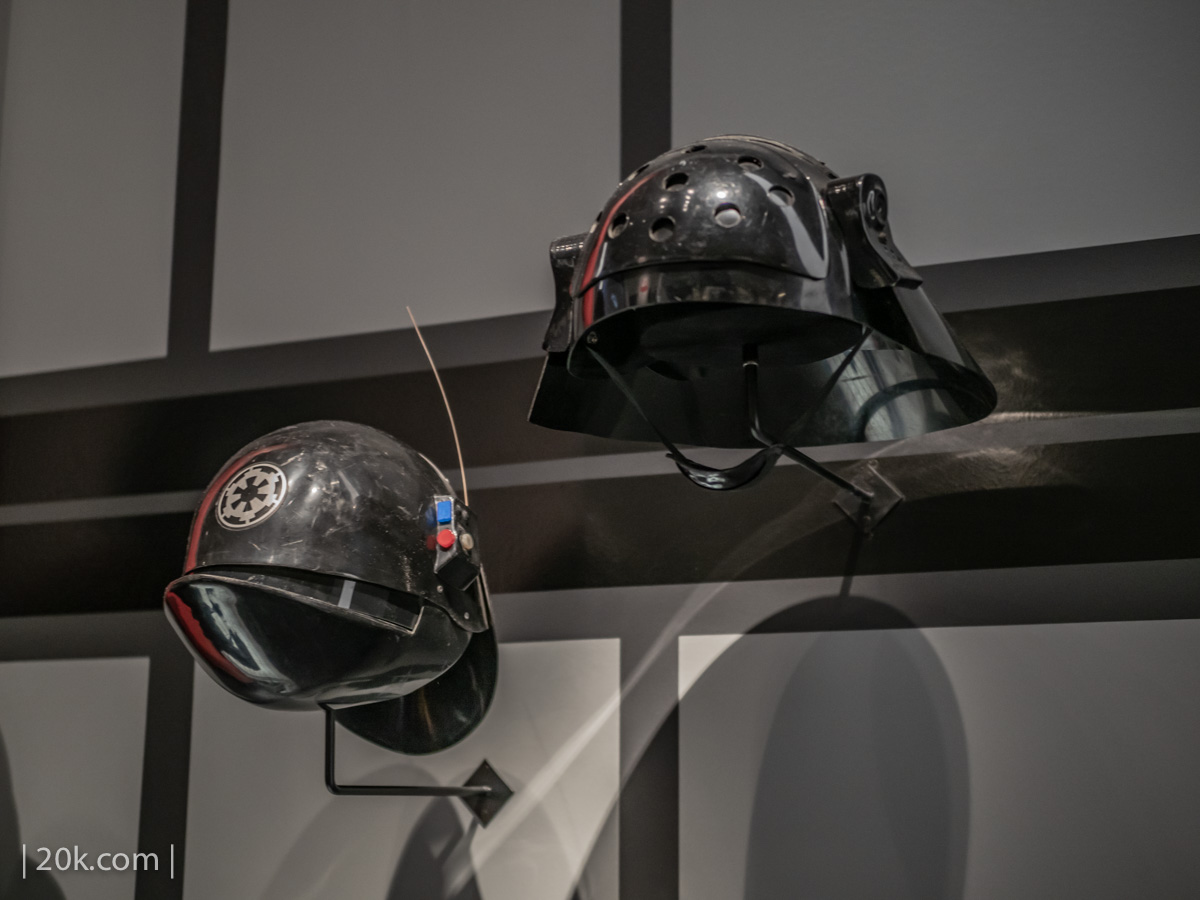

But then camera technology advanced faster than Moore’s Law (I don’t know that) in the fourteen years that passed between Return of the Jedi and The Phantom Menace, and filmmakers could not get away with crummy-looking things in their movies anymore and the costumes displayed from the prequels reflected this. The costumes were beyond exquisite and held up under scrutiny to even the closest eye. In spite of the film’s production bristling with technological filmmaking firsts and marvels, one quaint low-tech costume element I was surprised to learn of was the electrical system powering the lights in one of Queen Amidala’s / Natalie Portman’s throne room gown.
It turns out a 12-volt motorcycle battery was used to power the lights ringing the base of the costume. This battery was on a little cart that rolled between Portman’s legs, concealed by the costume.
I decided to have lots of thoughts to think about the reasons this might have been the case.
At first thought, I asked myself, why didn’t they just use small swappable lithium ion batteries to power the LEDs in the costume? Then it dawned on me that the costume was likely developed between 1994 and 1996 and LED technology had not yet blossomed. Heck, Daft Punk’s helmet’s were not developed for another five years and even they needed a lot of hardware. Adding on to that, LEDs were still only capable of cold bright light and their refresh rates may have caused banding with the digital camera technology being used, so it’s distinctly possible that to achieve the soft warm glow the costume had, Lucas opted to go old school and use incandescent bulbs inside the costume. It probably got quite hot in there.
One interesting costume from the original films was Luke Skywalker’s/Mark Hammill’s robes from Return of the Jedi. While they were designed to look like humble burlap, they were in fact, silk! Even up close, you could not tell. It was very impressive.
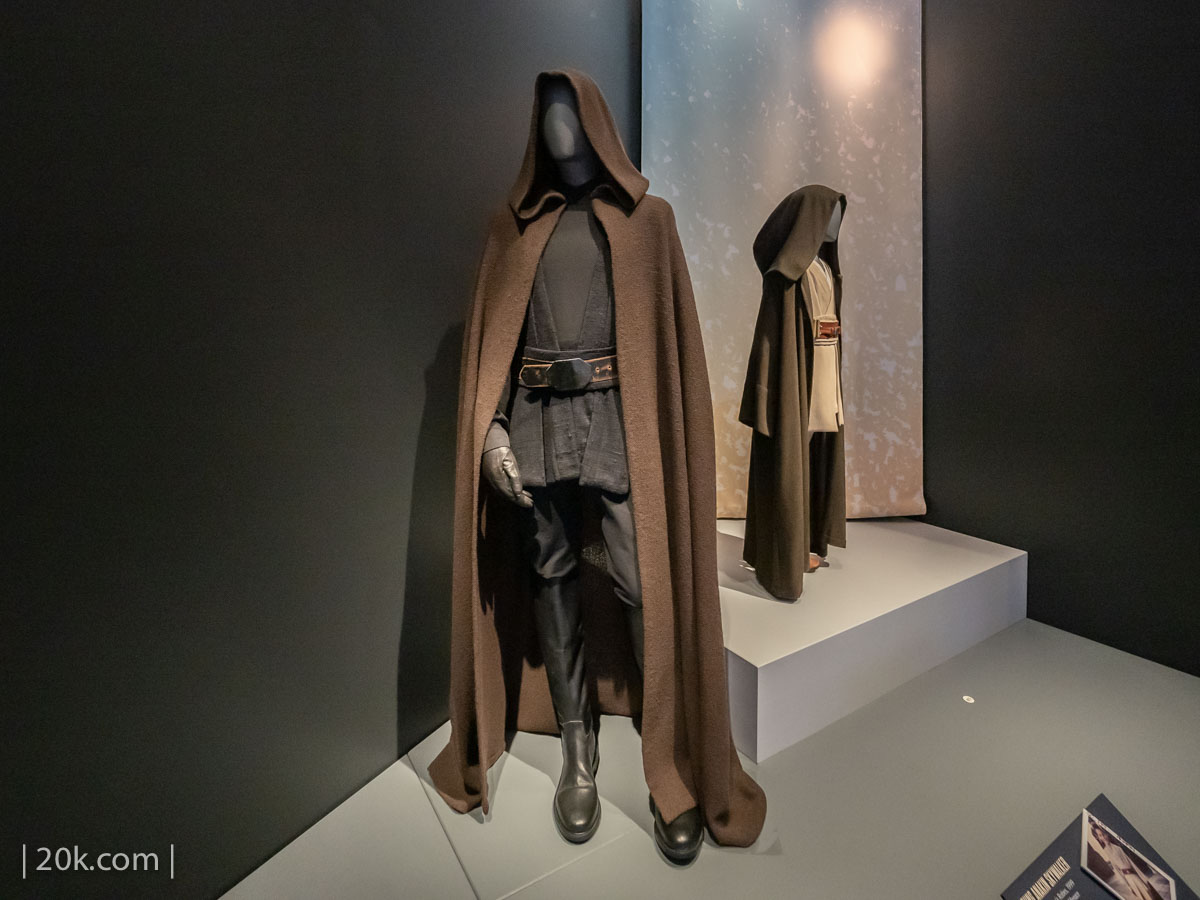
The exhibit was remarkably thorough. Even something as small and inconsequential as Princess Leia’s/Carrie Fischer’s wristwatch was displayed. On the topic of small and seemingly inconsequential, was the unbelievable levels of detail in the costumes made for Queen Amidala and her court. It strains credulity that the AMPAS did not nominate The Phantom Menace for best costumes, and that it didn’t win for that matter. In fact, reviewing the nominees for 1999, I saw that The Talented Mr. Ripley was in there, but Phantom Menace was not. Seriously? I need to stop thinking angry thoughts about this, so let’s move on.
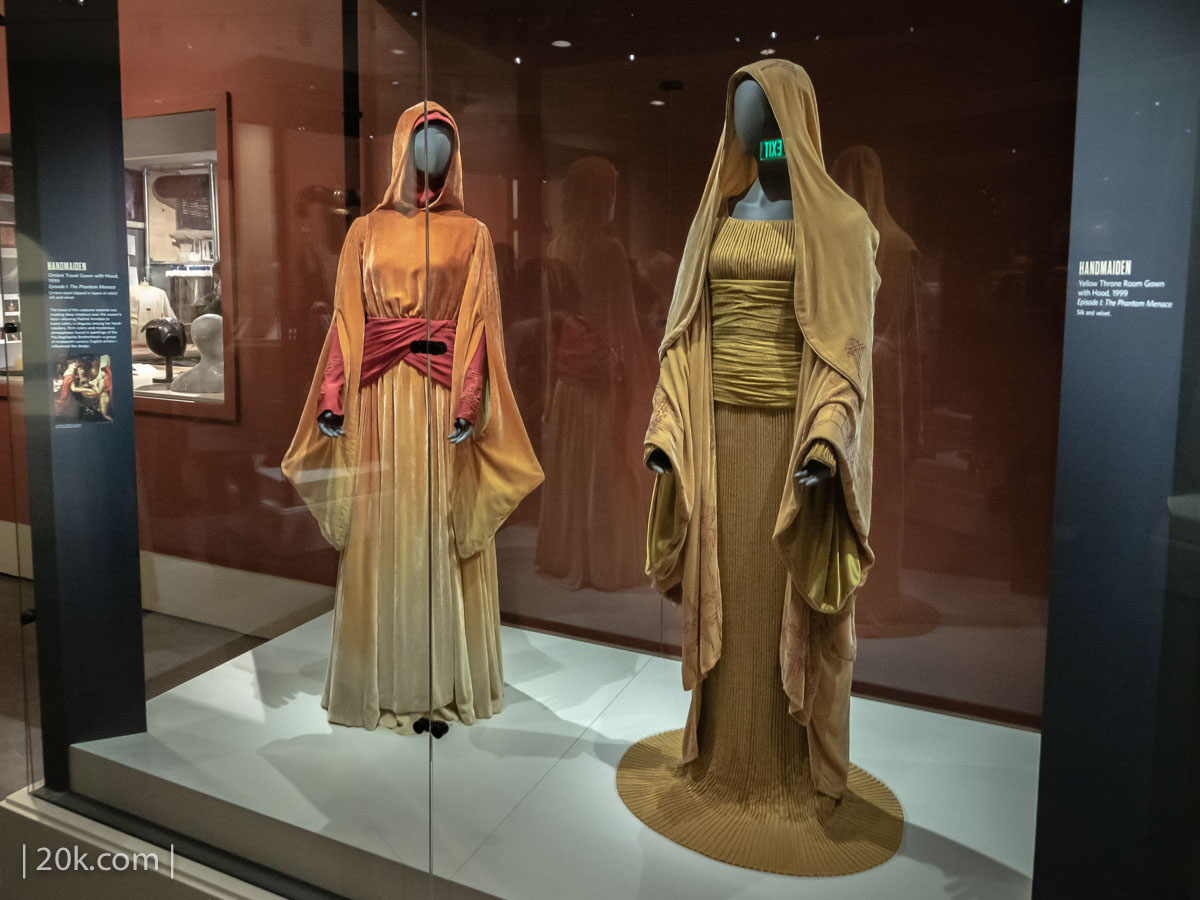
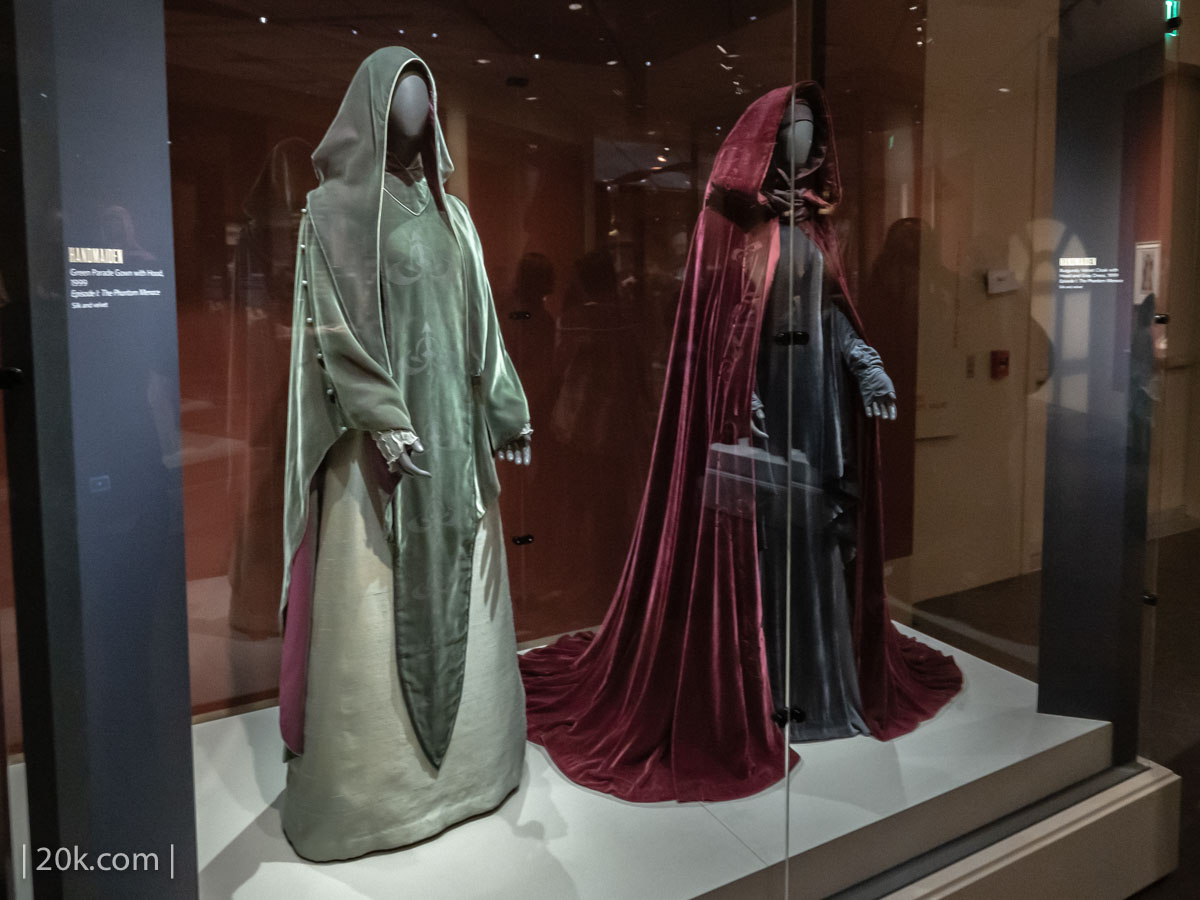
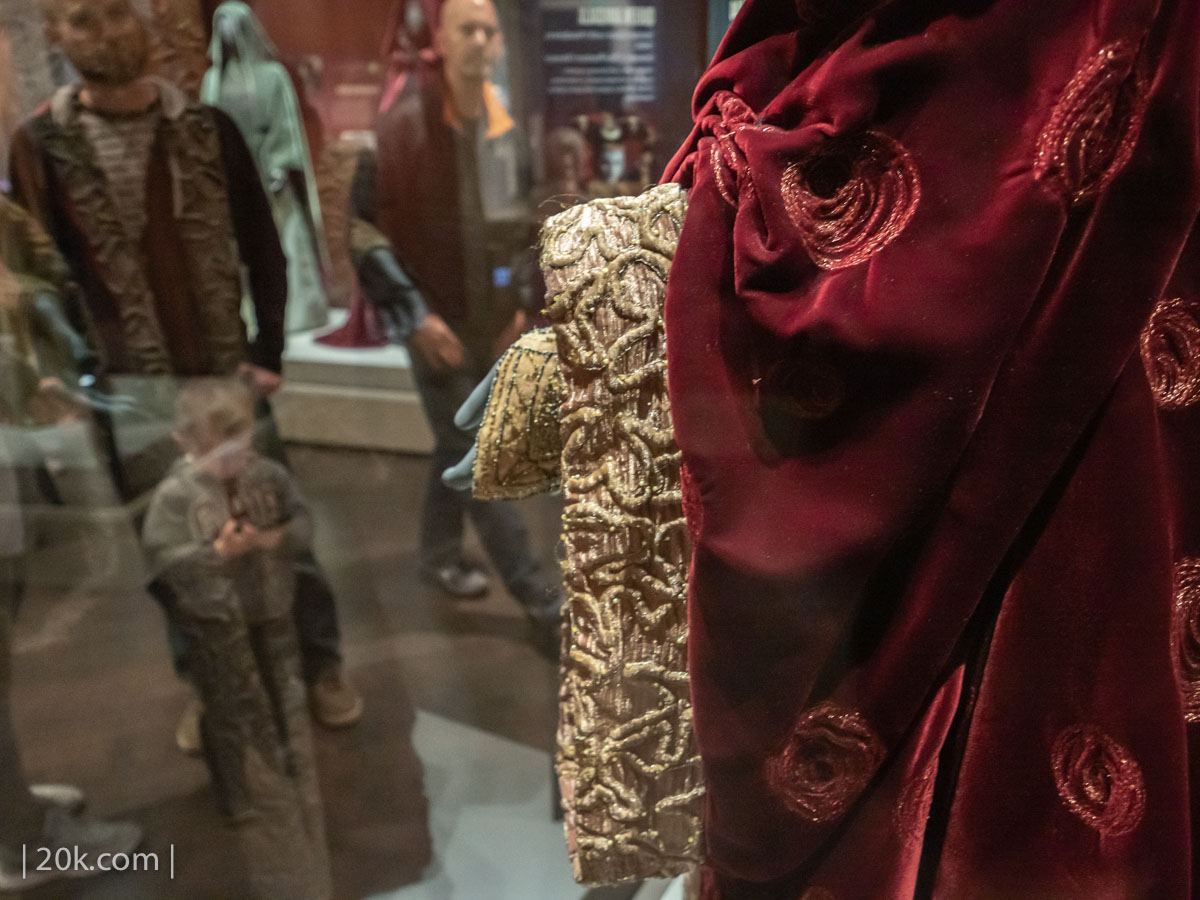
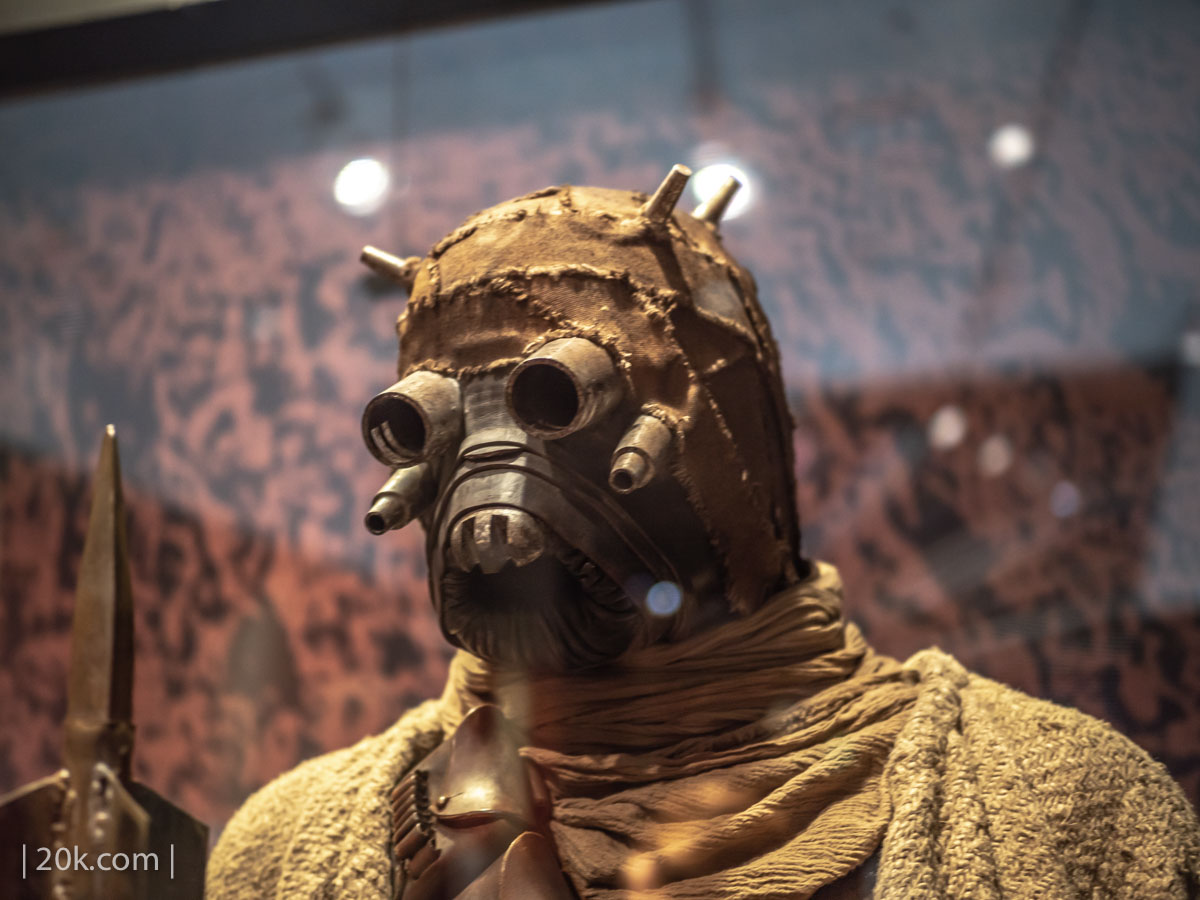
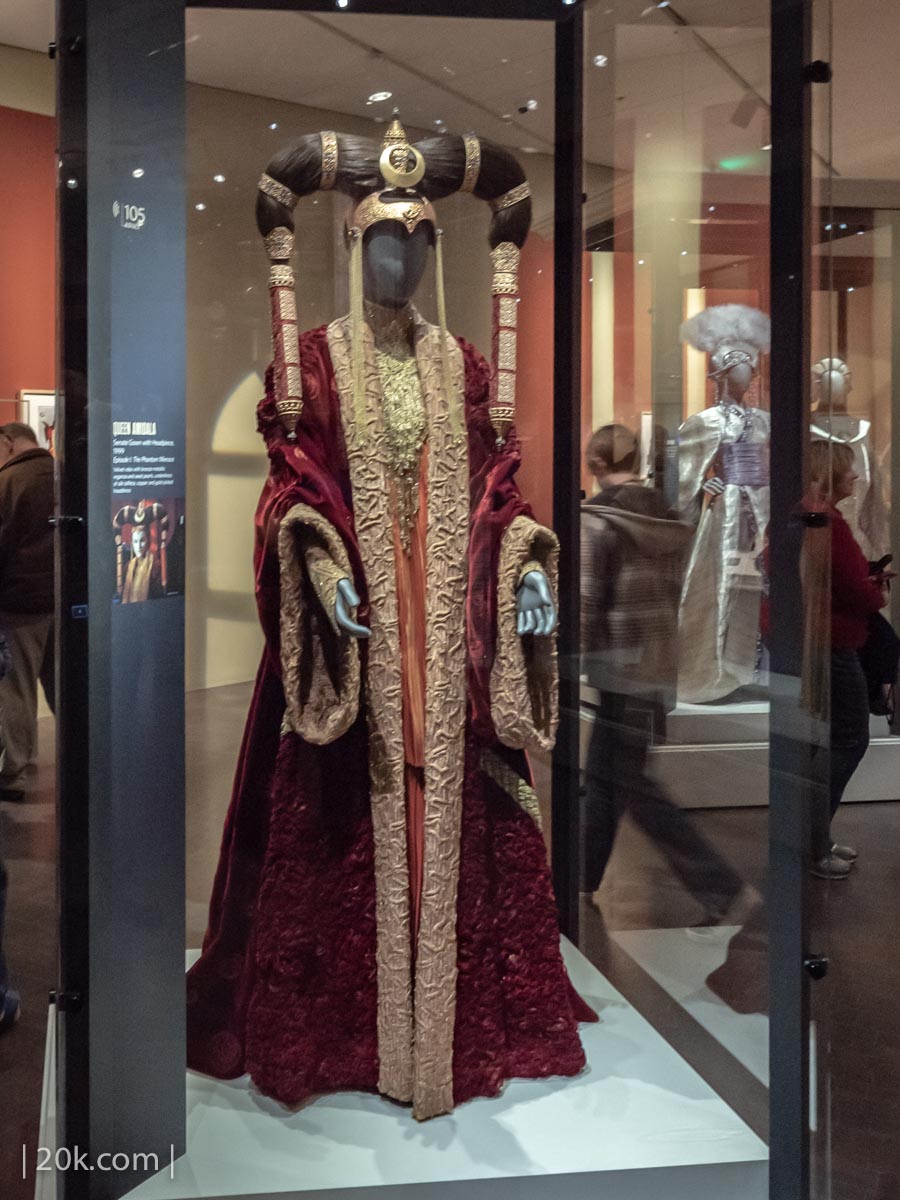
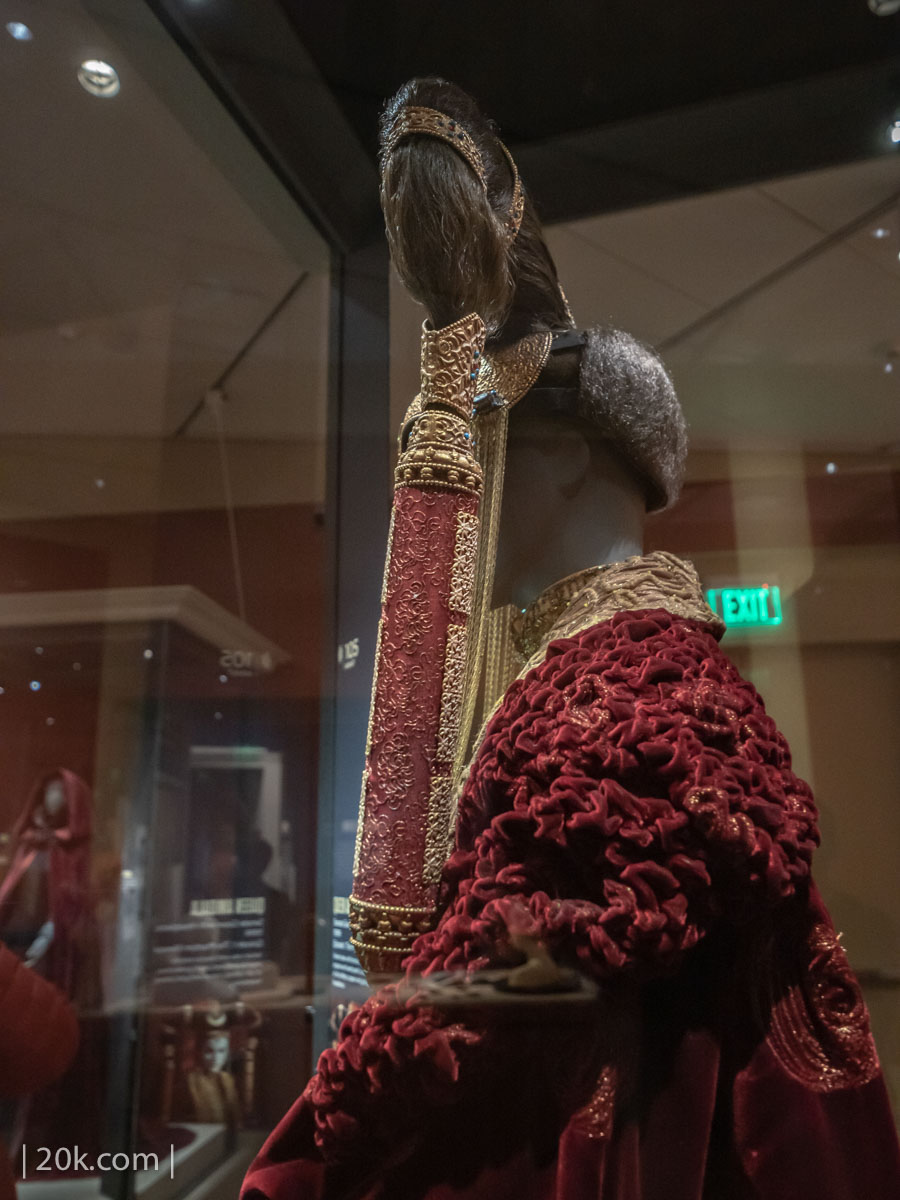
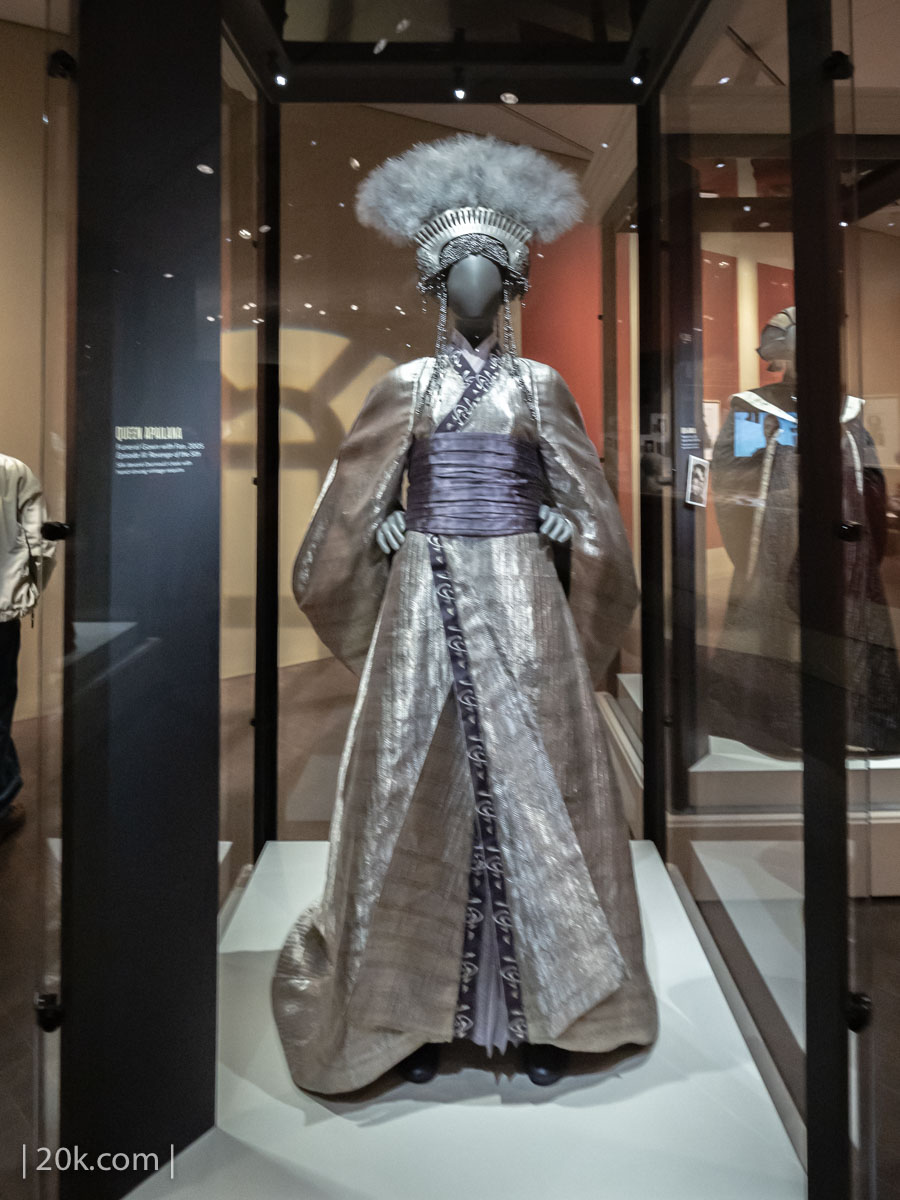
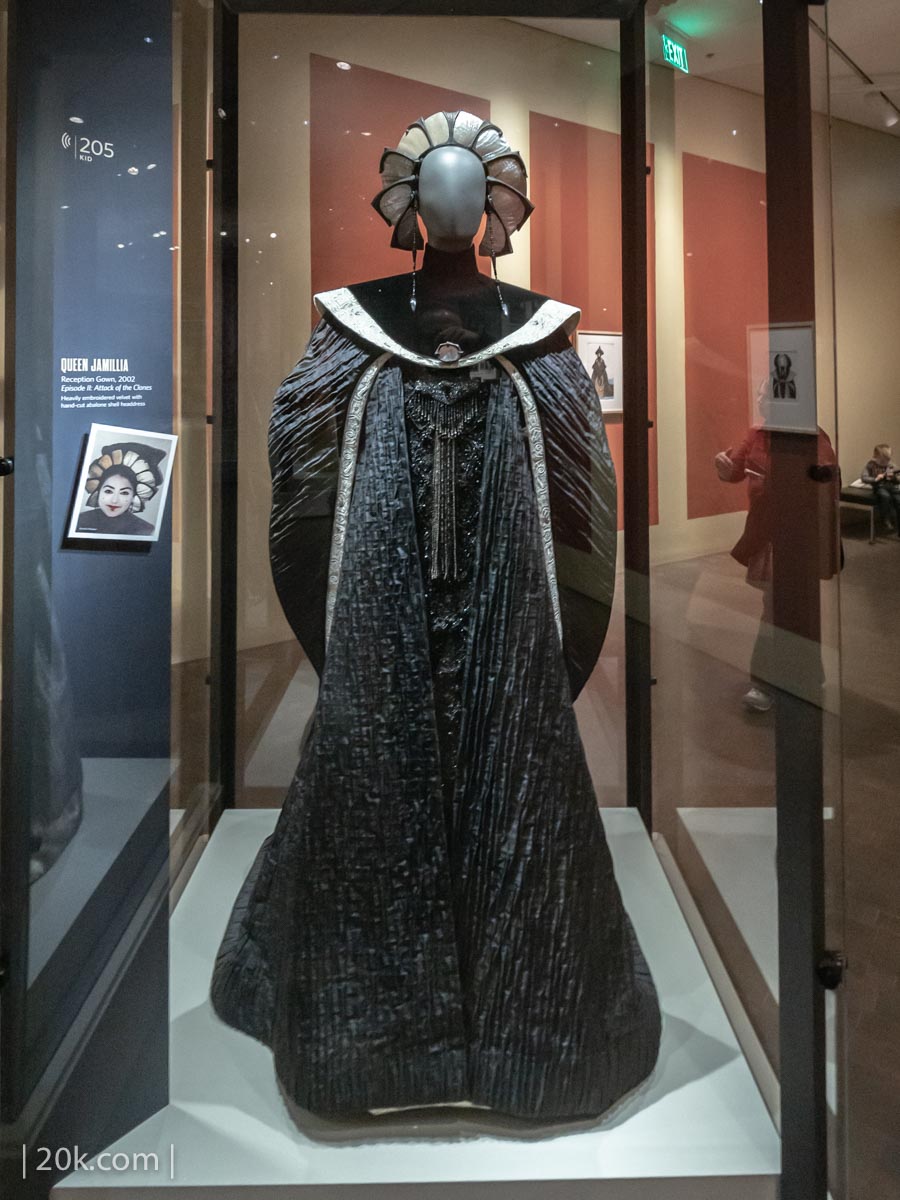
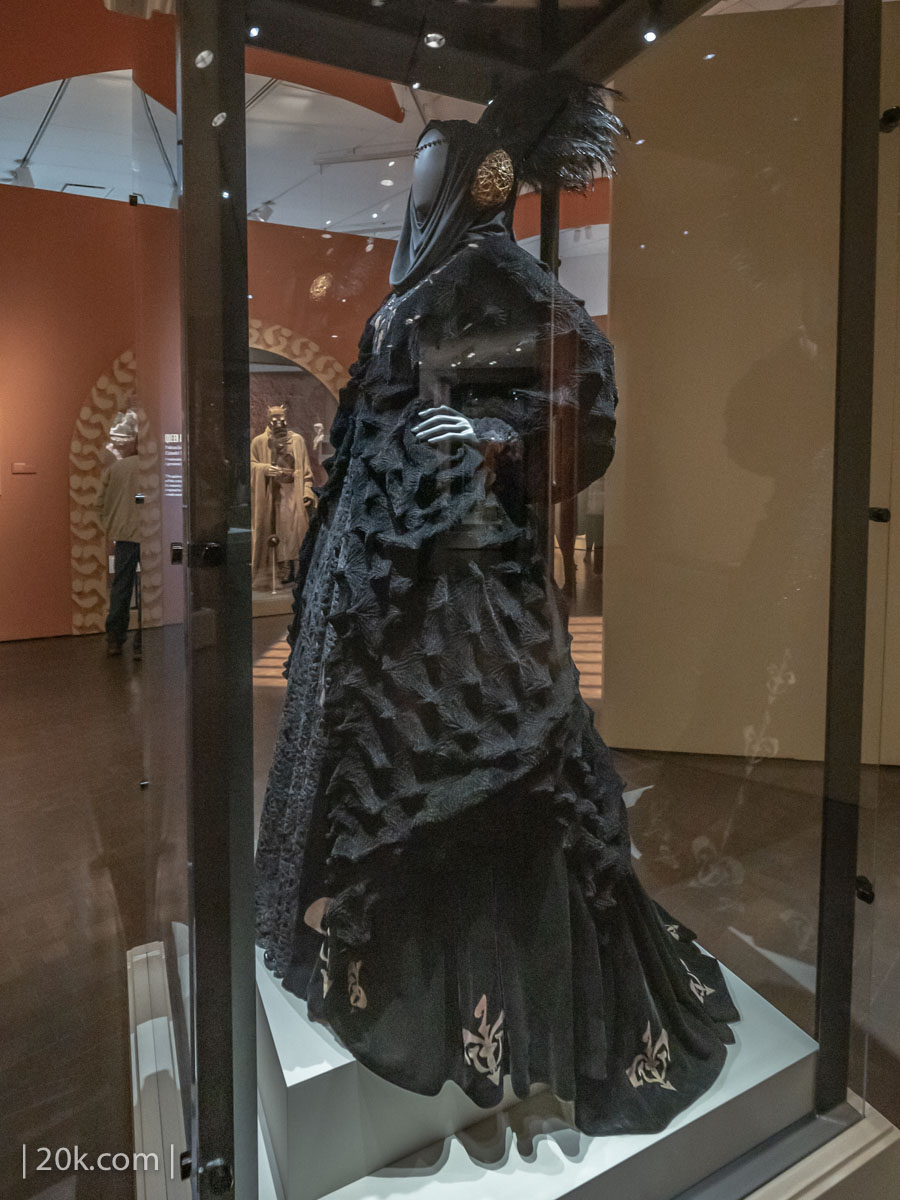
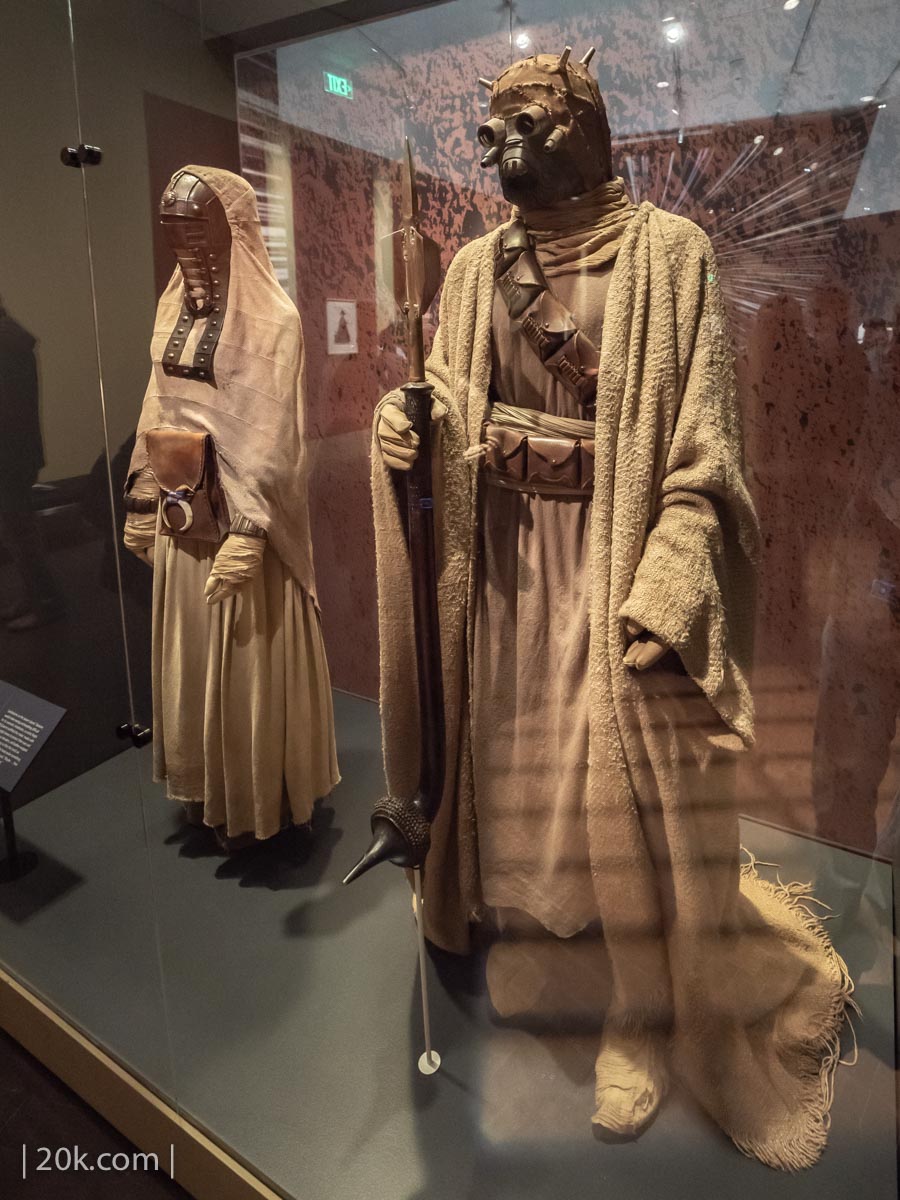
After passing by Amidala’s court, and a married Tusken Raider couple, and slave girl Leia, I arrived at C-3PO and R2-D2, and oh yeah, BB-8 was there too (don’t care). C-3P0 is a costume I was always particularly interested in, which once again, benefitted from old school film. In addition to a posed C-3PO, there was also a disassembled version showing select components of the costume, including the unitard worn by Anthony Daniels and the exposed wires mid-section which was so beautifully simple. It was just corduroy patterned after a back brace with sparse wires sewn into it and also strips of sparkly gold fabric! But when worn as a semi-exposed mid-riff, that corduroy looked like some kind of vented metal substructure on a droid, even in person. It was brilliant and effective! There were also some R2-D2 components as well.

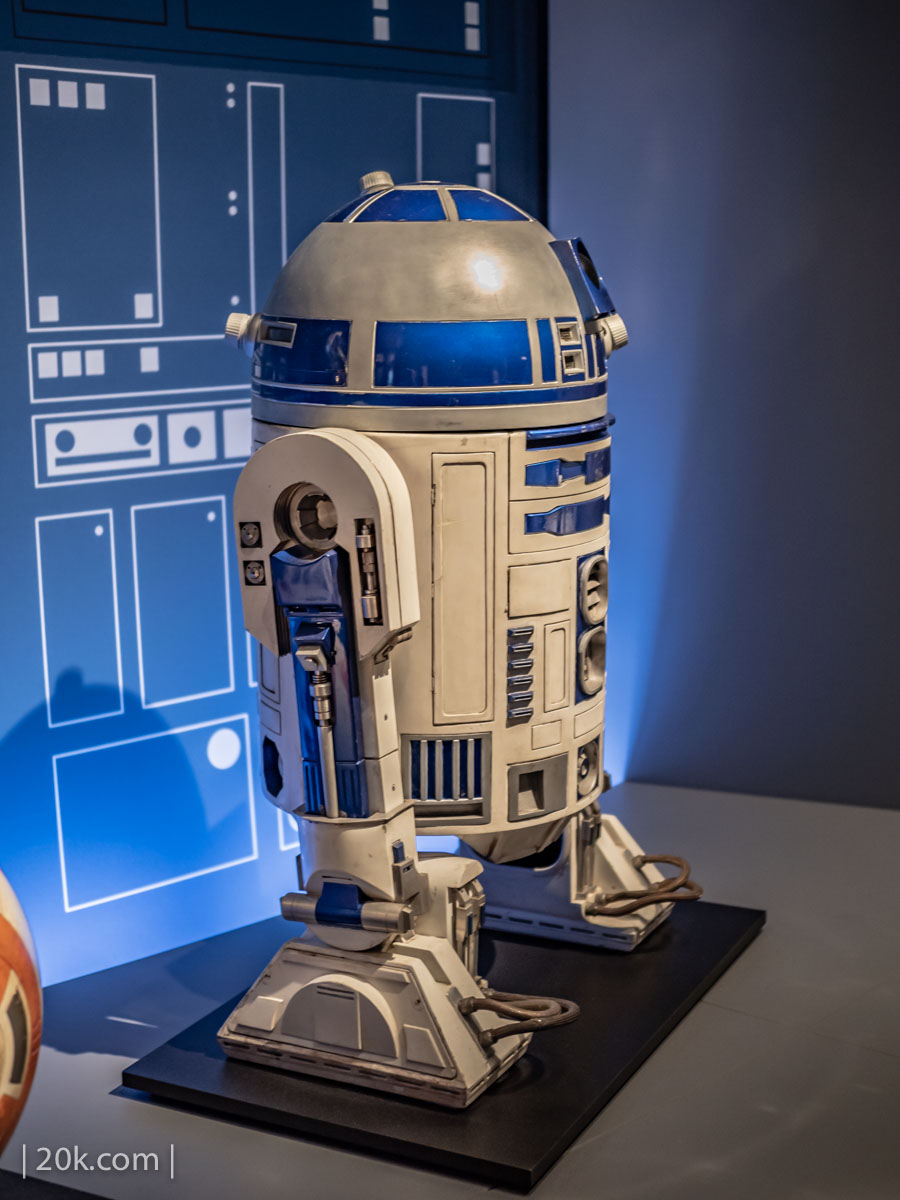
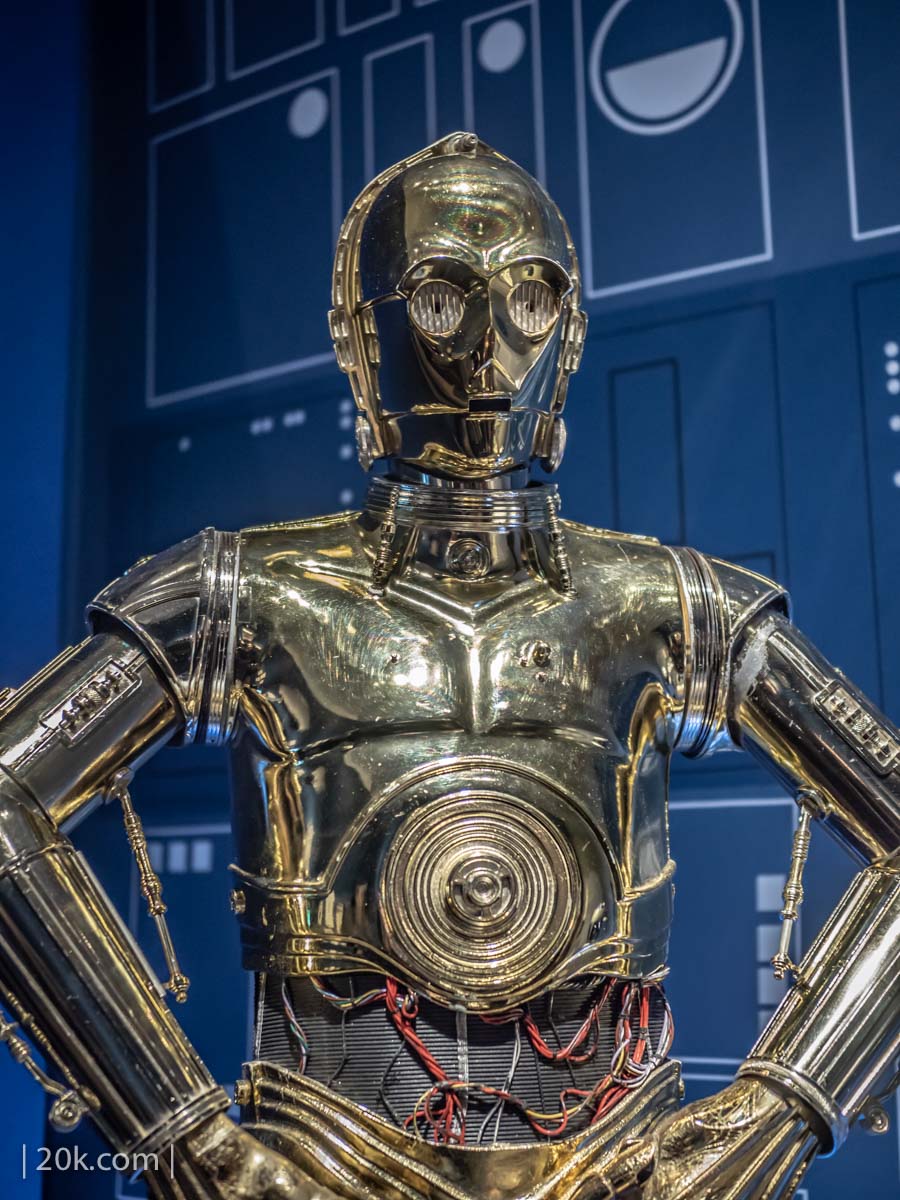
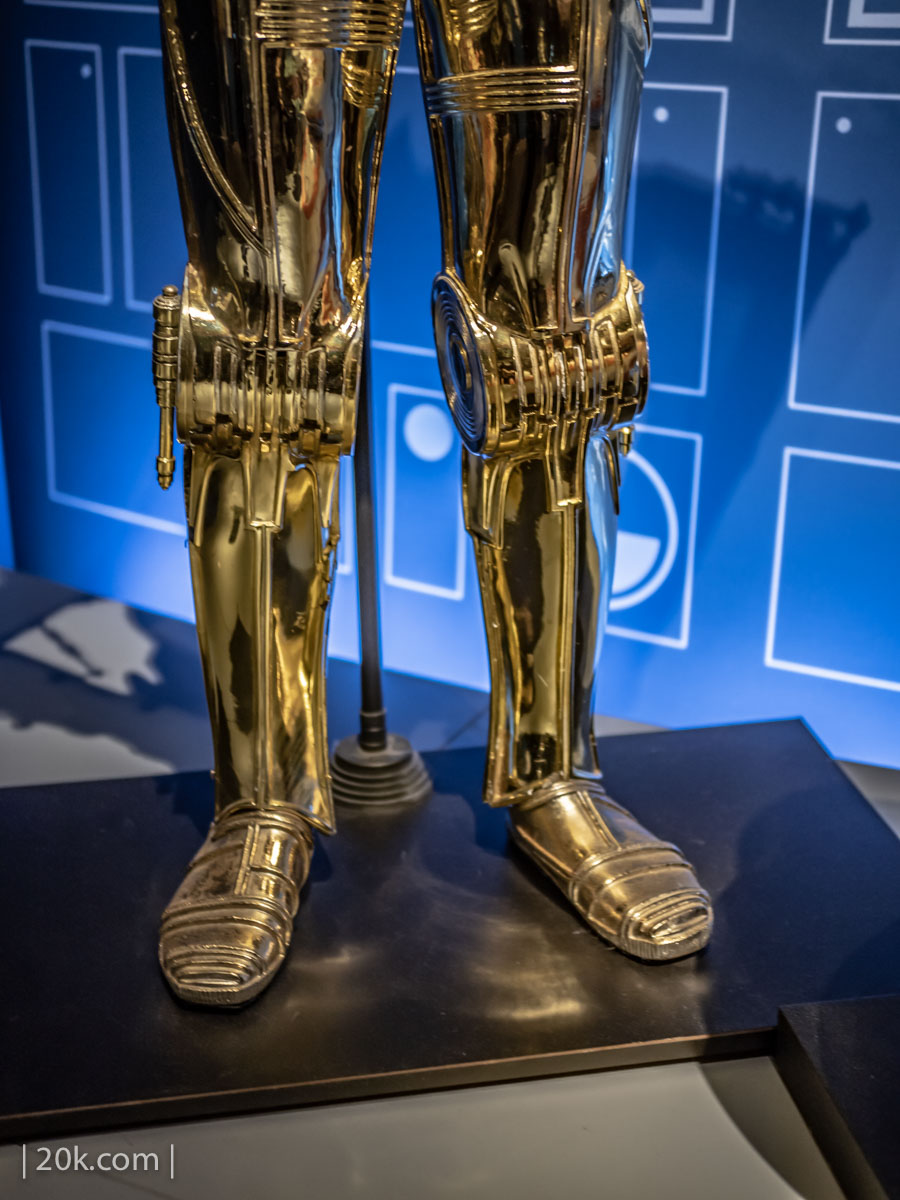
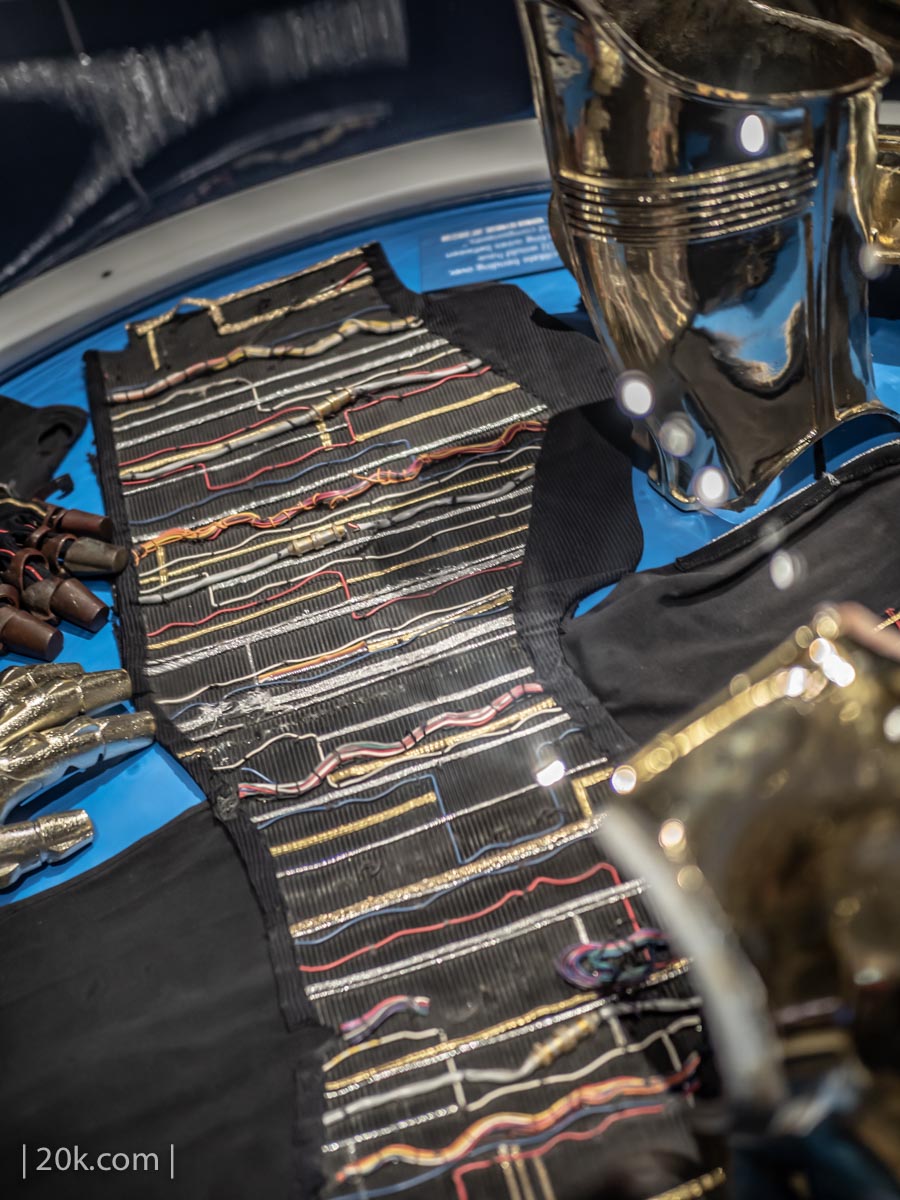

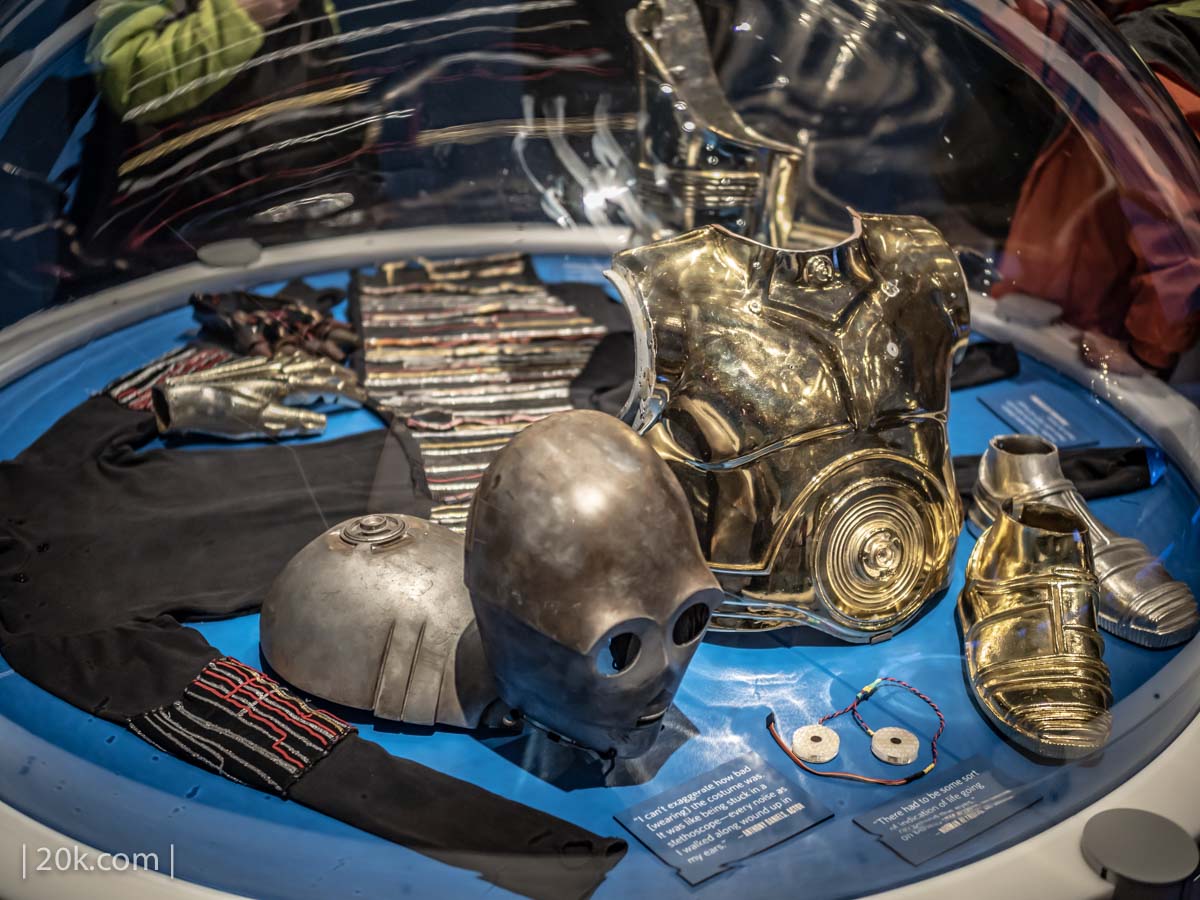
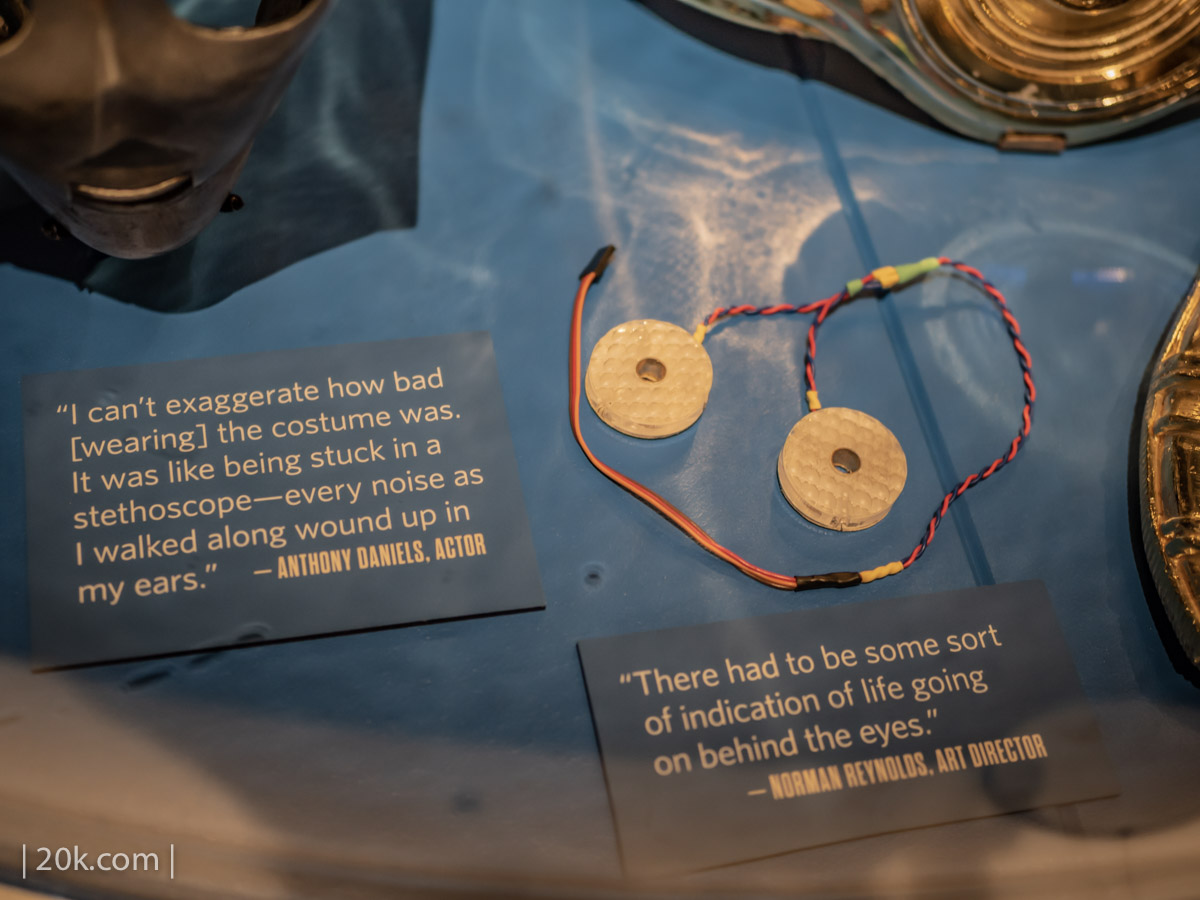
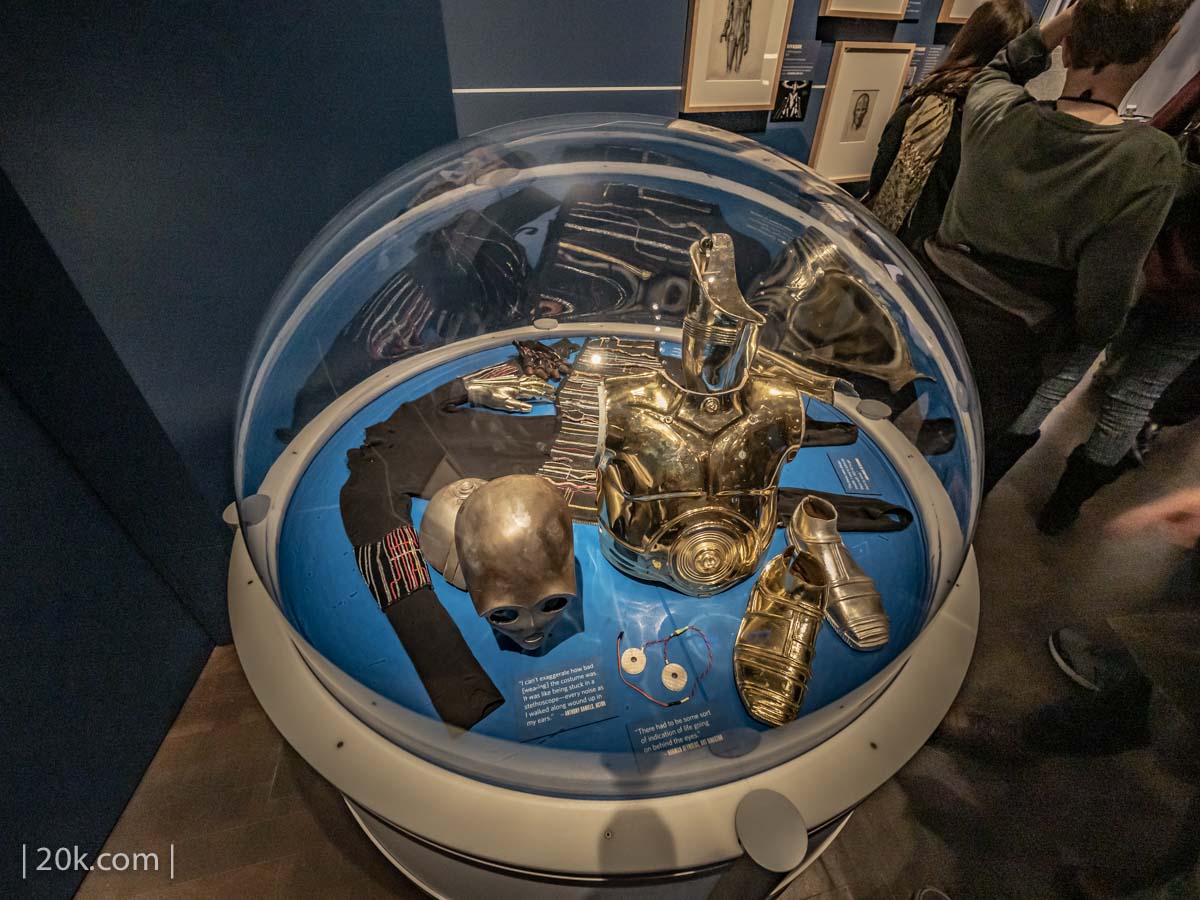
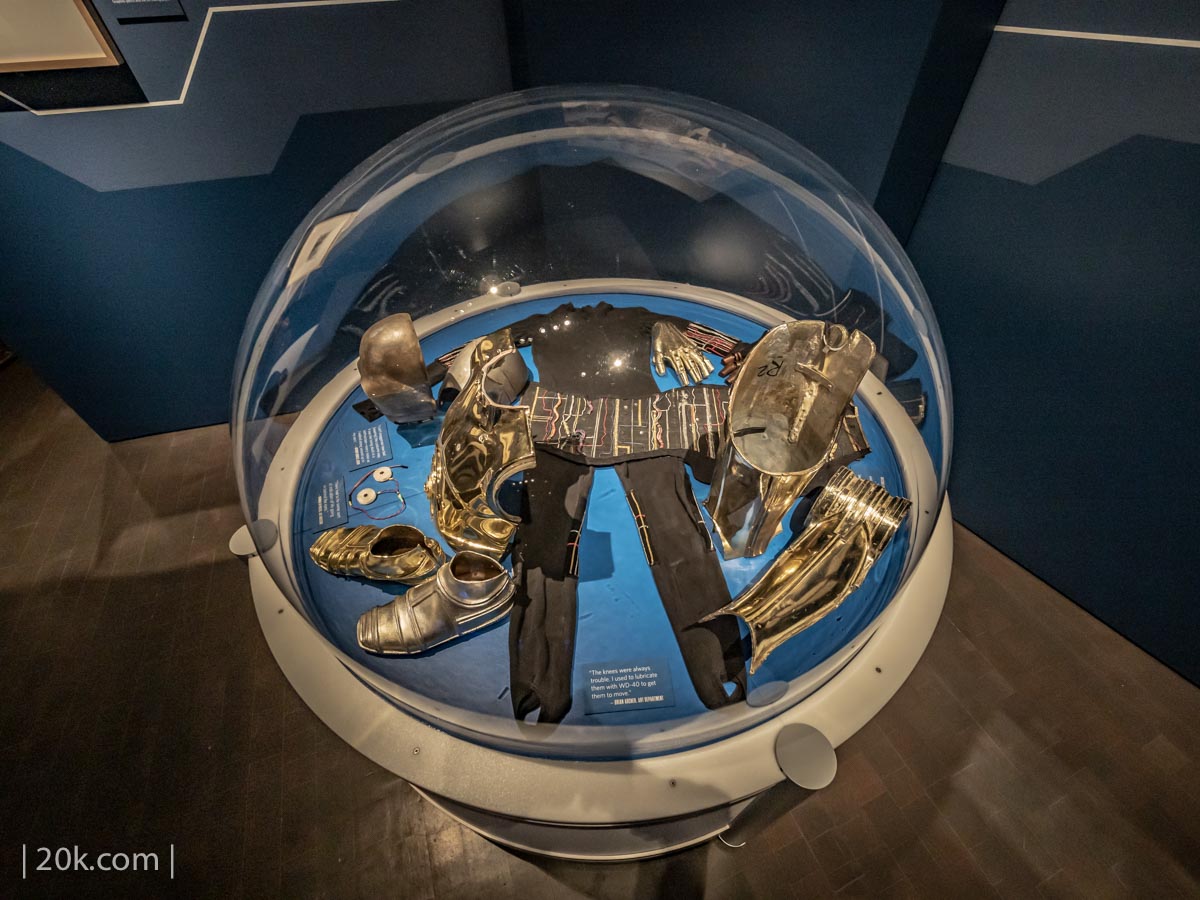
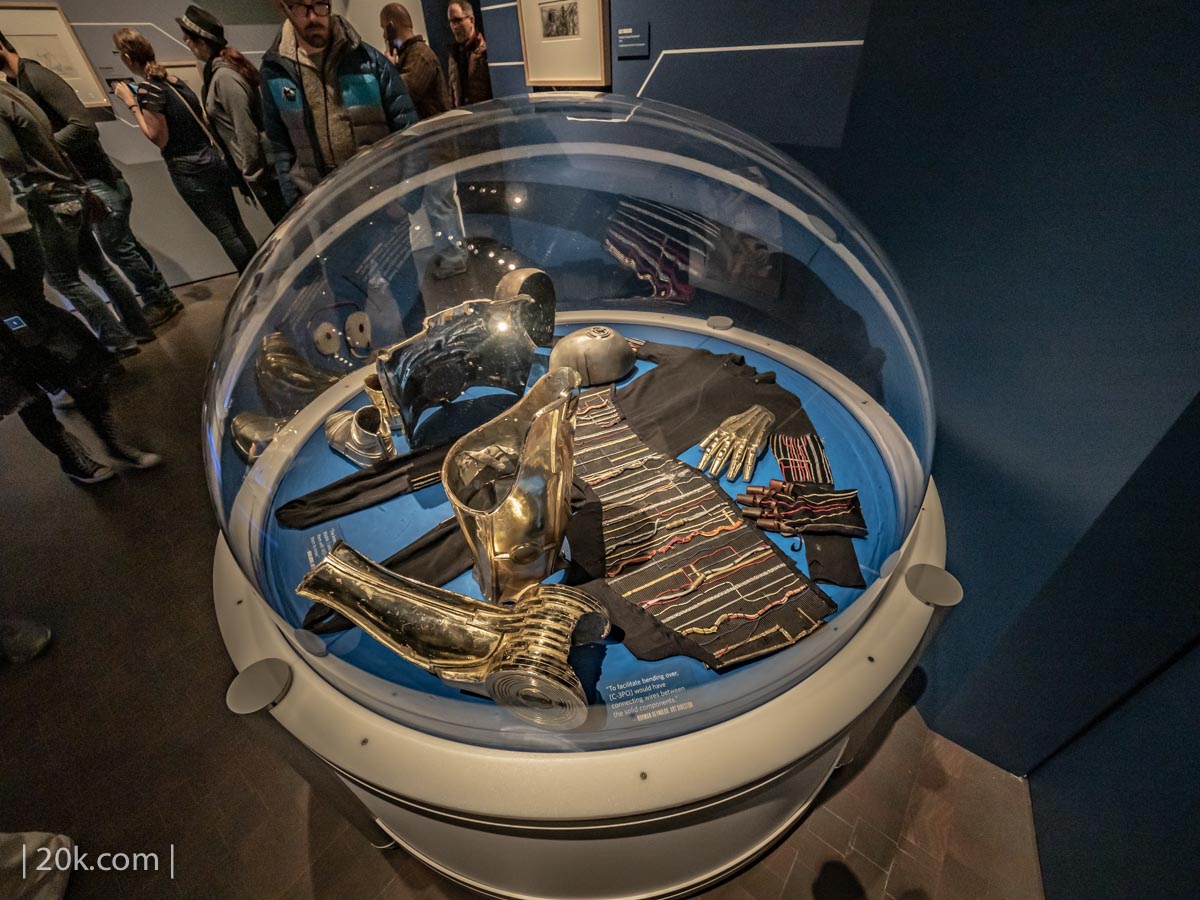
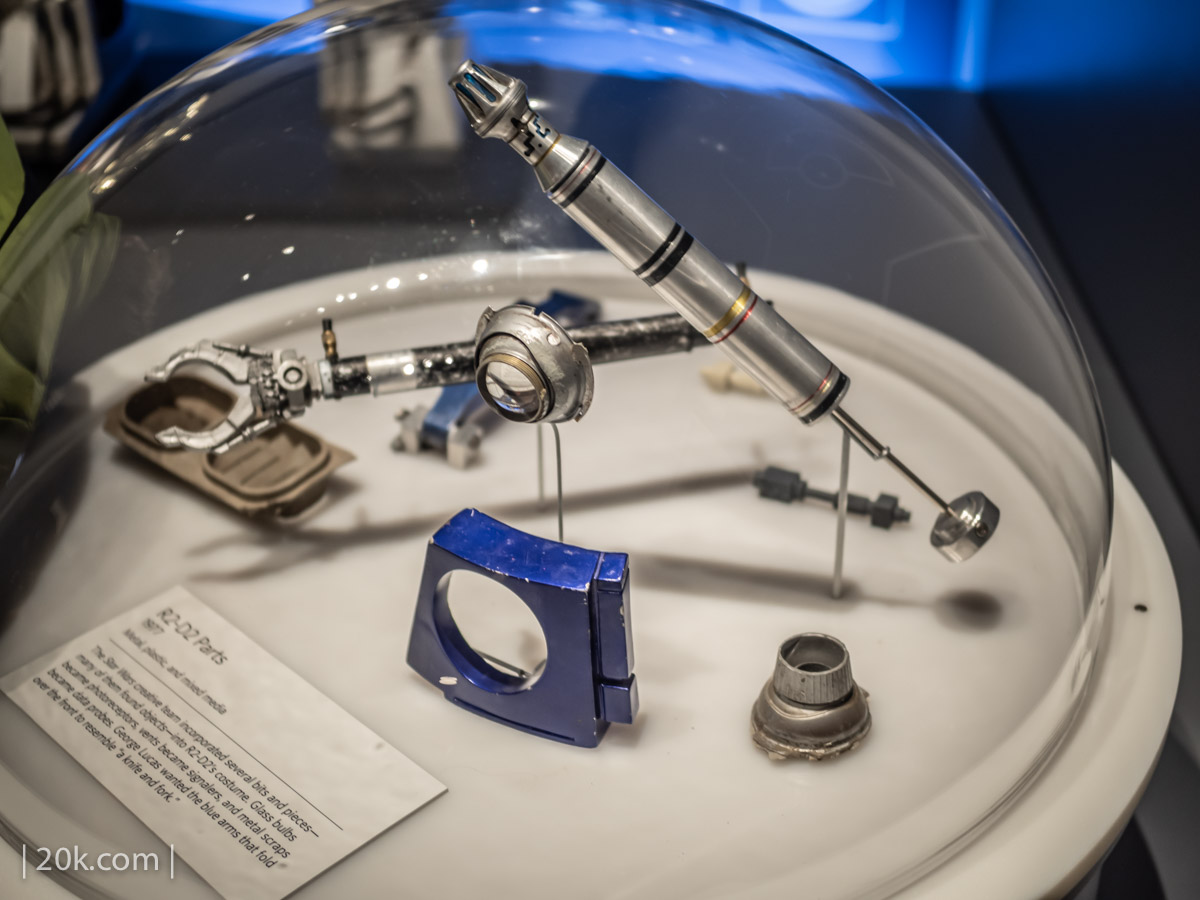
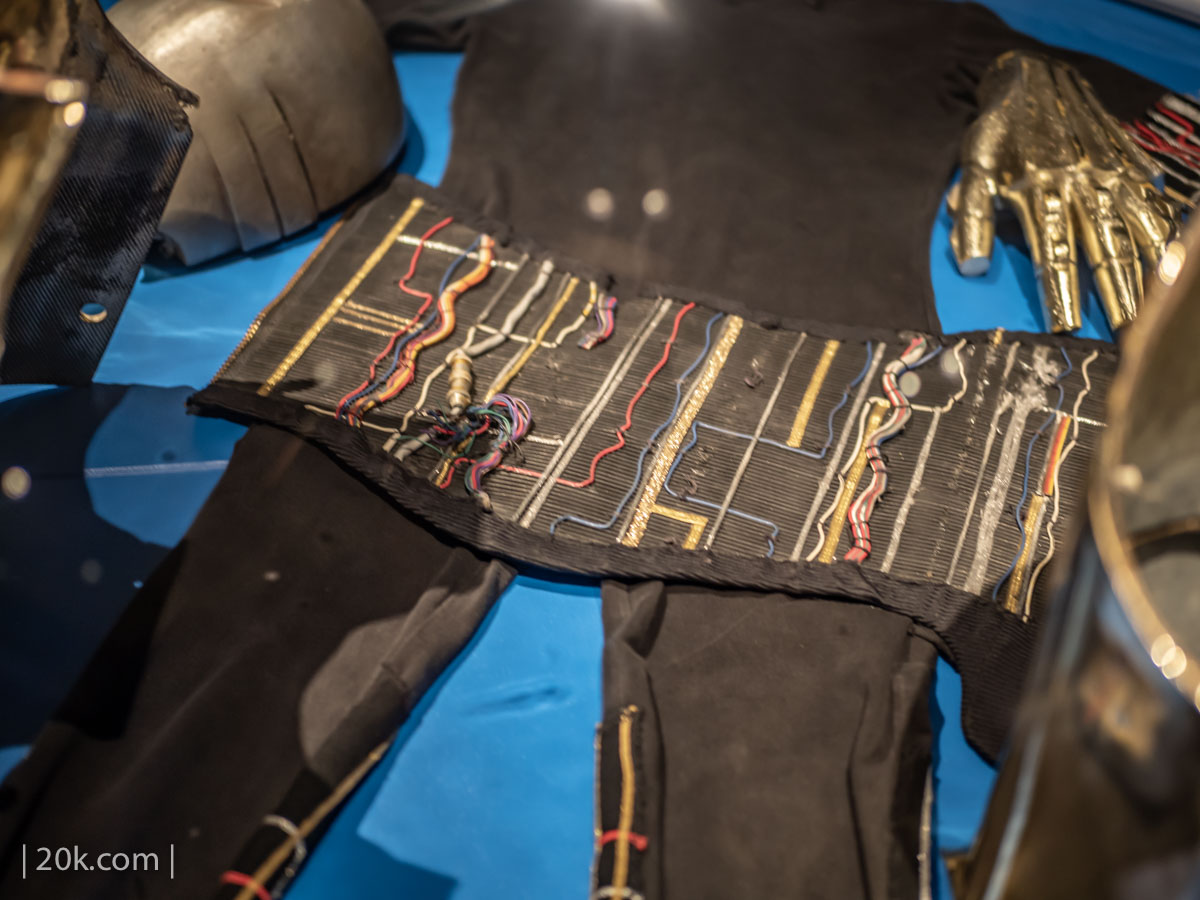
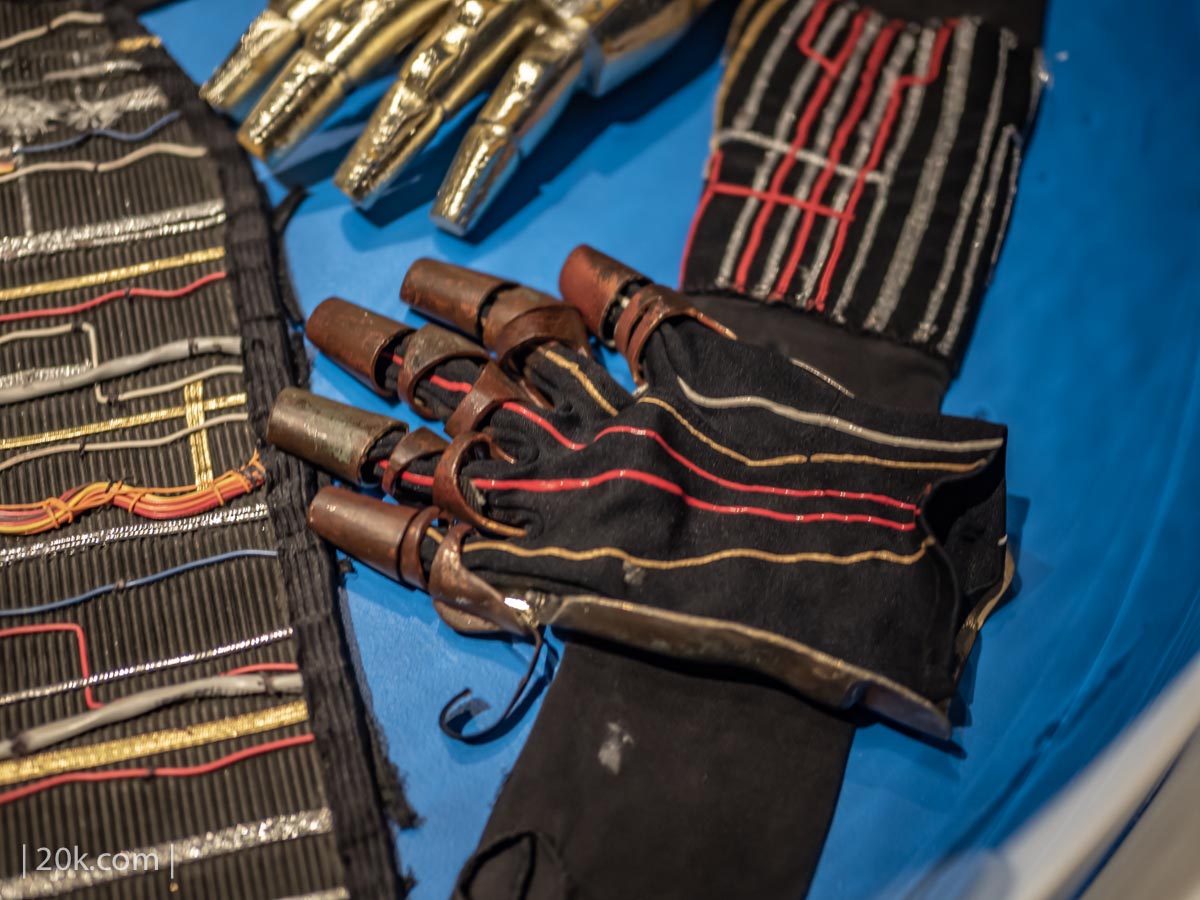
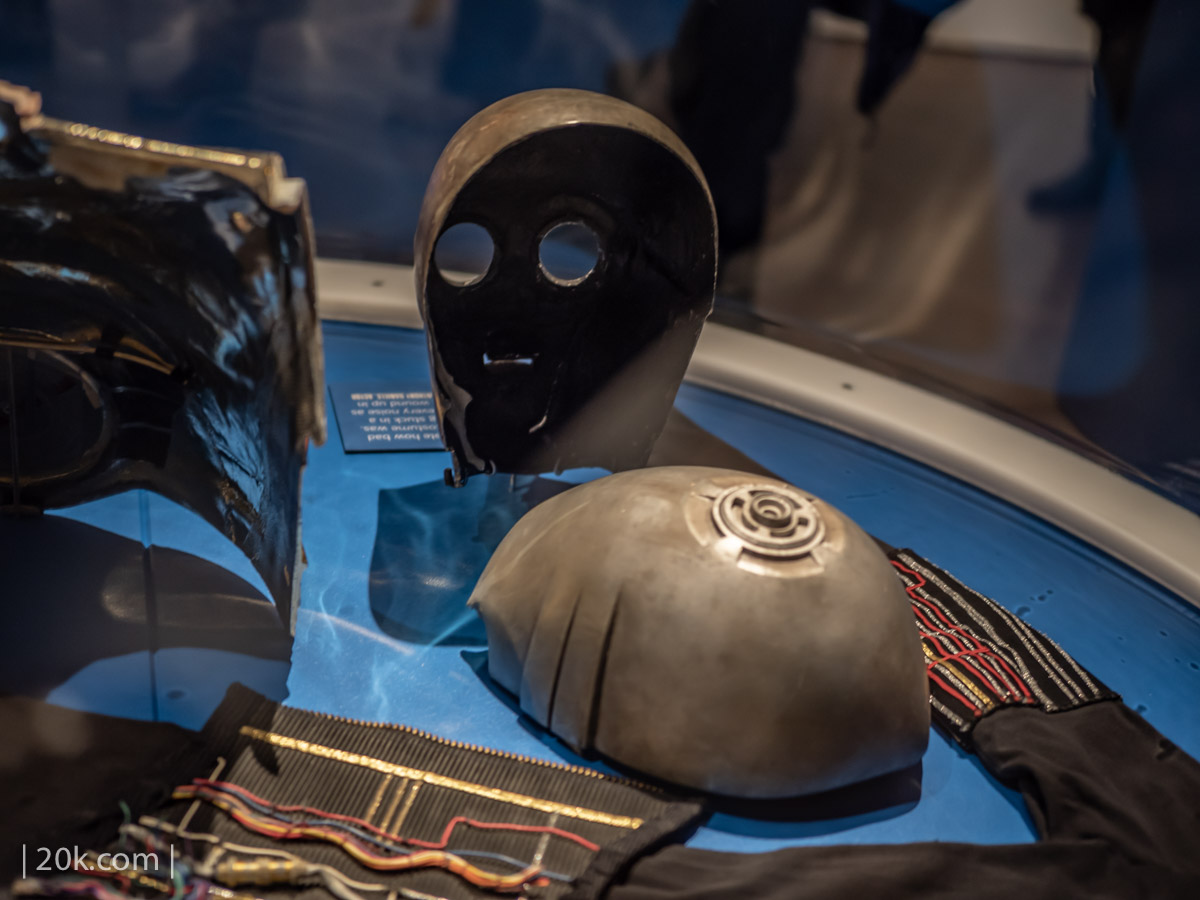
One of these bubble cases also contained a series of alien character maquettes from the Star Wars Universe. These maquettes meant a lot to me, as they were on the cover of an issue of Smithsonian magazine that featured, and was my first introduction to, Industrial Light and Magic. I was happy to see they had been taken care of and were here on display to experience in person.
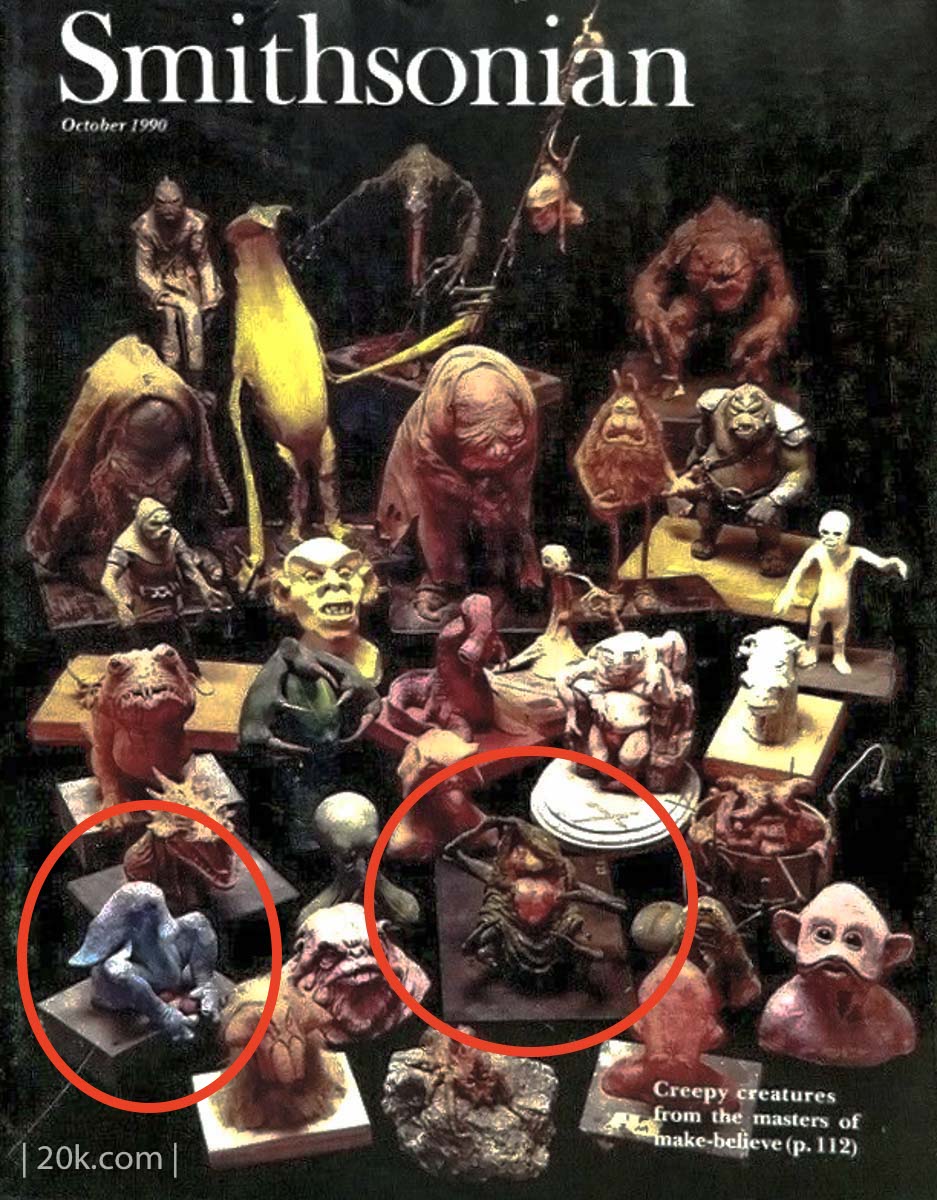
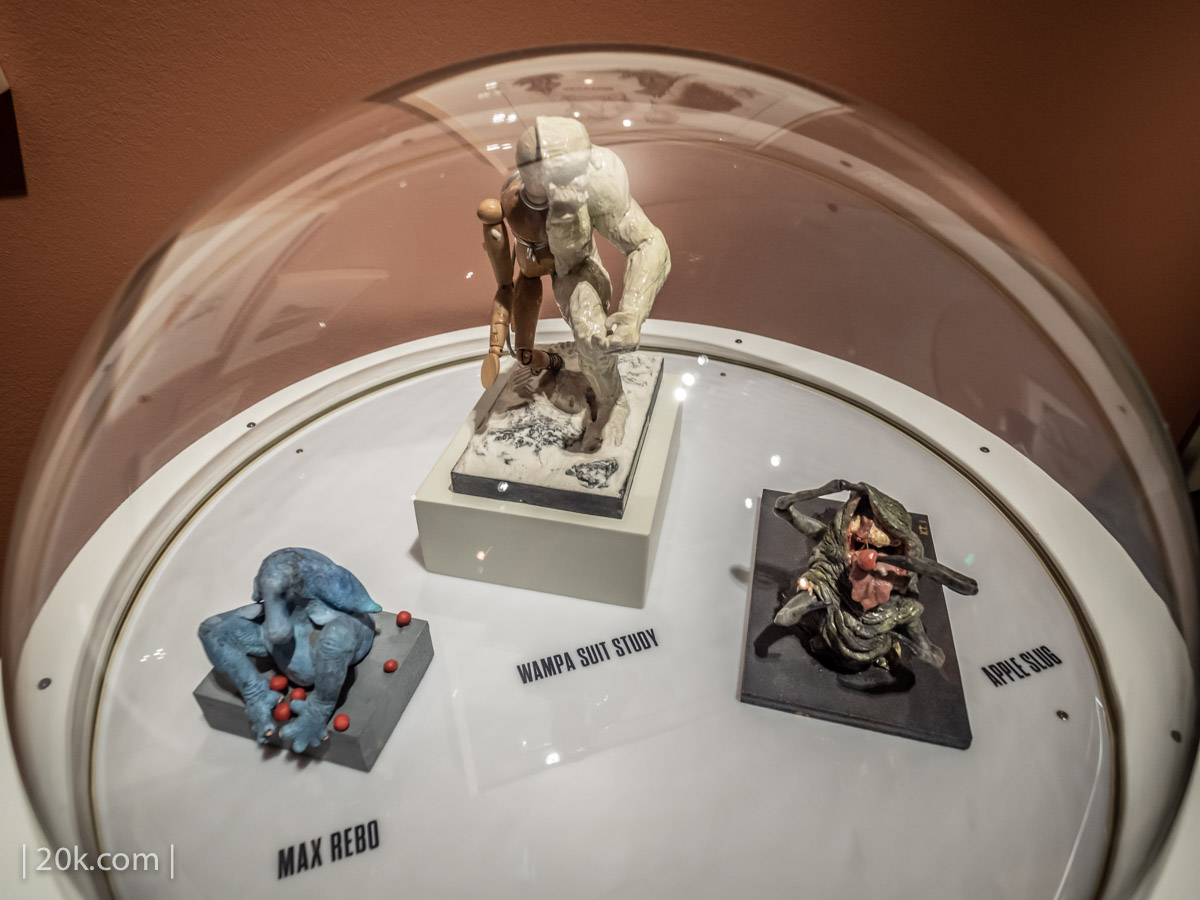
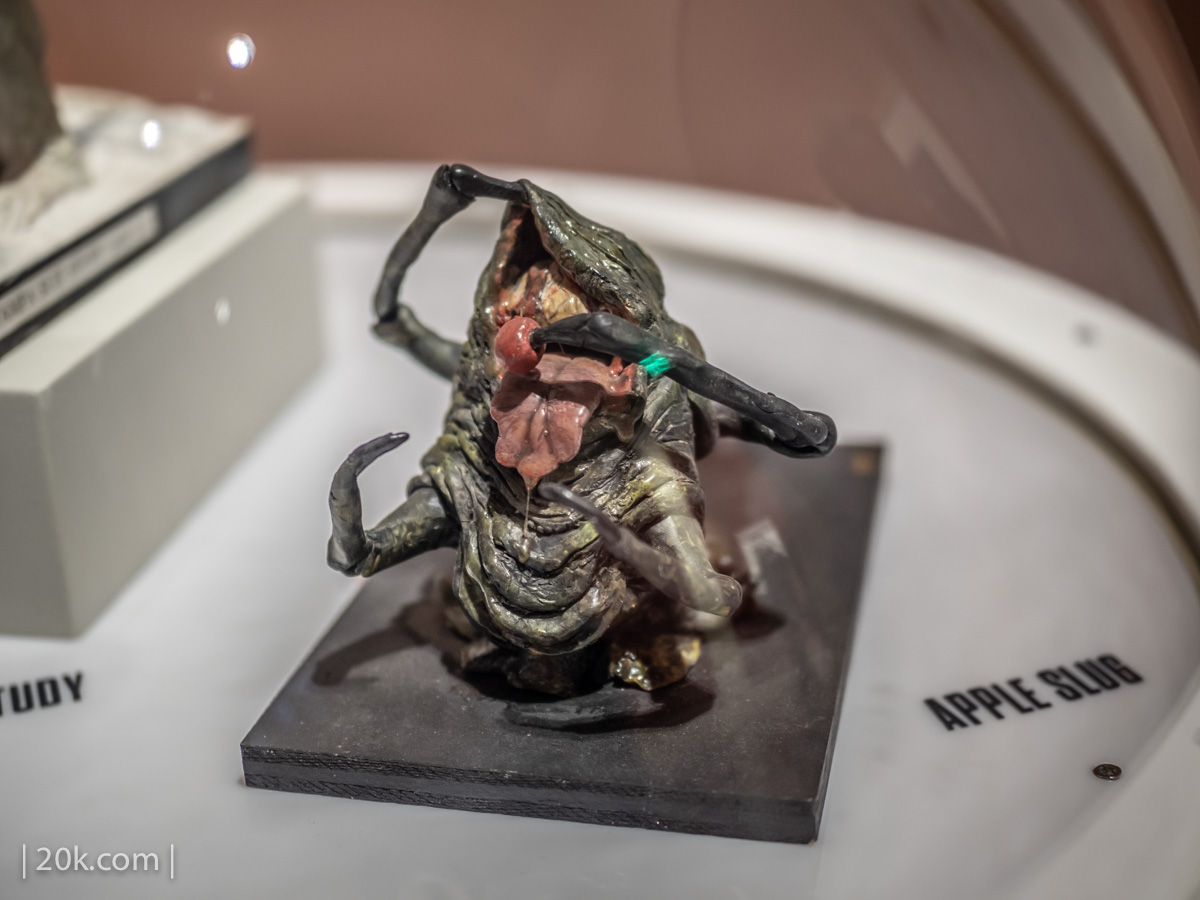
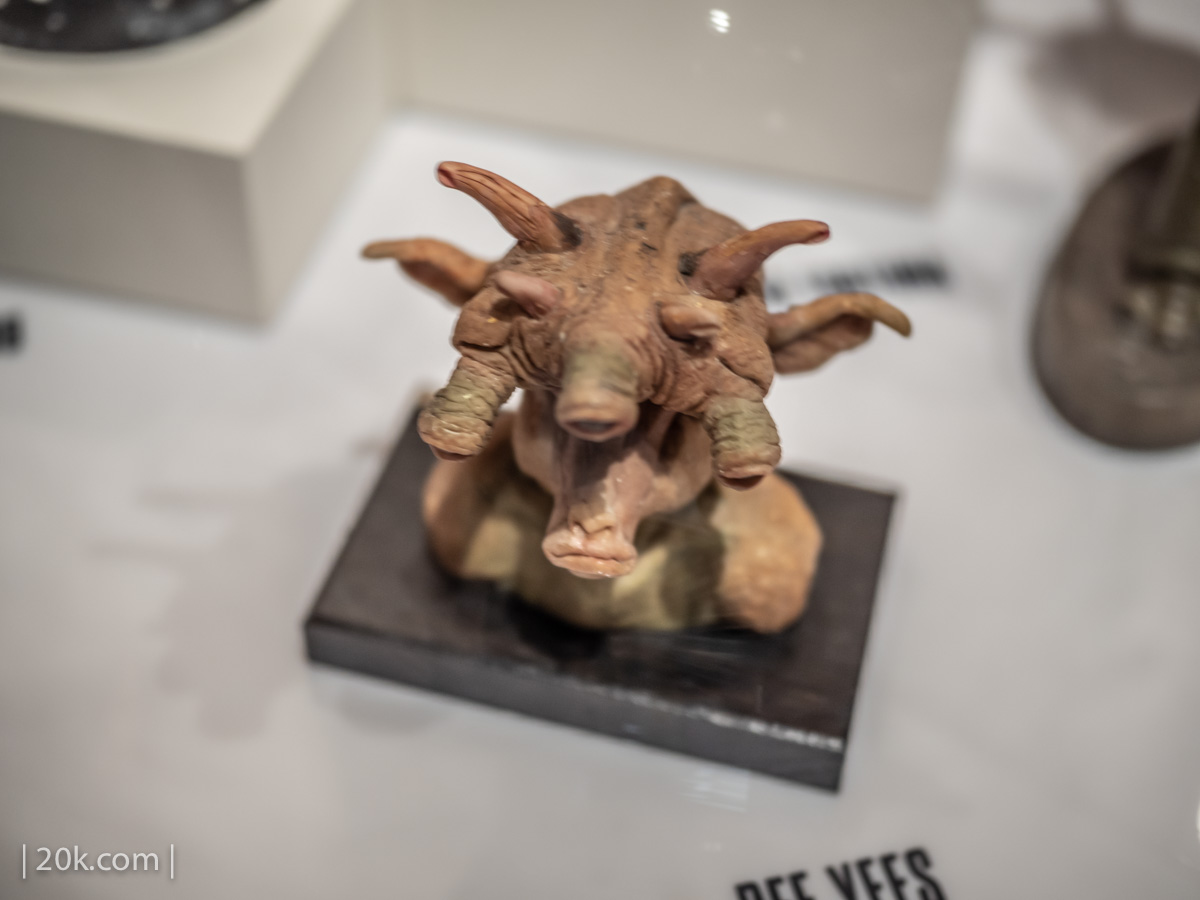
I continued to explore the exhibit, spending time examine the two Fetts, Boba and Jango, as well as a selection of senators from the prequels, and then arrived at a costume which it would seem Lucas was particularly proud of: the Darth Vader created for Episode III, Revenge of the Sith.
It is well known that Hayden Christensen, (Darth Vader in Episode III) was a full six inches shorter and leaner and more slender than David Prowse, the original Darth Vader, who was 6 foot, 6 inches, and built like a brick [out]house.
I had seen a proper Darth Vader costume at the Disney-MGM Studios which was, while not screen used, made from the film suit patterns for use in the park (I write extensively on theme parks’ bad practice of presenting replica film artifacts as authentic, although in this particular case, Disney did not do that). My point is that I knew how large and imposing Darth Vader was and is, and seeing Christensen’s suit in person wasn’t that.
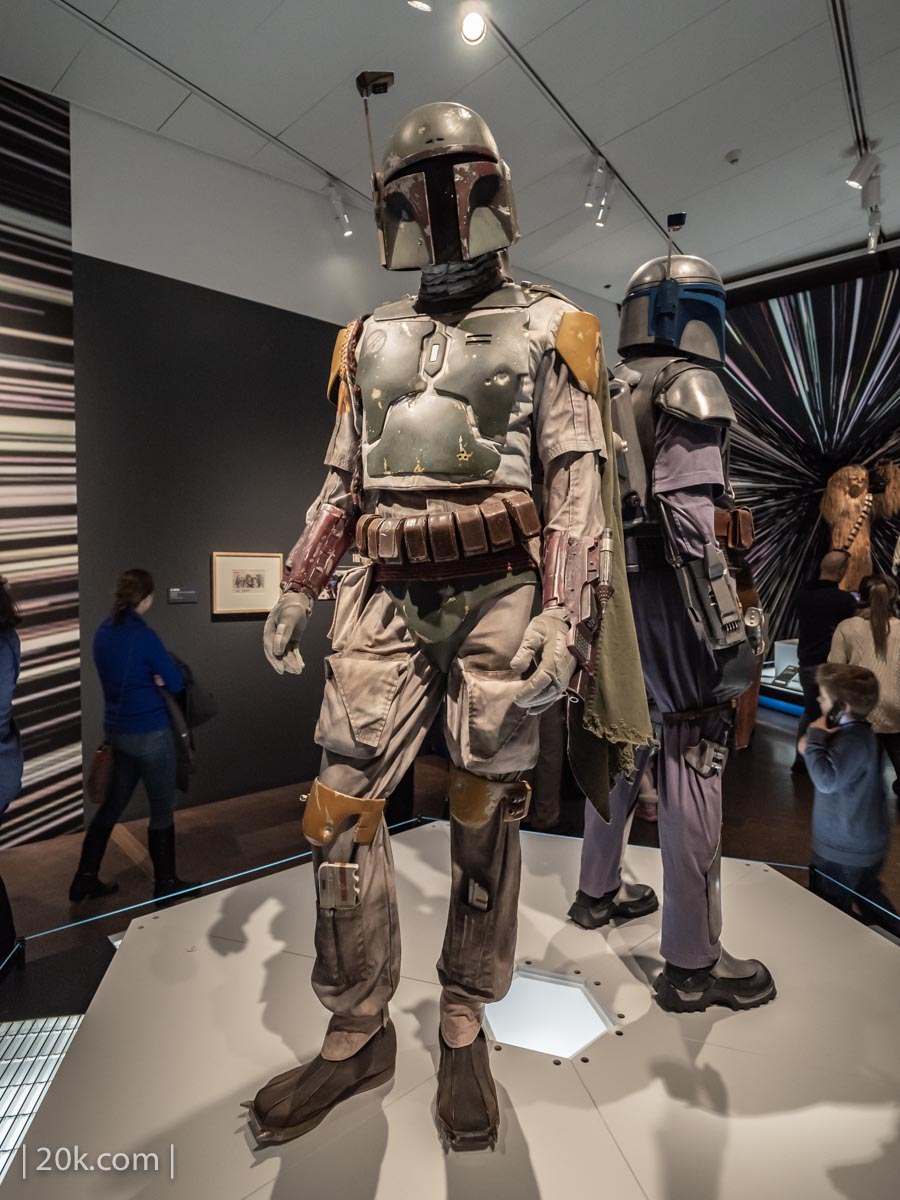
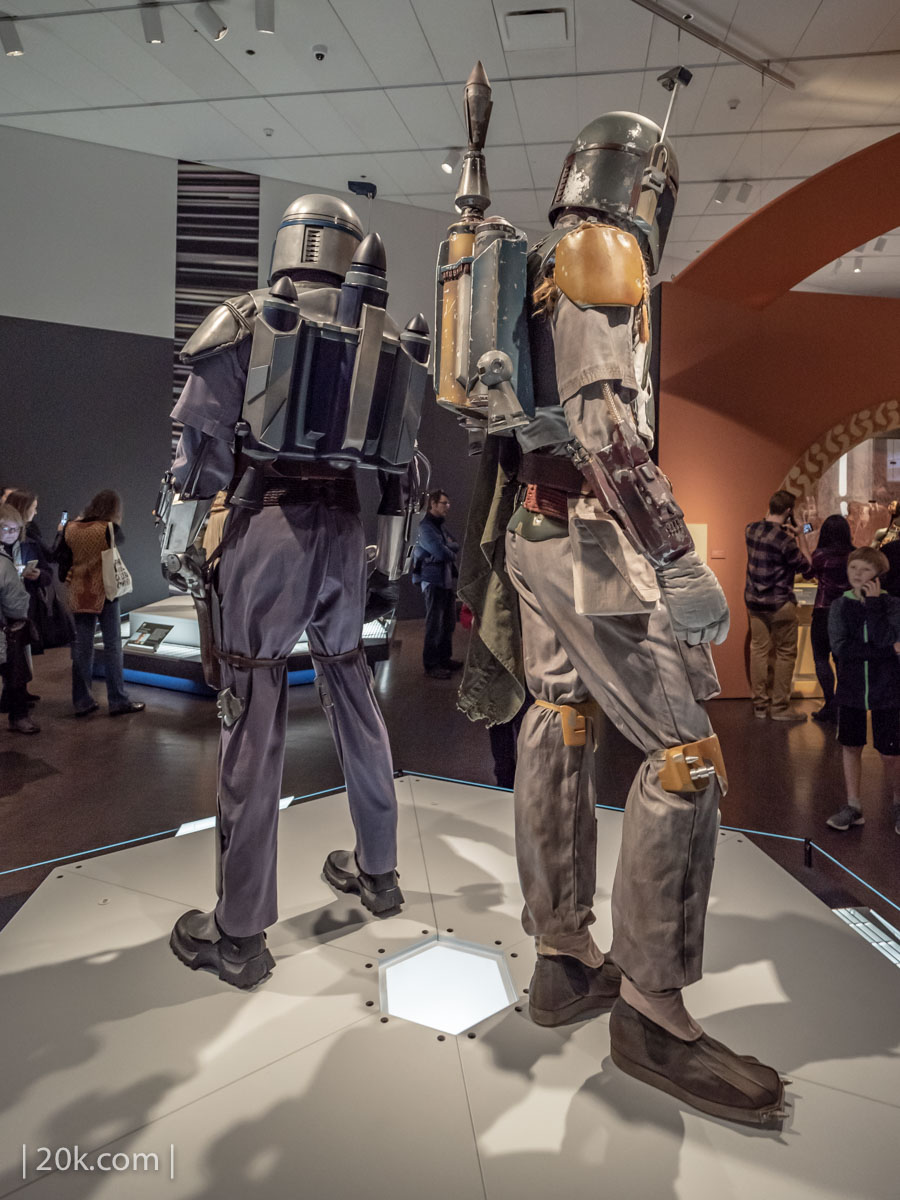
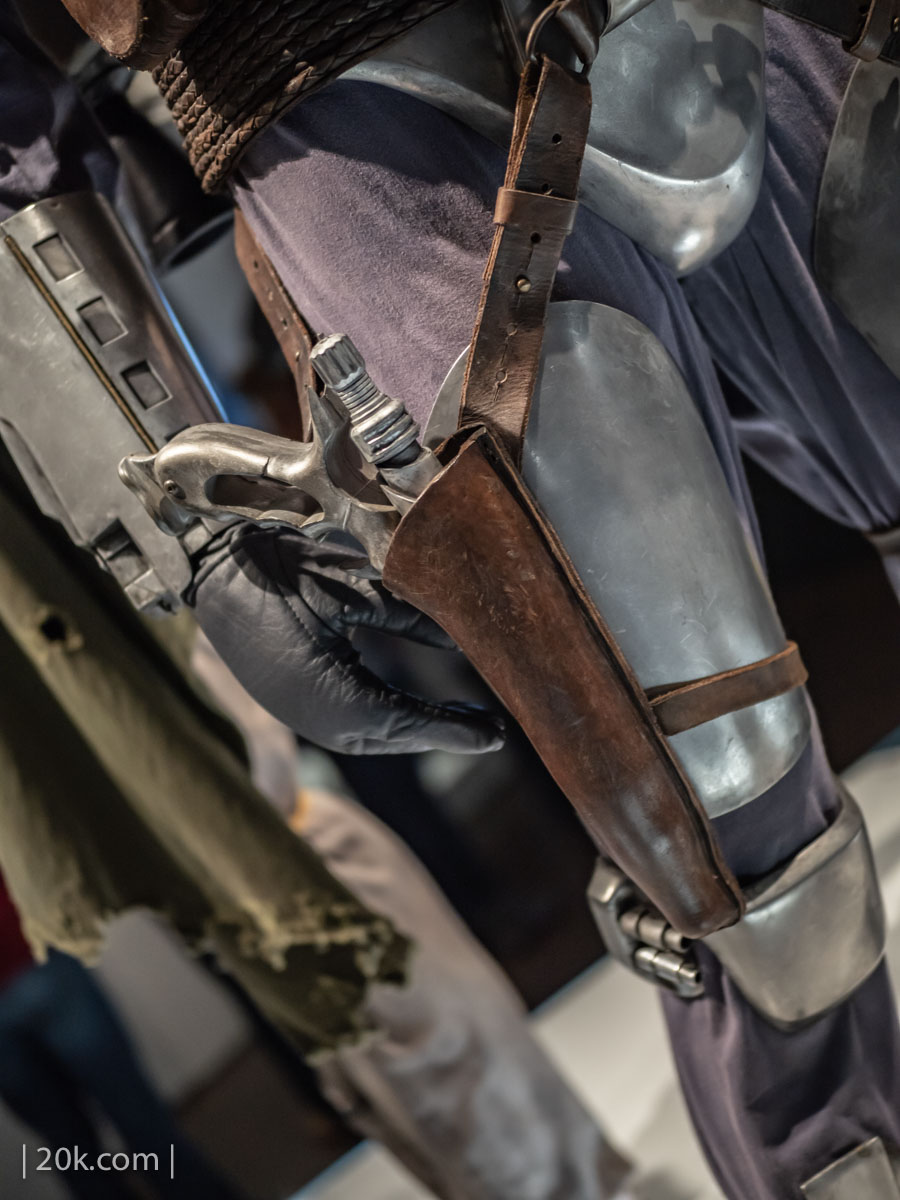
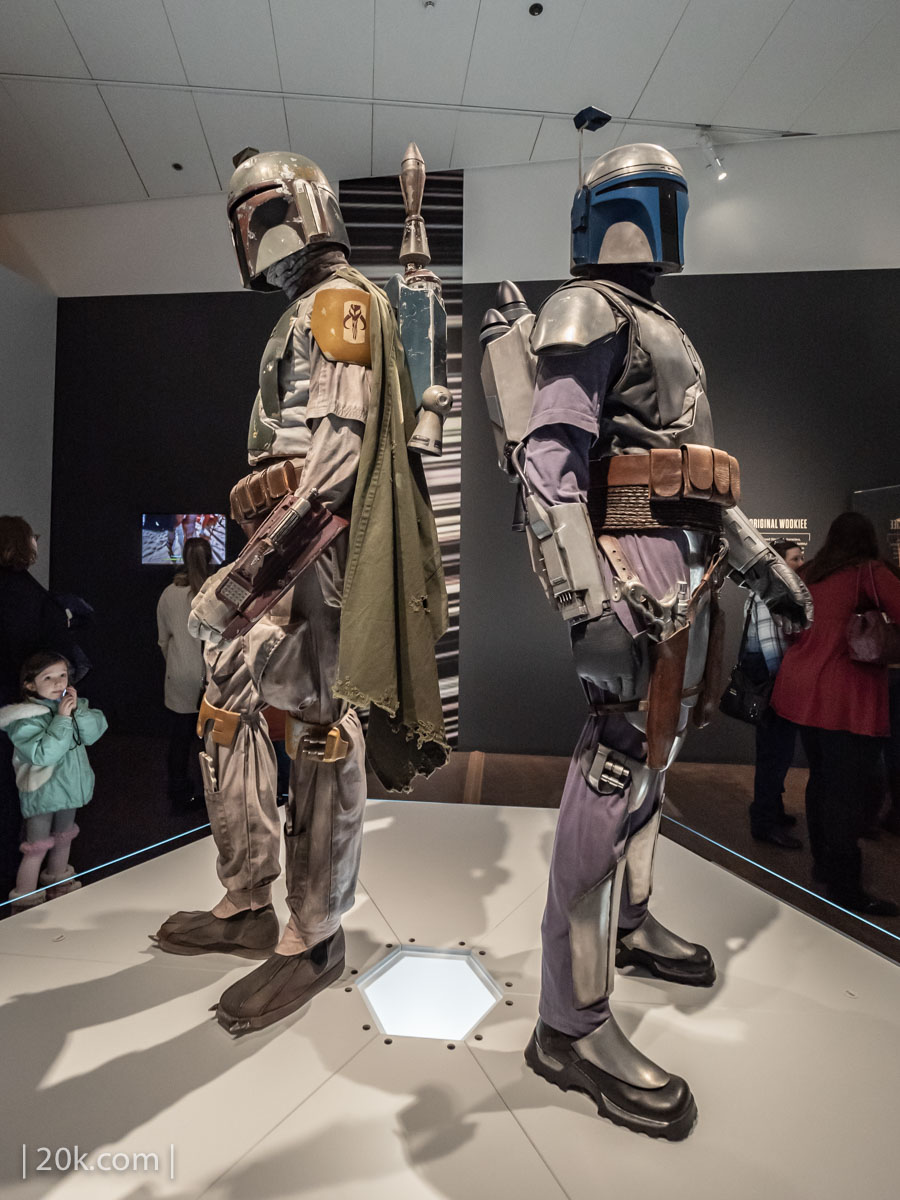
Below are photos comparing the Prowse-style costume (in 2004) to the Christensen costume (in 2017)
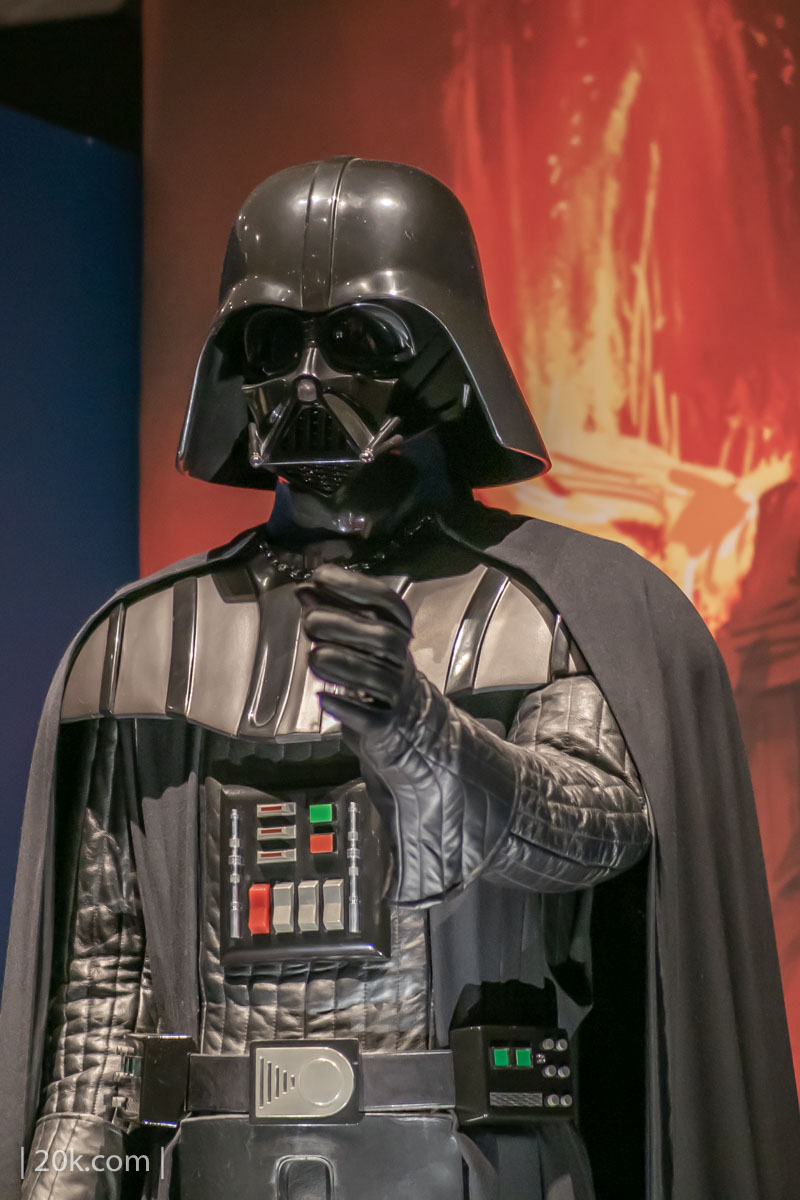
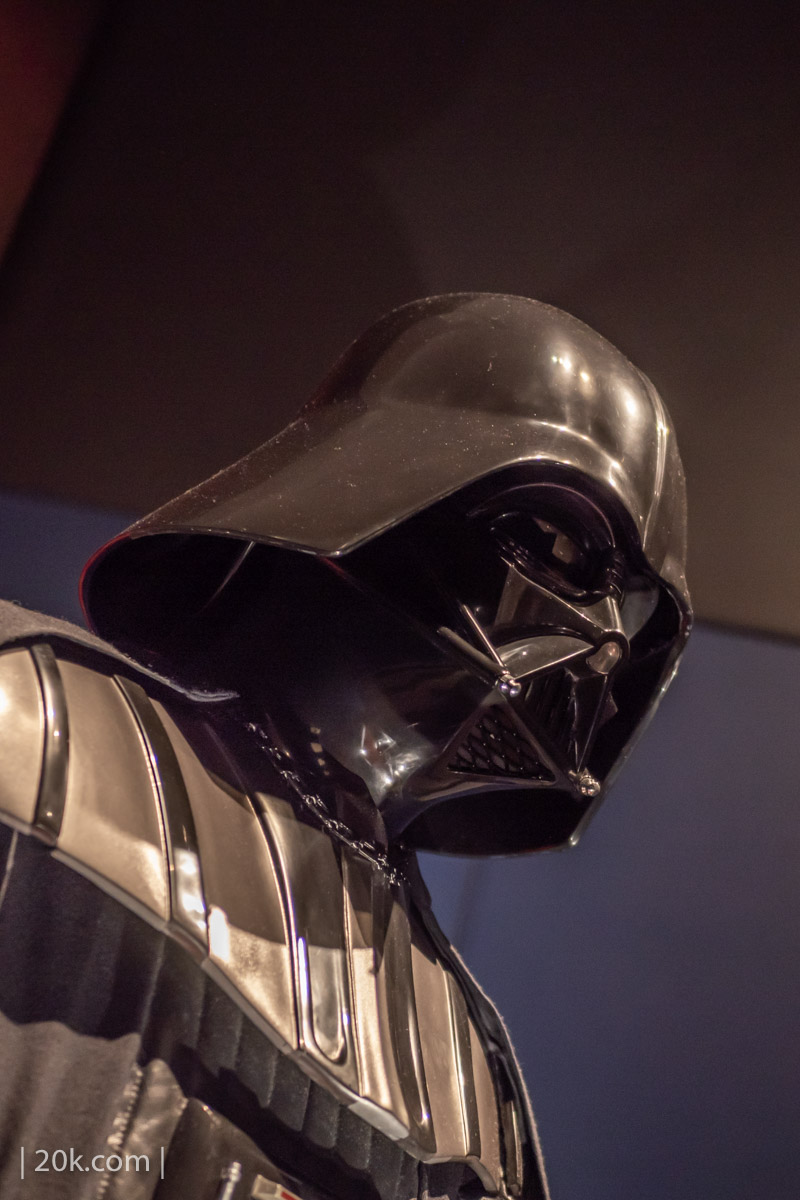
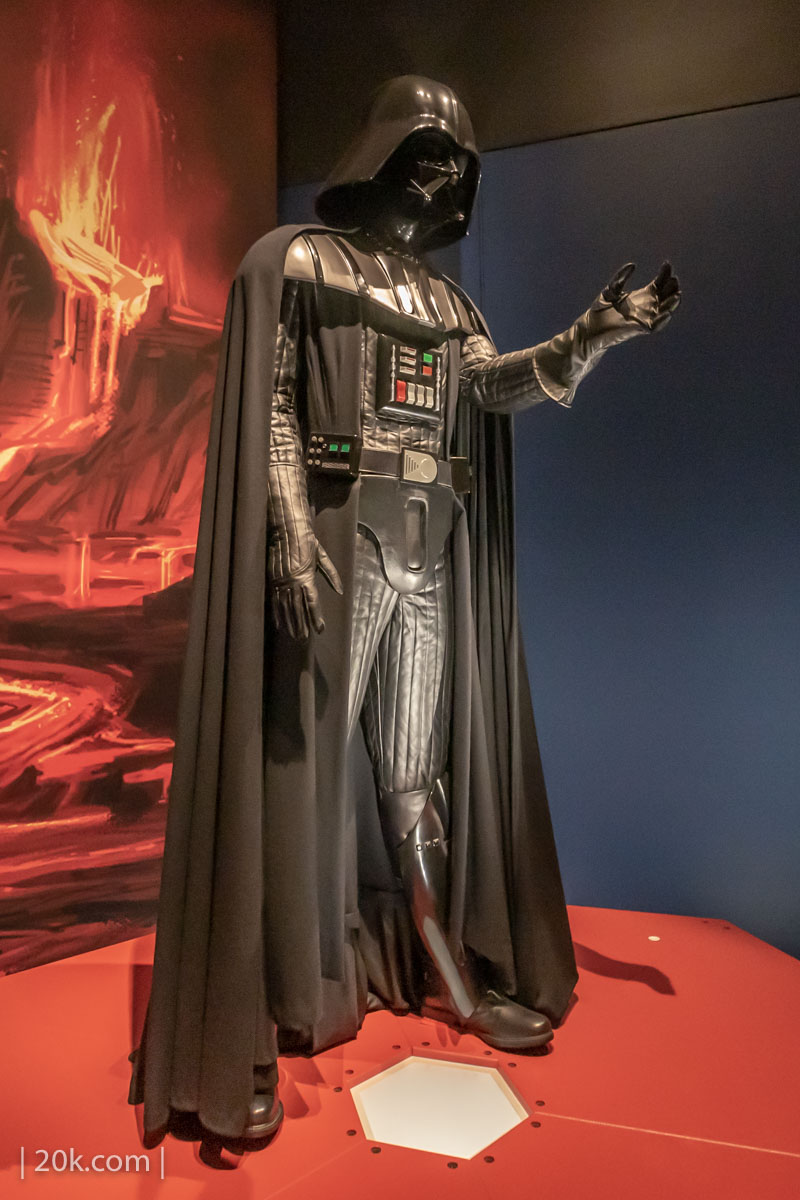
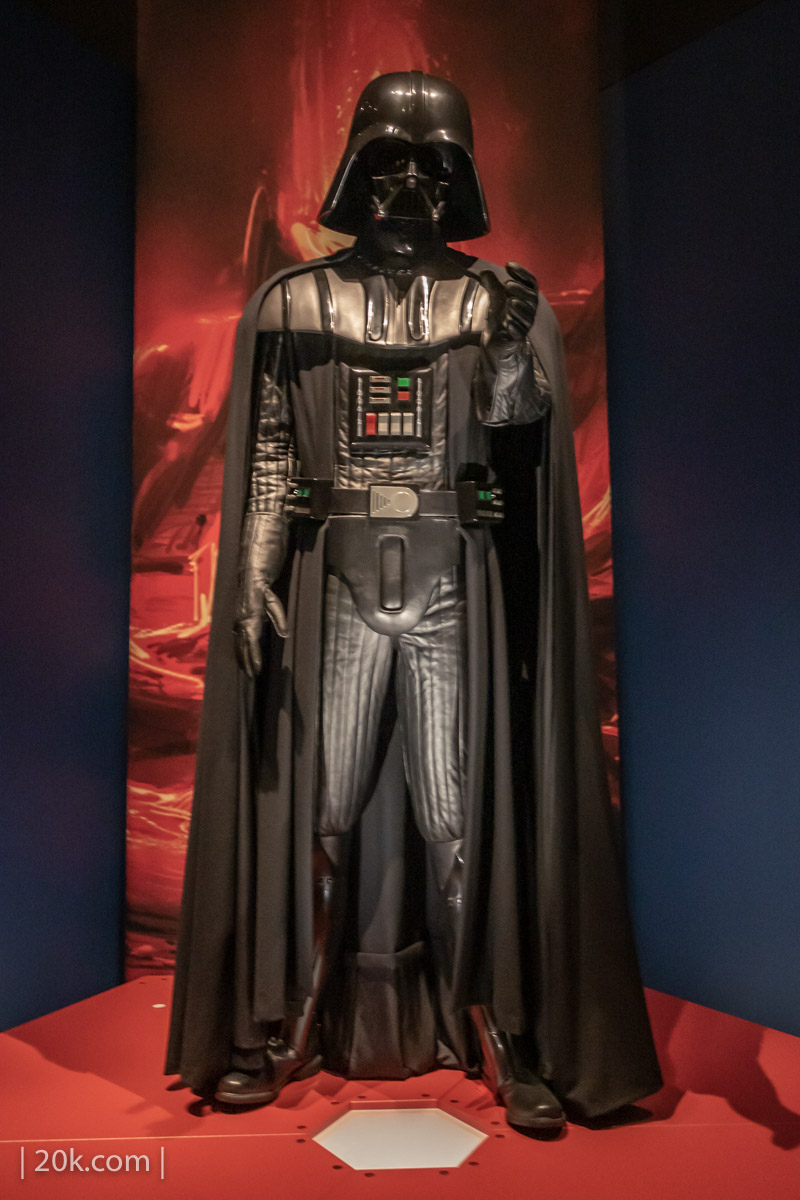
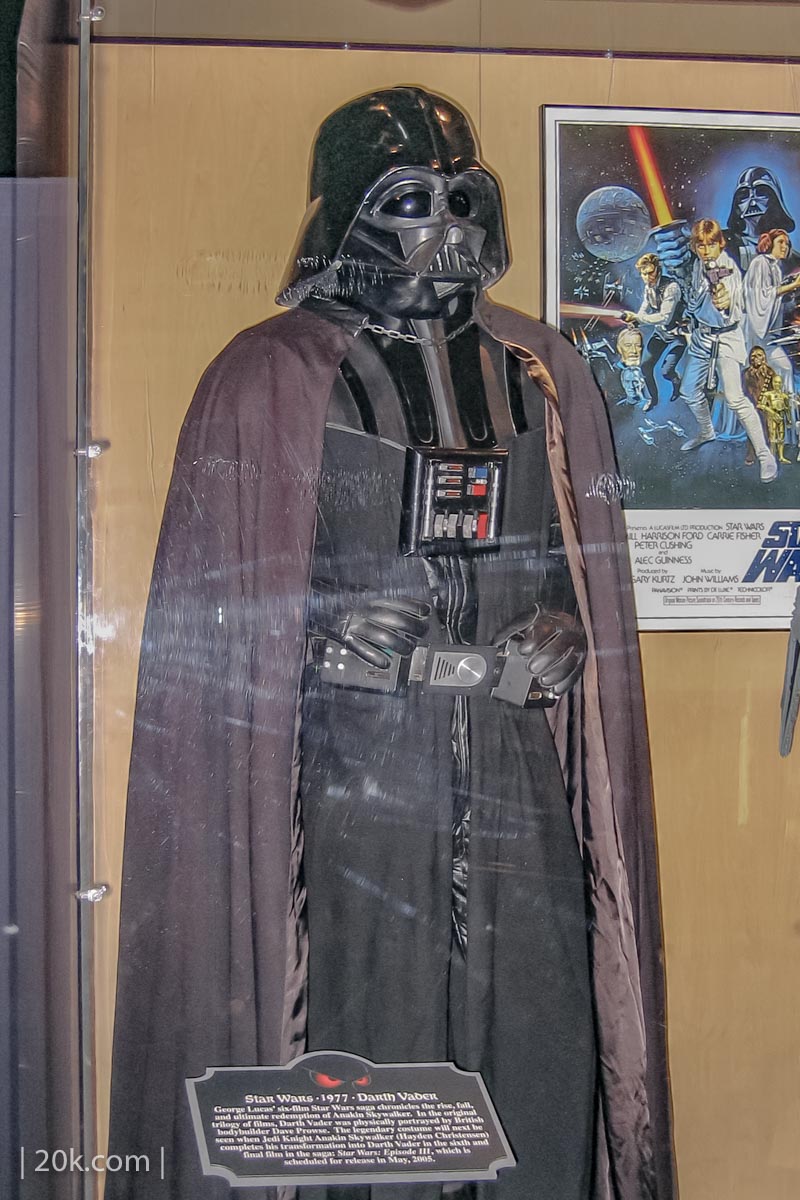
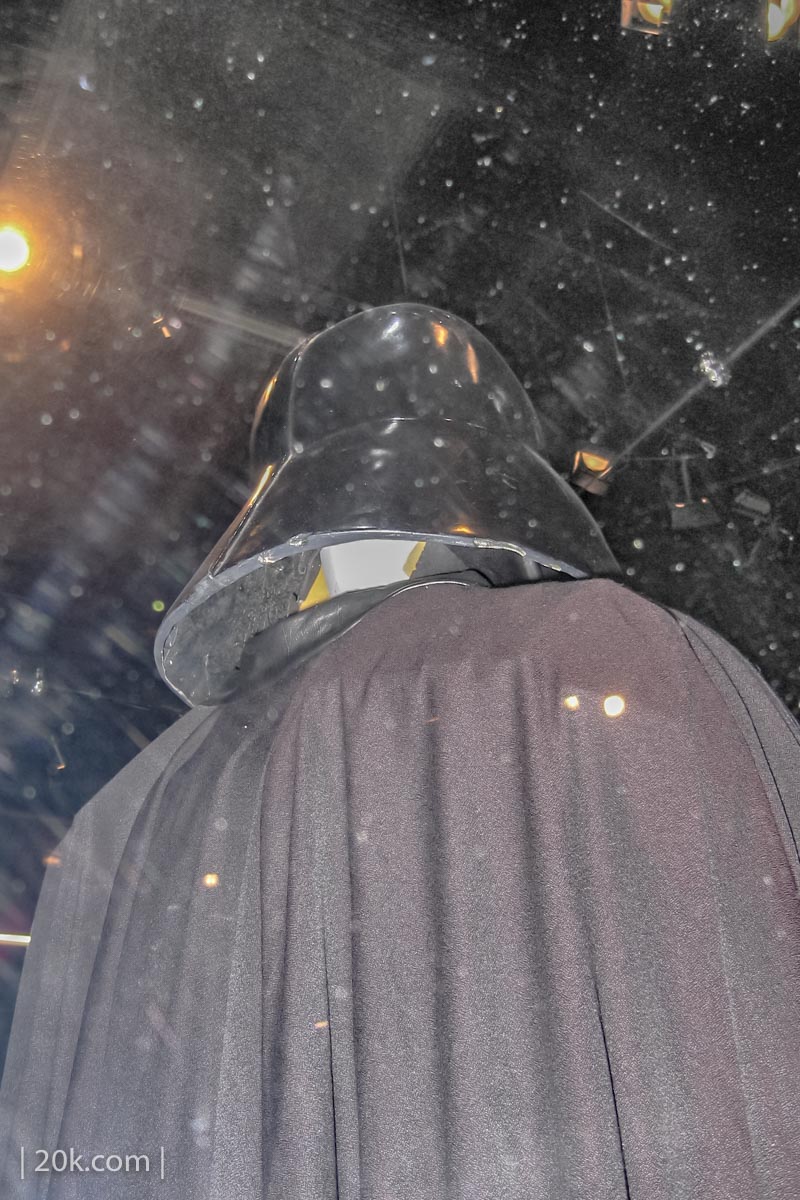
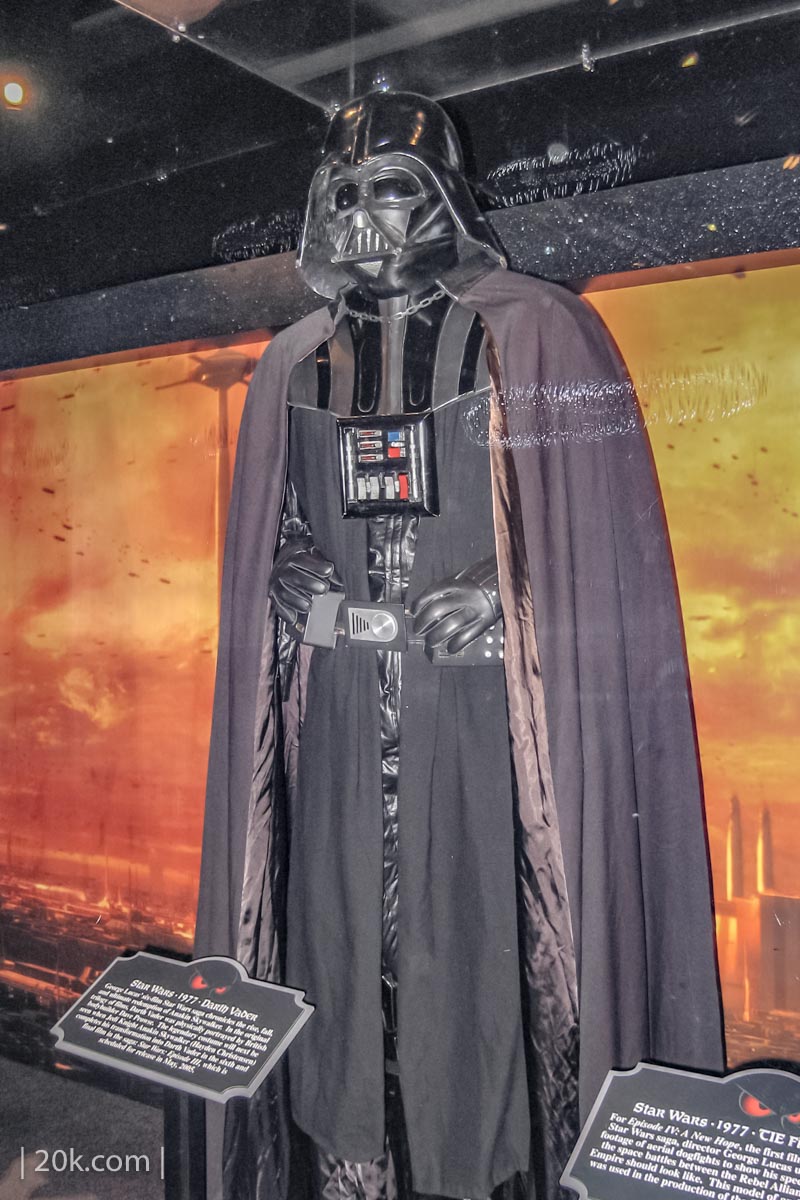
Putting scale to one side for the moment, there was something interesting about this new Vader costume: it was perfectly symmetrical, unlike the original. This was because the helmet was re-designed from scratch digitally, and 3D printed, as opposed to the original helmets, which were hand sculpted and cast from inferior materials, which is not hard to see in the films where the helmets had wavy lines or curves one side was a bit higher than the other. The difference between the two generations is very noticeable, and for the better. So, I suppose you take the bad with the good.
Another very interesting thing to see in the Vader section of the exhibit, was a Vader stunt helmet, used for lightsaber fights. It had transparent cheeks to allow the stunt double to see more than otherwise. While this sounds like a good idea in theory, I’m not sure how practical it was as the performer’s eyes were pretty much up against the lenses in the helmet. I guess I’ll never know as I can’t wear a Darth Vader helmet and see out of it since I wear glasses and don’t have contacts.

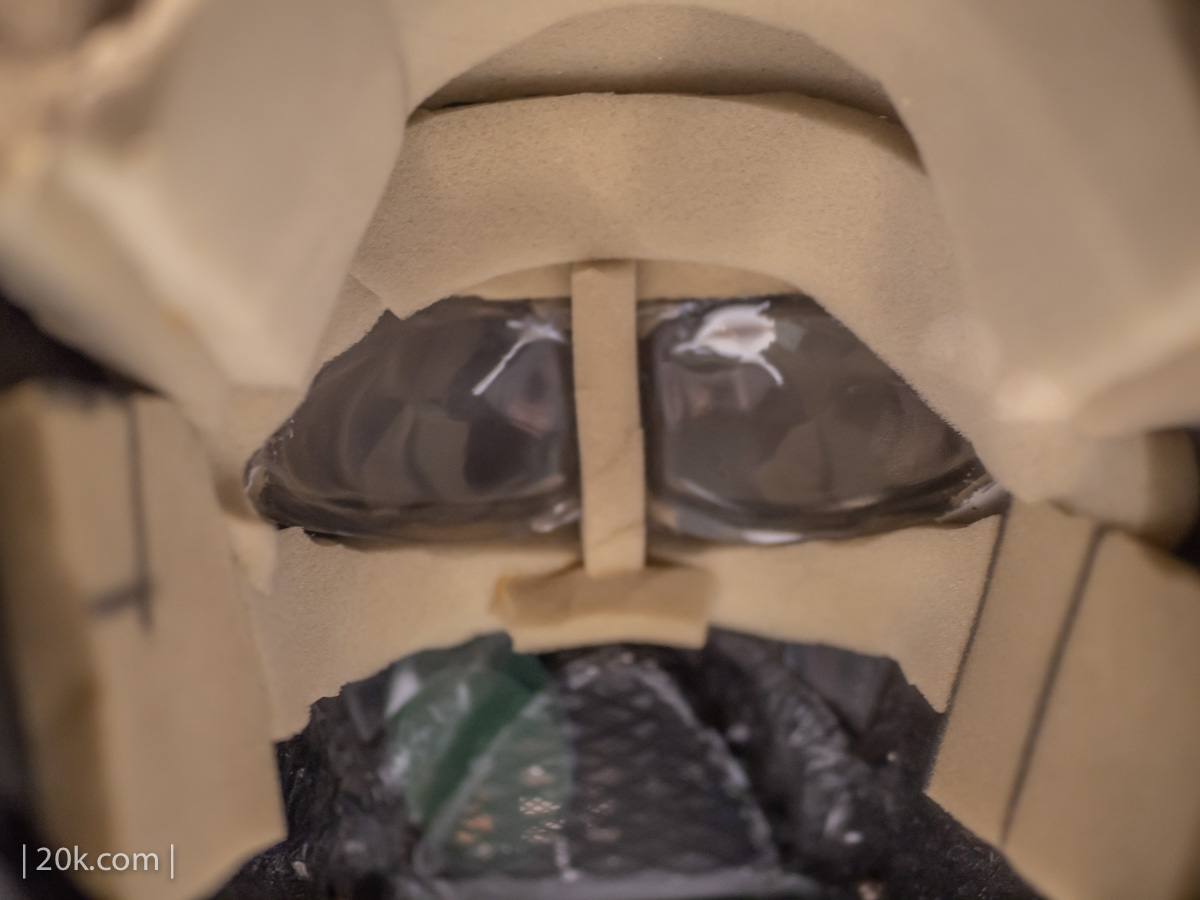
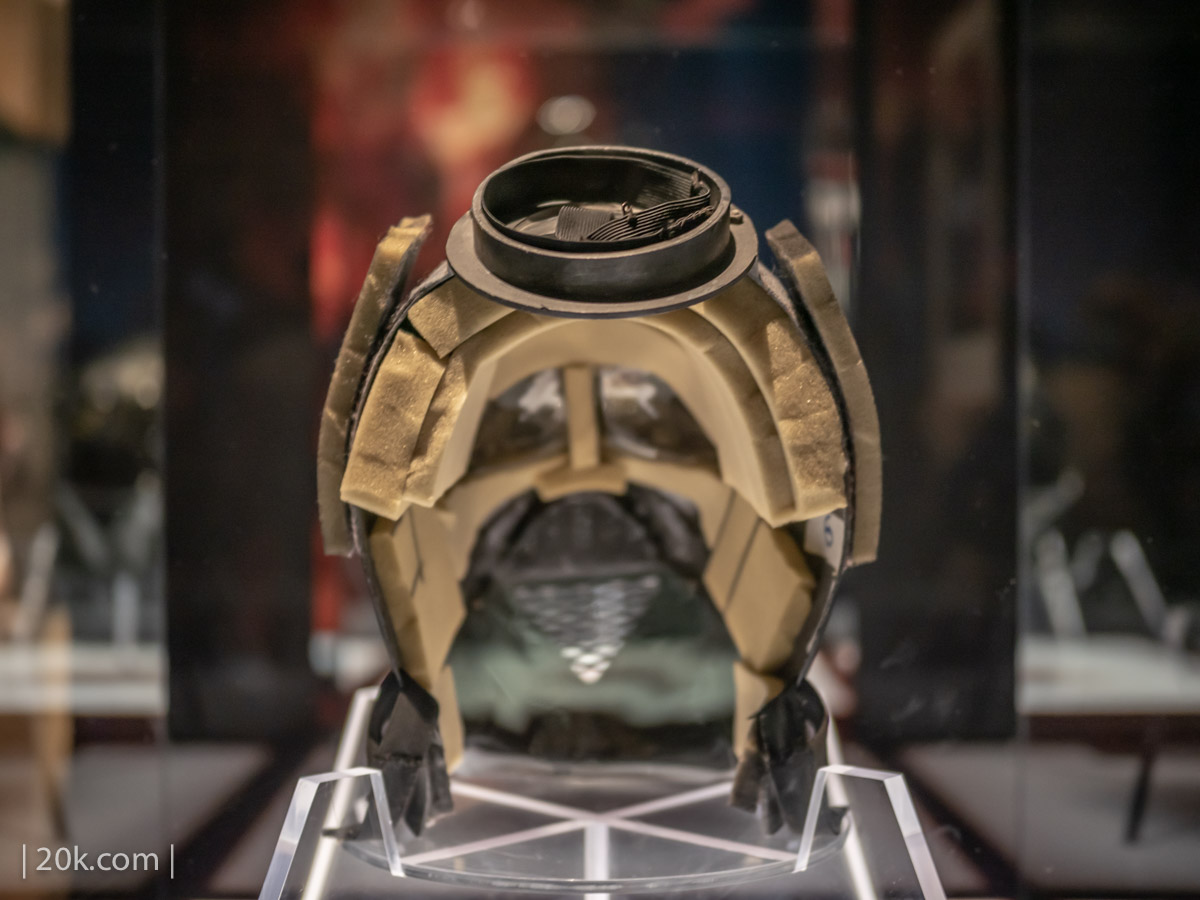
The exhibit ended with displays of Yoda, as well as an Ewok that was using captured stormtrooper helmets as drums in the scene from the end of Return of the Jedi. I had hoped Yoda might be opened up so we could see the mechanisms that controlled him, but unfortunately, no such luck. Just Yoda, standing there, frozen in time, along with some of his personal effects. Then, before I exited and walked through the gift shop, I realized I may never have this opportunity again, so I turned around and walked back to the beginning of the exhibit to do it all over again, and take more in.
I’m glad I did.
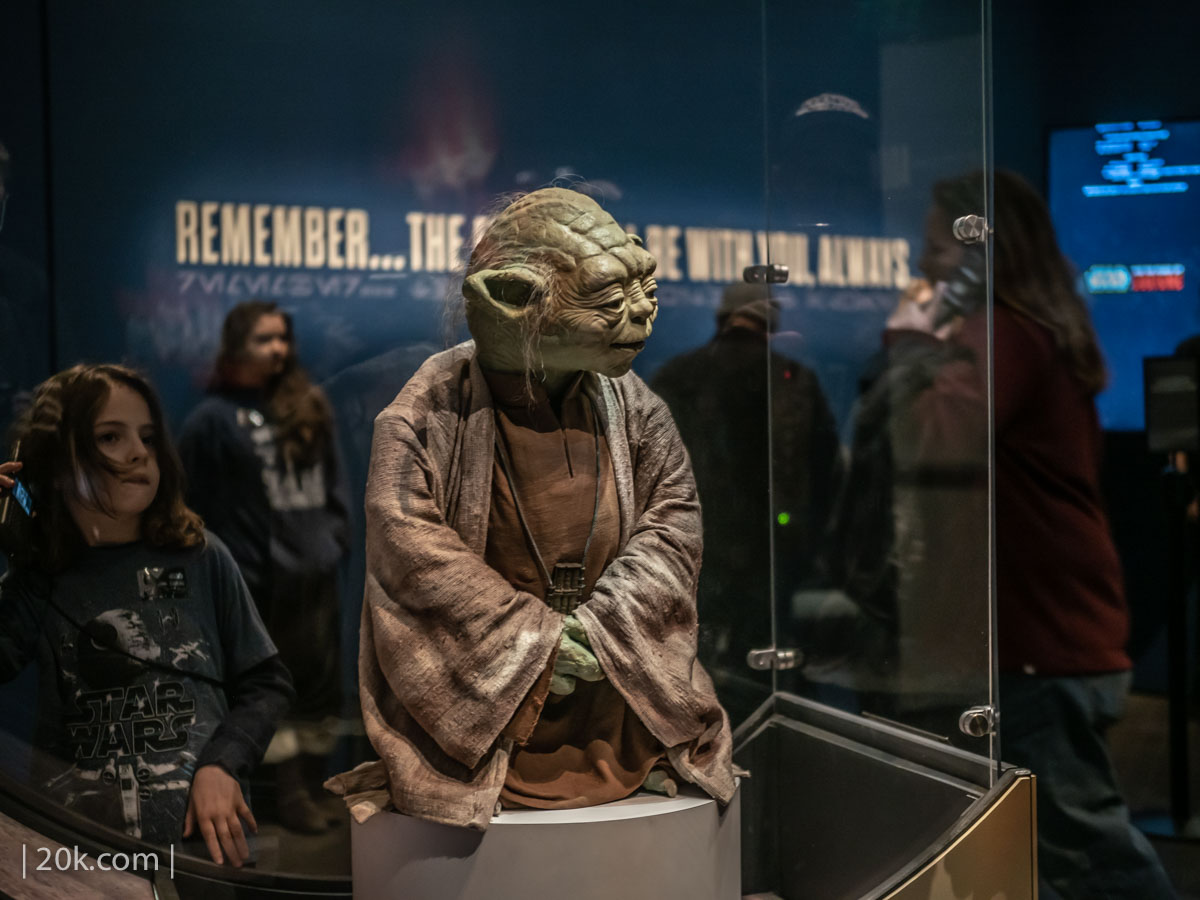
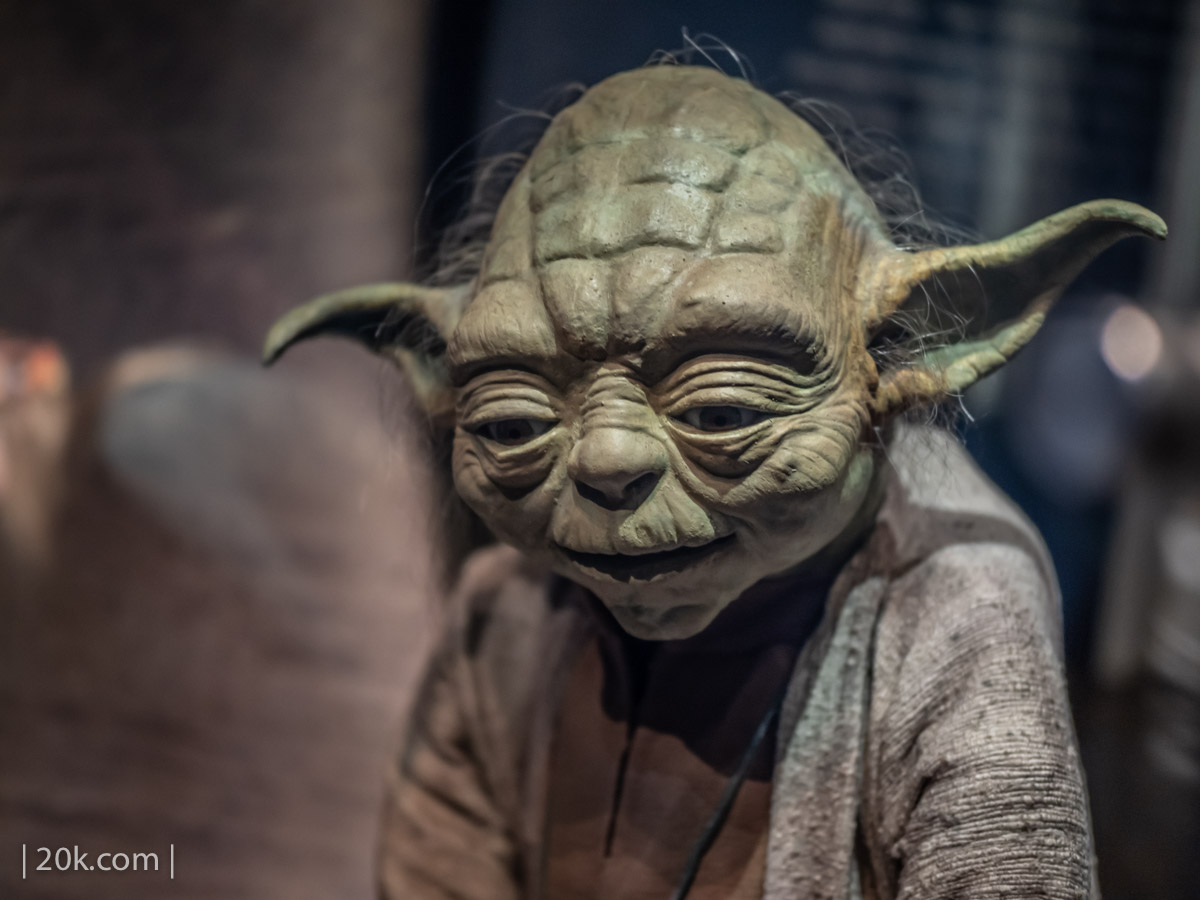
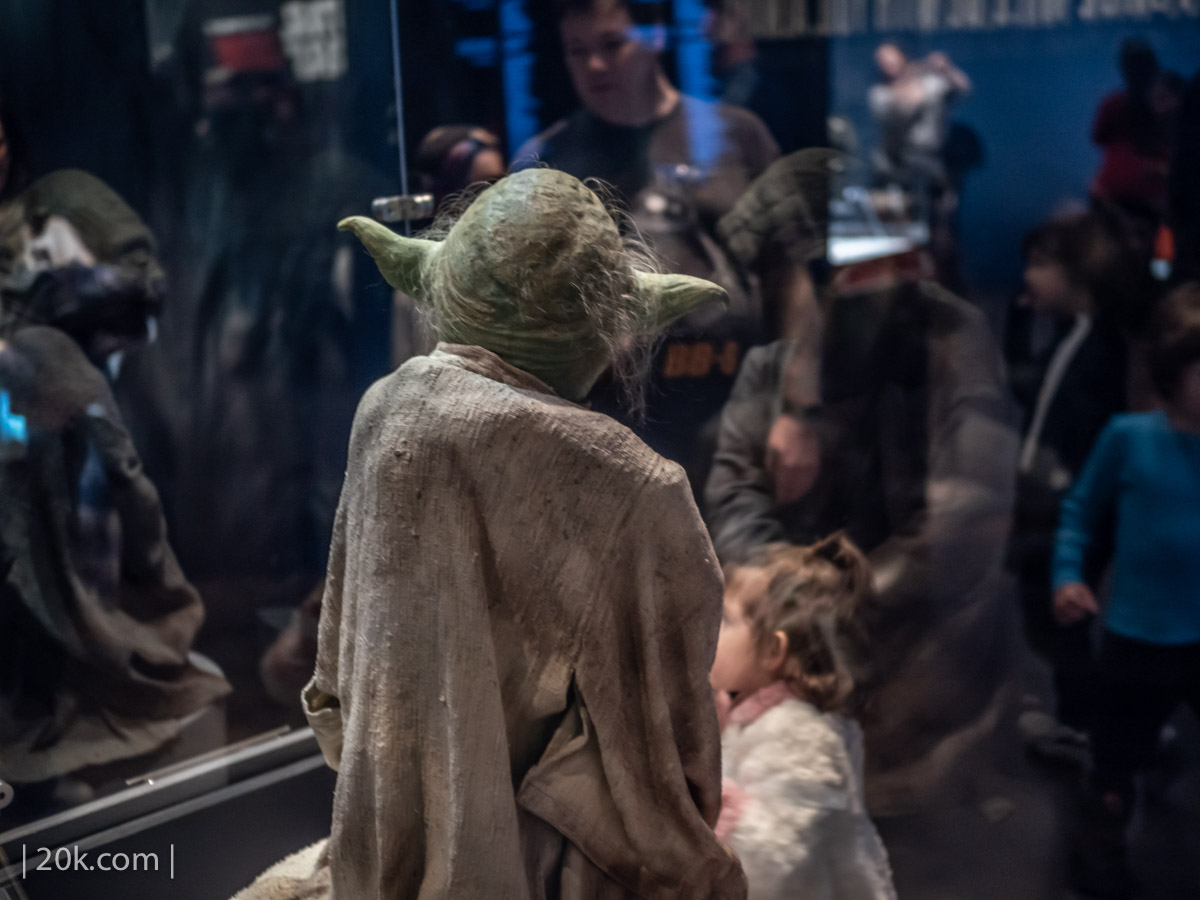
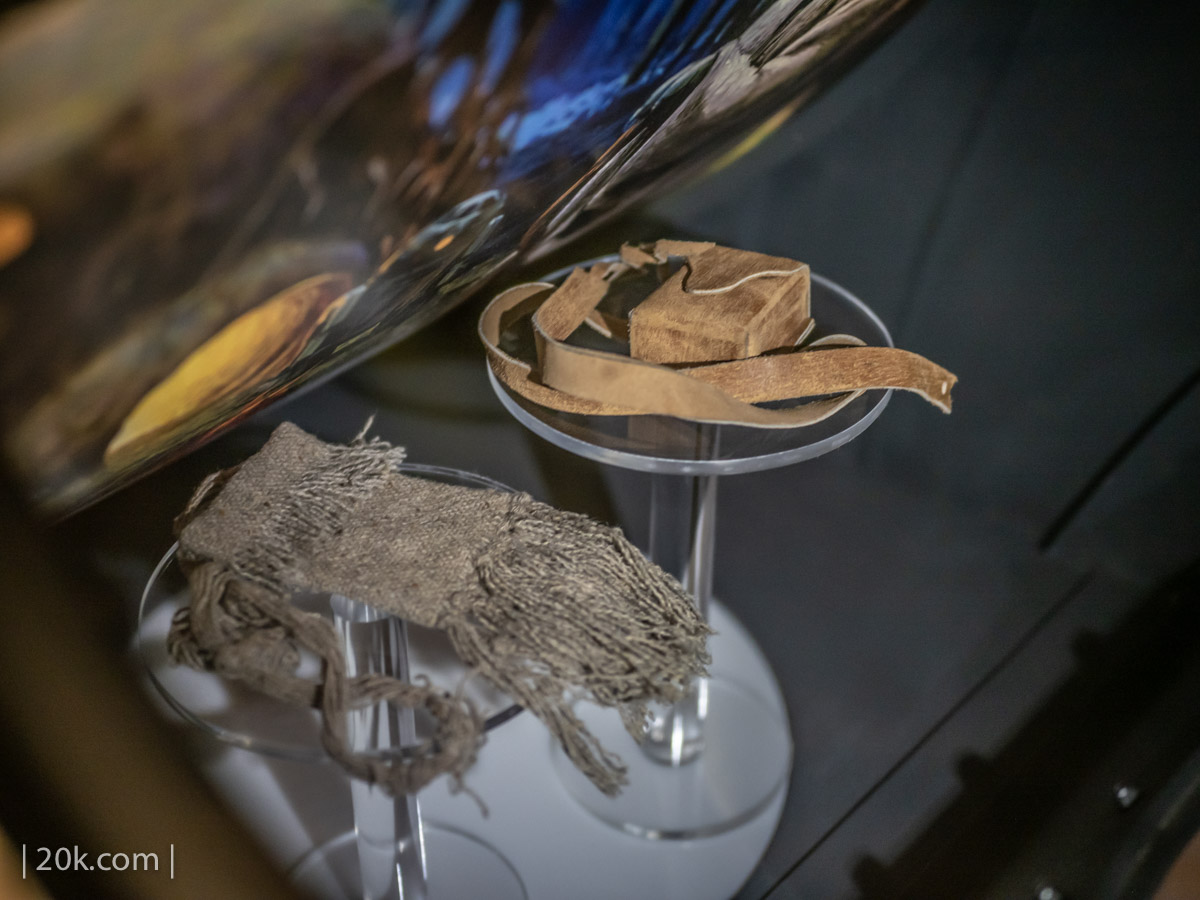
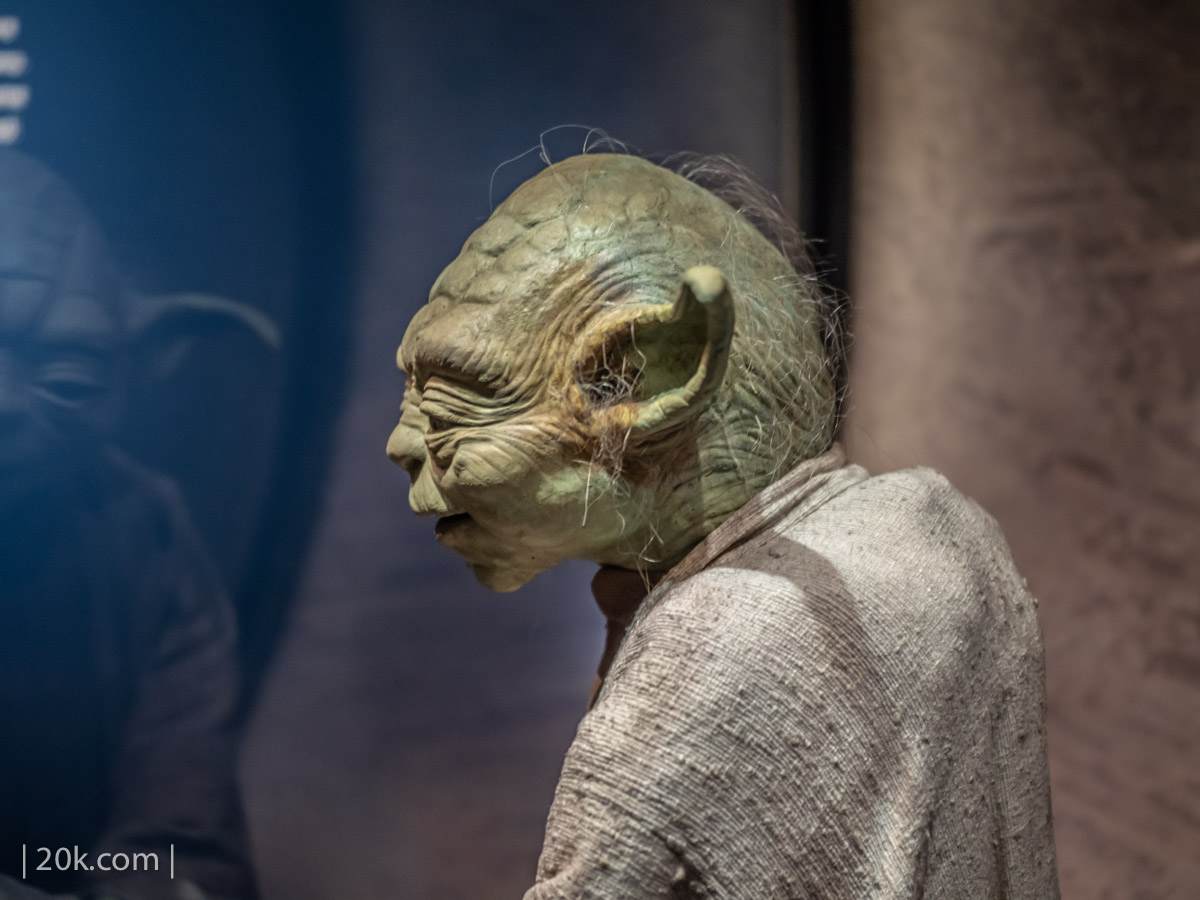
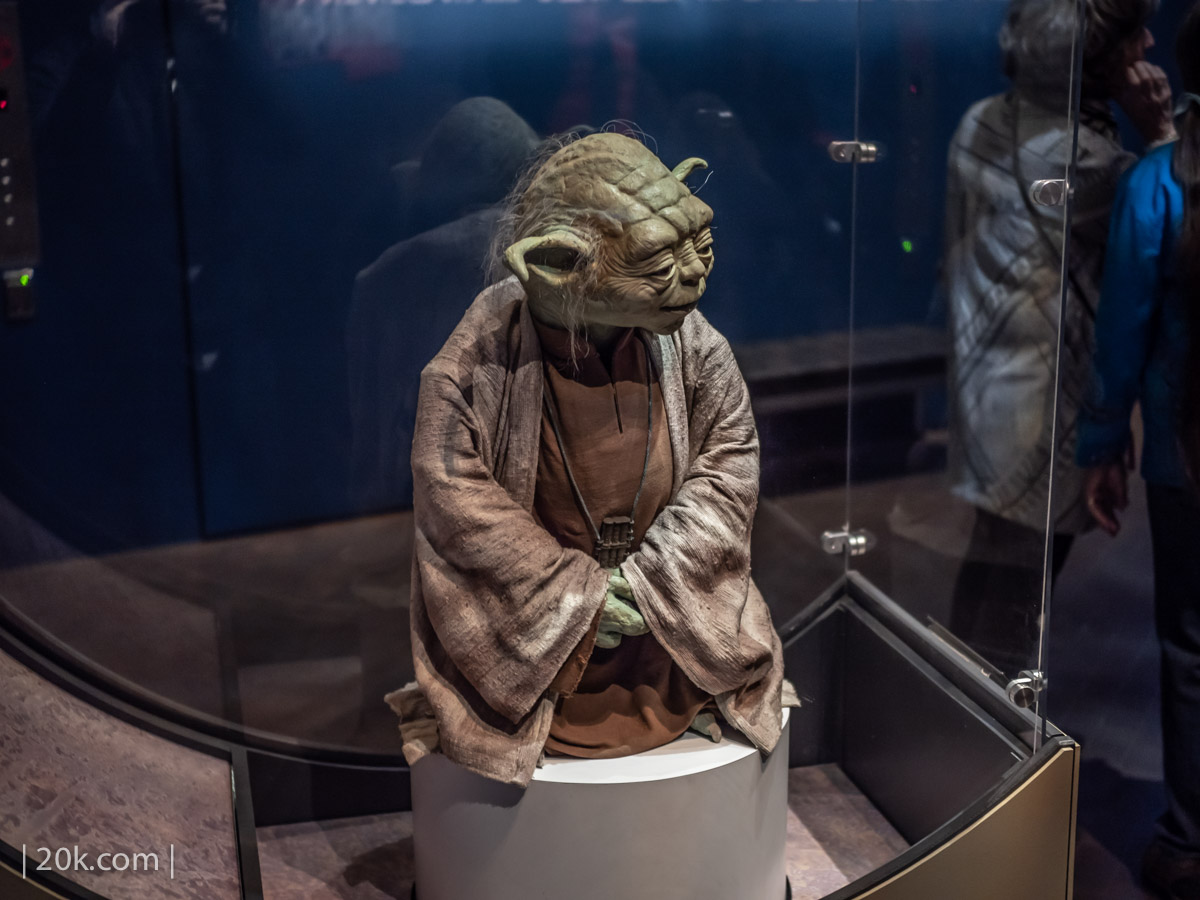
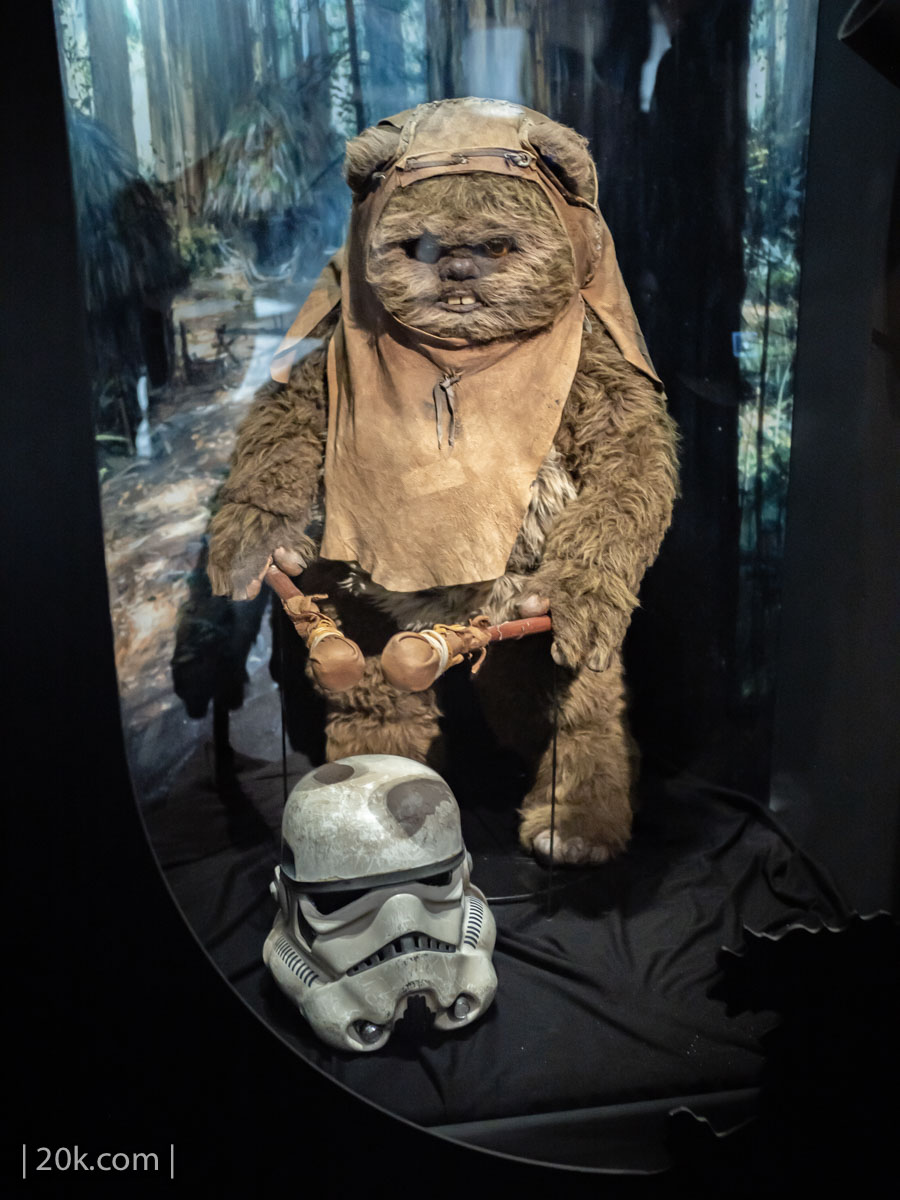
Below are additional photos.
